Cable Caballero
Forrest Heath III’s Joyride to Rebuild the Internet (Then Everything Else)
Welcome to the 751 newly Not Boring people who have joined us since our last essay! Join 254,975 smart, curious folks by subscribing here:
Hi friends 👋 ,
Happy Monday!
I’ve realized, writing this piece, that my job is to find and transmit a feeling.
When I first met Forrest Heath a year ago, I felt immediately that he was a special entrepreneur with the potential to build one of the world’s most important infrastructure empires.
Words are lossy, though. It’s taken me a year, a ton of conversations, even more research, a trip to Colombia, and over 33,000 words to put that feeling on paper.
This is my best attempt so far. The first, I expect, of many chapters in the story of Forrest Heath, Somos Internet, Autoridad Panandina, and the possibility of rebuilding the world’s infrastructure through vertical integration, lightness, and cashflow.
Let’s get to it.
If you want to jump straight to the online version: Read Cable Caballero Online
If you want it as a PDF, you can download it here: Cable Caballero PDF
If you want to listen on your Thanksgiving travel, I’ll have an audio version soon.
Today’s Not Boring is brought to you by… Vanta
Of the many ways we will talk about how to grow a startup today, we won’t talk about compliance. Not because it’s not necessary. If you want to generate revenue at scale, it is. But because Vanta’s got it covered.
Vanta helps growing companies achieve compliance quickly and painlessly by automating 35+ frameworks, including SOC 2, ISO 27001, HIPAA, and more. Start with Vanta’s Compliance for Startups Bundle, which has checklists, case studies, and videos with industry leaders.
Get it here, and get back to the things you should be focused on.
Cable Caballero
The hardest part of writing about Forrest Heath, III is figuring out where to start.
You might start in the backseat of a car, being driven, bag-over-head, through Medellín’s notoriously gangridden Comuna 13, to meet with the local “Duro,” “jefe de plaza,” or simply “gang leader,” about wiring up his comuna with better internet.
Record scratch, freeze frame, “Yep, that’s me. You’re probably wondering…”
Or in the passenger seat during Forrest’s frequent road trips, at age 16, from his home in rural North Carolina, 30 minutes outside of Chapel Hill, to visit his girlfriend in Washington, DC, just hoovering knowledge from audiobooks and podcasts at 3x speed as he sits in Beltway traffic, and actually retaining it, hanging each new piece of information in the right place on the growing scaffolding of his budding worldview.
I could bring you with me to a night in late August at the top of one of the hills surrounding Medellín (not one of the fancy ones, I’m told), where Forrest is hosting a BBQ for his team, his dad, and me on the bare concrete slab that will become the 15,000 square foot home that Forrest taught himself architecture and AutoCAD to design.
Better yet, join me in the front seat of his pickup truck as he rips up the windy, part-paved-part-dirt road to his casa, and back down afterwards, with his executives riding in the bed, drinking beers and laughing as Forrest intentionally hits potholes to bounce them around a bit. It’s all in good fun.
Or we might begin in Mexico City in October, at a gathering of powerful Latin American families, investors, policymakers, and entrepreneurs, sandwiched between Thursday’s Milken Conference and the weekend’s F1 Mexico City Grand Prix, where, upon arrival in t-shirt and sneakers (his nice shoes; normally he sports rainboots) he proceeds to captivate the former Vice President of Colombia with his observation that all energy, if you trace it back, is either fission power or fusion power. Later that evening, as attendees hobnob (as one does at these things), I find Forrest tucked away in the corner of a room off the courtyard, engrossed in an article about the United States’ plans to build an island off of Santa Monica “to launch Boeing’s 300-seat Mach 2.7 supersonic jet from two 15,000-foot runways.” “This is how I relax,” he laughed.
None of those vignettes capture the full story of the person I believe will come to be seen as one of the most exceptional entrepreneurs of this generation, a gringo who started what has become the third largest telco in Medellín and decided, while growing that business, both within existing markets and to new ones, to start a second business building data centers attached to hydroelectric power plants (Colombia’s mountains produce incredibly cheap power; it’s transmission that’s the problem), and convinced two of America’s best venture firms to back them both, though, if it’s even possible to capture. I will certainly try my best.
And the best place to start, I think, is the first time I met Forrest Heath, III, for a thirty minute coffee that became a three-and-a-half hour whirlwind at Public Records in Brooklyn, at the end of which I agreed to commit the first slug of what I hope to be many tens of millions of American Dollars to the Cable Caballero with a master plan to build a vertically integrated infrastructure empire.
A Forrest Comes to Brooklyn
“Man, your Vertical Integrators series has made it so much easier to pitch Somos to VCs,” was the first thing Forrest said to me when all six foot five in rain boots of him strode into Public Records, carrying a big backpack and vibrating from what I would learn is a Gulliverian amount of daily coffee consumption.
(“I’m like a coffeed-up golden retriever that just likes tinkering and building stuff,” he told me later, once we knew each other well enough for him to compare himself to a dog.)
We sat down and ordered more coffee and I started buzzing, too. Hearing Forrest explain Somos was like watching those essays on Vertical Integrators come to life sporting a mustache and ponytail.
The idea behind Vertical Integrators is straightforward. We have better technology today than we did when the dominant incumbents in physical industries were born. They have too much invested in the old architecture to completely rebuild with new technology, so startups can build fresh with modern technology to create products that are better, faster, cheaper than incumbents’, at higher margins. Startups, then, should be able to compete directly and win, build bigger businesses, even, than the incumbents they replace.
When I wrote those essays, I didn’t have telcos in mind. I thought they were too deeply entrenched, often literally, and that the CapEx required to compete would be far too heavy a burden for any startup to bear.
Cable Cowboy, Mark Robichaux’s biography of TCI and Liberty Media CEO John Malone, is one of my favorite business books of all-time. It’s basically the story of the insane and harrowing financial engineering required to wire up the world. Initially a small and fragmented industry driven by actual cowboys who just wanted to pull a TV signal for their rural communities, telcos had consolidated to the point that only a few giants - Comcast, Verizon, AT&T, T-Mobile, and Charter/Spectrum - survived.
In his new autobiography, a recently-released first-person version of Cable Cowboy called Born to Be Wired, Malone explained the logic:
It was all quite simple—a virtuous cycle that would help us gain the advantages of scale economics. Buying more cable systems would bring in more paying subscribers. More paying customers meant higher cash flow and lower costs in the form of bulk discounts for networks. Increased cash flow allowed TCI to borrow more money and pay the higher total interest costs on it, which we used to buy still more cable systems.
And, like, what is a startup going to do there? Come up with a cheaper way to build physical infrastructure?
Yes, Forrest explained. Exactly.
Over the next 210 minutes, interspersed with thoughts on the right way to build nuclear, praise for Ian Brooke’s skill as an engineer, and novel theories on the US-China relationship, Forrest laid out a vision for what Somos would become with a combination of clarity, depth, and energy that I’ve come to see as his signature style.
The High-Level Pitch for the Forrest Infrastructure Universe (FIU)
This is the gist of the pitch Forrest gave me at Public Records.
Somos is a vertically-integrated infrastructure company whose first product is internet in Medellín, Colombia.
It is not a traditional challenger Internet Service Provider (ISP). Most challenger ISPs are just wrappers on someone else’s infrastructure, basically marketing companies. They’re low CapEx, because they don’t build much, but low margin, because they have to pay to their infra providers and equipment suppliers. Crucially, they don’t make the internet fundamentally better or cheaper, because to do that, you have to rebuild the whole stack.
Even the traditional telcos, the ones who build, own, and maintain the networks, kind of suck. They have $0 R&D line items. They outsource their research and development to vendors like Huawei, Juniper, Cisco, and Nokia, and get stuck paying ever-higher prices for network hardware when they have to make upgrades every few years. They are high gross margin businesses with recurring revenue, but they have to dump those margins back into CapEx in a never-ending race against decay and growing customer demands.
Plus, their PON (Passive Optical Network) network architecture – so named because it uses passive optical splitters to share bandwidth among multiple users – means that they need to decide how many users split each fiber connection upfront, and locks them into both the architecture and vendors because of OLT (Optical Line Terminal) and ONT (Optical Network Terminal) compatibility, which is why changing anything is so expensive.
Competing with telcos at their own game, or building on top of them, is a losing proposition. They have too much financial muscle. Competing with them by playing a new game, however, could actually work. They have atrophied engineering muscles. They’re sitting ducks.
Somos is building a vertically-integrated internet network, rebuilding the full stack from fiber infrastructure all the way to custom routers and the software that manages it all.
It is building a network based on an Active Ethernet architecture borrowed from data centers. We will go into the details, but the easiest way to think about it is this: whereas traditional telecommunications networks are physically complex, requiring expensive hardware that needs to be upgraded every 3-5 years, Somos’ network is physically simple and pushes complexity to software.
What that means practically is that Somos is currently spending $20 of CapEx per homepass (the cost to build out network infrastructure to reach a potential customer, whether or not they actually subscribe to the service), $7 for hardware and $13 for labor. Incumbents in Colombia pay $100 per homepass in dense urban areas, and incumbents in the US pay $500-1,000.
Incumbents not only pay more, they pay more for worse networks. Part of the reason Colombia is cheaper than the US is that Colombian telcos split their optical signals among 128 or more customers, versus 32 in the US. CapEx per homepass goes down at the expense of building a meaningfully worse network.
Because of its structurally superior cost structure and network architecture, Somos can offer a better product (1-2 Gbps low-latency, redundant internet) at a lower price (as low as $8/month). Because it makes its own hardware, and writes its own software and firmware, it is able to understand its network in a way that no incumbent can, and fix issues more quickly. The network improves as it grows, which is unique to the architecture, and is cheap and easy to upgrade.
Financially, all of that means that Somos can generate those same high gross margins on sticky recurring revenue (it ended Q3 2025 with 77% gross margins, and will grow them to ~90% in the next couple of years), but with CapEx paybacks of 14-18 months, and upgrades that only require swapping out switches and laser modules that are cheap and getting cheaper.
That leaves Somos with high-margin recurring cashflow and happy customers. It can reinvest the cashflow into growth, lower prices, R&D, or new infrastructure and products. It can reinvest the customer loyalty into increasing margins and ARPU as it sells them more products on top of the infrastructure it’s built right into their homes.
One thing that Somos might do, Forrest said then, is to build its own power generation capabilities. Colombia’s mountains and rainfall create high head pressure that is perfect for hydroelectric power. In fact, 70% of Colombia’s power is hydro, but there should be a lot more of it; the challenge is, like it is in the US, that transmission is slow and expensive to build. But Somos is getting really good at building the infrastructure to transmit bits over long and short distances; why not electrons?
Of course, none of this is limited to Colombia, because infrastructure is old and shitty everywhere. It can be made better, faster, cheaper, and higher-margin all around the world.
Medellín was just a great place to start because of how bad the alternatives are, how strong the talent pool is, how much easier it is to build, how dense it is, and how rich the hydro resources in the surrounding areas are. Somos is already in Bogotá now, too, and it will begin its expansion throughout LatAm next year.
First internet, then power. The substrates of the modern world. First Colombia, then everywhere.
What I want to get across here but am having a hard time conveying in its totality is how well everything fits together: the network architecture, the financial architecture, the organizational architecture, and the ethos.
“It’s been this never-ending game of doing something janky, getting credibility, doing crazier stuff, getting more resources, getting smarter people so that we can fix the things that were messed up in the janky past iteration,” Forrest explained. “Then gaining credibility to get more resources to get cooler people to do crazier stuff. It’s like this self-sustaining fission process.”
The technical architecture enables the talent architecture. Because Somos builds on open standards rather than proprietary systems, it can constantly upgrade individual pieces of the system without breaking everything. If someone smart comes in and says “we should actually be building the network on fiber instead of radio links,” which is something that happened, it can do that. “You get the benefits of vertical integration without needing everything to talk the exact same protocol.”
Somos is a machine designed to last and adapt for a long time, this weird combination of complete clarity of vision with total humility on exactly what it will take to get there.
And if you think about it, the things such a machine should be able to build are limitless: if you finance the business correctly, generate cashflow, and build a team of pirates who are great at building high-quality, tech-enabled infrastructure cheaply and quickly, why stop at internet and power?
What would a modern Bell Labs look like, if you put it in the hands of a band of hypercompetent technical misfits like Somos’ instead of next to a stodgy, regulated monopoly like AT&T?
Why shouldn’t LatAm have better infrastructure than the United States within the first half of the century?
The challenge, he predicted, would be entropy. Corporate entropy, of course. AT&T was young and scrappy once, too. But also the entropy that comes with building large physical networks.
“Telco is this high entropy system. There’s this entropy horse, and you’re riding the entropy horse,” he said, Forrestly. “The legacy telcos have gotten bucked off the entropy horse. My job is to keep us moving fast enough that we don’t get bucked off the entropy horse.”
Which sounds like exactly the job for a Cable Caballero.
I haven’t been in venture for that long, just five years, but it felt like a once-in-a-career opportunity to back a business with a practically boundless market (infrastructure) led by a founder who struck me as the best systems thinker I’d ever met. As I wrote an LP the next day, explaining why I had invested in a Colombian telco after one very long coffee and exactly zero post-meeting due diligence:
Time will tell if this was smart or whether Somos is just overfit to my thesis, but I’m really excited about this one. It’s a better product at structurally lower costs and higher margins in a massive industry that spits off a ton of cashflow, which I think Forrest will put to work well. It’s exactly the kind of business and founder I want to back.
So I invested on a SAFE ahead of what I expected to be a wildly competitive Series A-1 just to make sure that I defended my allocation from who I expected to be ravenous investors.
Then, over the next two months, no one invested in Somos.
How to Grow a Forrest
When I asked Nico Berman, the Kaszek partner who has backed Somos since the beginning, why he thinks it was so challenging for Somos to raise the A-1, he got quiet, thought for a few seconds, and then started smiling like he knew he had a banger on his tongue. He did.
“I think that people were focused on the trees, and missed the Forrest.”
“For you not to decide to invest in a company, there are always a thousand excuses you can make,” he said, before listing some of the Somos-specific ones. “It’s just in Colombia. It’s hardware. Worse, it’s hardware integration. It requires some debt to expand.”
Up against all of those very real trees, though, there was a Forrest.
And to understand why everything else I write in this piece isn’t insane, why it might actually be possible to build a better telco in Colombia, take it throughout LatAm, and then maybe to Europe, the Middle East, Africa, Asia, even the United States of America, compete with incumbents who will happily spend billions of dollars on capex each year, beat them by offering a better product at a lower cost, and do all of that both because cheaper infrastructure causes disinflation, which is the only sustainable way to drive abundance, and also just to generate the cash flow with which to build even more infrastructure – hydroelectric plants, data centers, metro cables, a new grid, whatever – better and cheaper, to cause even more disinflation and therefore abundance and to accumulate more resources - people, talent, capital, connections to homes, customer loyalty - to just keep playing the game until everything is better and cheaper and works more closely to what the physics suggest they could or until you die, whichever comes first, you need to understand that there is almost no one like Forrest, and you could, of course skip all of this biography, move straight to what Forrest is building today, because it will be a little long, but then you’d be making the same mistake they did, wouldn’t you?
Fast-forward.
It’s August 2025, nine months after I met Forrest at Public Records. It’s early: 6:30am. I walk out of my hotel to meet Forrest Heath III, who’s picking me up in his pickup truck to go check out a hydroelectric generation site in Medellín. There’s someone I’ve never met in the passenger seat, so I hop in the back, and the guy in the front turns around and introduces himself with a slight North Carolina drawl. “Hi, I’m Forrest.” Forrest Heath II, specifically, Forrest III’s dad.
III hadn’t told me II was in town - there’s always just a lot happening around III, like one of those one-shot films - but as someone writing a profile on the son, the father’s presence was a gift. He probably knew the answer to the question I’d been trying to figure out: how do you grow a Forrest?
Rewind.
Forrest Heath III grew up right outside of Chapel Hill, North Carolina, where his dad was, and is, a municipal engineer. Whether through nature or nurture, the engineering passed from father to son.
“Forrest was a very curious kid,” Forrest II told me, when I asked how he’d created… that, “just always asking ‘Why?’ One of the things we did was just always answer him like an adult. Another was, we had a room full of Rokenbok, and he would spend all day in there building the most elaborate structures.”
Some structures, though, were too big for one big kid to build alone. During the summers, the Heaths decamped to the Outer Banks, where instead of fighting Kooks for the Royal Merchant’s gold, Forrest just wanted to dig really big holes.
“When I would go to the beach, I would show up with, like, actual shovels and shit, and tarps, like real construction materials,” Forrest remembered.
I’d spend the first couple hours going around recruiting other kids to basically be on my labor gang to go build canals. I’d spend the first couple of minutes digging a really deep hole by myself, and then I’d bring the kids there and be like, ‘Yo, look how deep my hole is. Do you guys want to help me make a bigger one?’ It was a little bit like, you’ve got to get the initial traction and proof points before you can get the more serious resources and capital behind you.
We actually had the Park Rangers come to us because we were changing the erosion patterns of the beach because we built these crazy waterworks over the course of the week.
There’s a goal-directedness about Forrest that’s been there since as long as he can remember. Pick something crazy to do, be 100% certain that you’re going to be able to do it, and then figure out how the hell to actually pull it off along the way.
(“Did he tell you about his triathlon days?” Ross Garlick, Somos’ CFO, asked me when we were texting about this section. I said he hadn’t. “Just that he was a competitive triathlete at the state level until age 13/14, had an accident (I think), and never competed again. Not sure it makes the piece, but it’s just that the guy has already lived many, many lives.”)
((“2nd in the country,” Forrest corrected us. “It was a USA Triathlon points system based on times and races. I did a mostly sprint distance. I was homeschooled so I could train 5 hours a day with a professional team. Basically from ages 9-13, that was my obsession.” What was the injury? “Stress fracture in my ankle. Basically training too hard and my bones were growing wrong, so either quit cold turkey or risk being a cripple when I was 30.”))
The world, through Forrest’s eyes, is hackable.
So when he learned about North Carolina’s “Middle College” program in seventh grade, a program that allows North Carolinians to simultaneously take courses for high school and college credits in order to get an associate’s degree alongside a high school diploma, “Forrest was so excited,” his dad told me, as the pickup drove back down the mountain. “The two of us spent the summer learning Algebra 1 together – I needed to re-learn some of it to teach him – to prepare.”
To hear Forrest tell it, “I distinctly remember being in middle school when they came to talk about it, and I broke out a piece of paper to take notes and went up to talk to the guy afterwards.”
Turns out, you could take a bunch of classes that count for both high school and college credits, so starting in seventh grade, Forrest took summer classes to get through the pre-requisites, started Middle College at 14, took classes from 8am to 9pm Tuesday and Wednesday so he could be in Washington, D.C. the rest of the week, and almost got his associate’s degree at 16…
But I was missing one biology credit. I kind of just made this executive decision that I wasn’t gonna finish that biology credit. So I think technically, I’m, like, one credit shy of both a high school diploma and an associate’s degree that I finished at, like, 16.
Then there’s something he didn’t say, but which I find interesting. Middle College is an excellent program for people who want to get their degrees quickly and affordably. It gets you college for free. But it wasn’t necessarily for superstar students, the ones who would want to travel 30 minutes down the road to the greatest college in the country (in my opinion), or up north or out west to some other great ones, when the time for real college came. Talk to Forrest for ~20 seconds and you realize that he could easily have attended one of those schools.
But he didn’t, and not for lack of worldliness or ambition. This is a video of 15-year-old Forrest giving a TedX talk at the time, on the idea that electric cars needed to stop selling on environmentalism and start selling on performance. He was at least half a decade early to that insight.
But Forrest didn’t complete his associates degree at the age of seventeen, or sixteen. He was missing that biology credit, and somewhere on one of those drives back and forth between North Carolina and Washington, D.C., he decided that he just didn’t need it.
It has become fashionable to get into Stanford, and then drop out to start a company. It is basically a no-risk path; getting in is the important part. It is, and was then, too, less advisable to drop out of Middle College, one credit short of even a high school degree. It took real balls, or a healthy disregard for systems that made little sense as currently constructed, or both, and besides, Forrest was never going to work for anyone else, so why worry about a piece of paper? D.C. was home to a girl who, in that moment, was more important than a degree, and to the politicians who were going to help Forrest build the high-speed train line he wanted to build: SouthRail.
(Anyway, as he told me in our first conversation, most of what he learned he learned by listening to audiobooks and podcasts at 3x speeds on those drives from NC to D.C., and D.C. to NC.)
“So from 16 to moving to Colombia, what was that period?” I asked him, having just uncovered another YouTube deep cut from the year after the first. “You start this other company trying to build high-speed rail that I didn’t know about until now…”
“Yeah. Well, in that intermediary period, this was right when Brightline in Florida was first talking about the stuff they were doing…”
So I got really excited about the idea of public-private high speed rail lines. I built this whole concept called SouthRail, where I was effectively trying to pitch the North Carolina government to go apply for a couple billion dollars of loans from the Department of Transportation. And the idea was North Carolina is one of these very rare places in the US where the state government owns the right of way and they lease it to the freight operators. So it’s kind of like the Northeast corridor, where it’s, it’s not just entirely owned by the freight companies, which makes passenger service really complicated to do.
The pitch was like, look, you guys have this incredible asset between Charlotte and Raleigh Durham, which are two of the fastest growing places in the entire US. I-40, the highway was like very constrained and they already had this right of way that was quite straight went through the downtowns of all of these locations and with a few billion dollars could go from being like a decent-ish, sort of like local train system to kind of effectively what Brightline built, but with higher density, less grade crossings.
There’d already been a bottom-up program that had done some improvements. So the idea was sort of like, what if we doubled down on this and, critically, I became super obsessed with the Japanese and Hong Kong MTR [Mass Transit Railway] kind of model of financing. Transit improvements with real estate development.
This is one of the saddest things that we stopped doing in the US. It’s like, you go to Japan. All of the transit basically is operated more or less at break even because JR East and all the railroad companies make so much money on their rentals of their super dense malls and apartment complexes and buildings they built around. And it’s like we sort of treat public transit as if it has to be this magical thing that somehow invents its own operating budget. But if we used it as a thing in a combined system where you’re developing land and building transit to it to make the land more valuable, it’s like you’re directly capturing the upside in a way that is super obvious. But we don’t do it in the US.
“I mean, what you’re doing with your house and the Metrocable is essentially following that exact model,” I added, referring to the fact that he bought a plot of land on the top of a mountain on the cheap, taught himself CAD and architecture, and has been building a 15,000 square foot house / guest lodge / maker space, with the idea being that, in the not so distant future, he will buy land at the bottom of the hill and some more at the top, build a Metrocable, and in so doing, will make his commute more convenient and his property more valuable.
Yeah. But. It’s kind of like the idea basically, was that there was so much land that the state owned around the rail corridor that they could build these crazy, dense developments, and that would be a massive funding source for the whole thing.
So I convinced the state government to let me go, kind of work on their behalf. I was like this 18 year old kid showing up in D.C. being like, ‘So we want to raise a couple billion dollars to go finance this thing. The Governor kind of sort of sent me here. I have no official position, like I’m just a random person, but, like, here’s the email from the Governor saying, like, ‘Sure, if you go ask them, we’ll support you.’’ Then North Carolina’s Congress changed and it kind of became politically unviable, unfortunately. But like, we were pretty far down the analysis path and I learned a lot about transit development there.
So yeah, that was my intermission in trying to build a railroad.
So that was what Forrest did instead of finishing high school, and I’ll tell you in a second what he did instead of going to a traditional college, but in addition to the things that he did do, when I asked Forrest III what made Forrest III Forrest III, what he didn’t do was just as important.
“I’d say the thing I’m grateful for, and I don’t really have the ability to take much credit for it, is just somehow I never lost my innate childhood curiosity,” he said…
And I think this is something that I like, when I met your kids and they’re just playing around and imagining stuff on the playground in Brooklyn, it’s like, everyone was kind of like that at some point, right? Like, almost all of us had some way we were playing with imaginary forts and imagining a future that didn’t exist or imagining a world that didn’t exist and kind of putting our headspace into it.
And I think for some weird reason—both me being kind of stubborn and a bit skeptical of a bunch of different things, and honestly, I think just random chance—I never got that beaten out of me. And I kind of was always, like, finding my own weird path to sort of come at stuff.
Tangentially, that meant that I wasn’t really competing against the system of, ‘Get higher SAT stores, get into the right college and, check all the right checkboxes.’ And I think there’s this sort of, like, innate builder kind of curiosity in me that I never lost. If anything, I’ve kind of compounded it.
So when Southrail died, Forrest just kept exploring. Instead of going back to school, he had “a brief intermission in Tallinn, Estonia for 4-ish months” with a friend, a result of the duo convincing some Chinese investors to give them some money to go and write a report on the Estonian startup market.
“We basically just showed up and didn’t know anybody,” he recalls, “so we started going on Eventbrite to find random events. We found one that was called the Tallinn Digital Summit, and I couldn’t figure out how to sign up, so I just put in the website of my website design firm and basically applied for press credentials.”
Two weeks later, the two American teens got an email saying, basically, “You’ve been accredited as an EU journalist.” Which was the perfect thing to be in that place at that time, because unbeknownst to the Americans, Tallinn had the EU Presidency at the time, and the Tallinn Digital Summit wasn’t just a random local event but the place upon which many of Europe’s leaders were descending:
So we go to this gala the first night, a celebration of entrepreneurship in the EU, and in this really weird way, we sort of stumbled into actually doing what we were supposed to do, but we’re sitting there and it’s like Chinese State Media, French State Media, like Turkish State Media, France24, and like The New York Times, and they just find it hilarious that these two 18-year-old kids are there with official credentials, so we kind of befriend the whole press corps.
We’re kind of just there. We go to all of these events. And basically we ended up going to this press conference for [French President Emmanuel] Macron. My friend spoke a little bit of French, so basically we snuck into that conference, and then very, very long story short, we basically befriended the Chief of Staff lady of the French delegation because they realized that we were neither French nor reporters, but they thought it was hilarious that we were there.
And then a few weeks later, there was basically this delegation from Armenia that we befriended and ended up going with them to this state gala at the President of Estonia’s house and very, very, very long story short ended up basically partying with all the EU leaders. It was a fucking wild time for an 18-year-old.
“And I think this was one of the most formative periods for me. It was just sort of the moment of realizing that you can show up and do stuff. Not that there are no rules, but like people create all these blockers that don’t really exist, and you can kind of just figure stuff out. And as long as you’re curious and well-intentioned and not causing harm to anybody, you can kind of go and basically do almost anything.”
In a classic blog post, Marc Andreessen wrote, “The world is a very malleable place. If you know what you want, and you go for it with maximum energy and drive and passion, the world will often reconfigure itself around you much more quickly and easily than you would think.” And I nod along passively every time I see the quote pop up, but it doesn’t feel that malleable to me. I’ve viewed it as an inspiring metaphor.
Spending time with Forrest, and hearing him tell his story, is how I realized that Marc meant it literally. I tell Forrest that.
“Yeah,” he says, “I have this very Forrest Gumpy approach, just, like, stumbling into random shit in life. It’s very funny, the parallels not just in name but also in the ability to stumble into random interesting things.” And places.
Like Colombia, where his friend from Estonia went next, to teach English, and where Forrest, whose lease was ending in D.C., went to visit him, fell in love with the place, got roped into helping some guys do “this blockchain, incentivized mesh thing in the slums and kind of quickly realized that nobody wanted this blockchain stuff, they just wanted cheap, fast internet,” didn’t know any Spanish, but slowly learned it, and didn’t know anything about network engineering, but learned that, too, decided to stay and build the best internet network anywhere in the world, starting in the slums, which is how he ended up in the backseat of that car with a bag over his head on his way to meet the jefe.
A Very Brief Overview of Existing Telco Networks
Forrest didn’t know jack shit about internet infrastructure when he moved to Colombia, but he wanted to build internet infrastructure, so he had to learn, and from that particular perspective – needing to actually build the thing with no prior knowledge – he noticed that the internet was not built like you’d built the internet today.
Telcos are legacy systems locked in an old network architecture that made sense at the time, but no longer does.
They do practically zero R&D; look at the R&D line items of your favorite telco like AT&T or Comcast if you don’t believe me. Instead, they buy network equipment, and the software that goes with it, from network equipment providers (NEPs) like Juniper, Cisco, Nokia, or Huawei, and they get locked in. Every few years, when they need to upgrade their network equipment, they spend billions of dollars on whatever the NEPs tell them to buy.
You can think of the internet flowing through undersea cables to Internet Connection Points (data centers or “IXPs”), Tier 1 “backbone” providers like Cogent and Lumen to Tier 2 middlemen who build regional fiber rings and charge local ISPs like whoever you’re buying internet from right now. Some large ISPs with enough traffic to justify the cost will connect directly with the Tier 1 providers; otherwise, they have to pay a toll to the Tier 2s.
Then comes the hard part: the last mile, from the ISP’s neighborhood fiber into your home.
The last mile internet architecture is a vestige of the Cable Cowboy days.
When the internet hit, these guys had already spent tens of billions of dollars building out higher-bandwidth one-way cable and lower-bandwidth two-way telephone networks in a tree-and-branch topology, so they decided to stick with that shape and swap the cable and copper for fiber.
“As far as bandwidth goes,” Cable Cowboy John Malone writes in Born To Be Wired, “their twisted pair of copper lines was a drinking straw compared to the firehose of hybrid fiber-coax. But they [the telephone companies] were putting more fiber into their networks, overlaying their thin twisted copper. And they could do it easily, with plenty of capital and deep experience in switched, two-way communications.”
When fiber optic cables became cheap enough in the early 2000s, the industry began replacing copper with glass. Fiber can carry dramatically more data, theoretically unlimited bandwidth over a single strand of glass thinner than a human hair. But the economics of running dedicated fiber to every home still didn’t work. Installing fiber is expensive. Digging trenches, stringing cables, obtaining permits, navigating buildings… it all adds up.
So in the early 2000s, the industry kept their underlying architecture, added fiber, and modified it to create the network architecture they’re stuck with today: Gigabit Passive Optical Network, or GPON.
In a GPON, one fiber leaves the ISP’s Optical Line Terminal (OLT) until it hits a splitter (just a special piece of glass that splits the signal into 16, 32, 64, 128, or even 256 weaker beams), travels on to the final destination, and hits the Optical Network Terminal (ONT), which converts the light in the fiber back into electrical signals.
This creates a whole bunch of problems, for you the customer and for the ISPs.
For you, the architecture means that you’re sharing the bandwidth with your neighbors (which is why your internet slows down when everyone watches Netflix at 8pm) and that you’re stuck sharing with them, because you’re locked into whatever split ratio the ISP chose when they built the network years ago.
For the ISP, upgrading the network means physically replacing expensive hardware, like ONTs and OLTs, by buying new stuff from vendors, who know they have you over a barrel because Huawei stuff works best with Huawei stuff and Juniper stuff works best with Juniper stuff, and you’re using their software anyway because you didn’t write your own. So every few years, ISPs have no choice but to pay up for equipment that pushes more bandwidth through the same split fiber, and they almost never change the split ratios because while the splitters themselves are cheap (they’re just glass), it’s labor intensive to find the thousands of them distributed across the city, climb poles, dig into underground vaults, and replace them, and because GPON is a tree and branch architecture with no architectural redundancy, doing so risks bringing down the internet for every home on that splitter or breaking something bigger in the old, creaky architecture.
Sorry, that actually makes it sound easier than it is. I haven’t accounted for entropy. Incumbents suffer from documentation drift over the years because, with a passive architecture, they can’t really understand or validate their network downstream from the OLT until they get to the ONT. Plus, today’s networks are hodgepodge Frankenstein mashups from all of the Malone-era M&A. So in many cases, no one actually even knows where all the splitters even are (!!) until they field verify, which is in itself labor intensive and expensive!
The upshot is: incumbents are deeply, deeply stuck, to the tune of tens of billions of dollars and a lack of modern technical talent, anyway, in this old architecture, and new entrants can’t really do anything to fix the current system, because it’s the whole system that’s sclerotic, not any one component. Challenger ISPs are equally unattractive; essentially marketing companies that have to pay tolls to every layer of the stack, they’re not venture-scale businesses.
All of this is why, before I met Forrest, I thought that my Vertical Integrator thesis didn’t extend as far down into the infrastructure layer as telco networks, and what you’re about to read is why, after I met Forrest, I believe it’s the best system for a Vertical Integrator to attack.
Curve Convergence
In August 2024, a few months before we’d met, Somos CFO Ross Garlick sat down to write a “Not Boring style breakdown” of Somos, in which he wrote, “Getting Packy down to Colombia to spend some time with us and write the Not Boring piece is one path that we haven’t ruled out yet, but I decided I’d give it a go myself.”
I just found that out when he shared a bunch of materials with me for this piece, and it makes me very happy. But the reason I bring it up now that I’m writing the Not Boring piece is because in it, he wrote about Somos’ mission, and why Forrest chose to start the path towards it with internet.
Somos Internet is on a mission to cause deflation in fundamental infrastructure, beginning with connectivity…
When I asked Forrest why he chose to tackle telecommunications instead of energy or transport, his answer formed the basis of the moat that Somos is currently digging: telco was the only fundamental industry Forrest saw with exponential cost-performance curves (think Moore’s law for Internet) that hadn’t been fully developed.
In discussing how Somos is building its network, we will discuss a number of architectural choices, but this is the meta-architectural choice: design a network in such a way that it rides exponential cost-performance curves.
This will come up over and over again. Radio link costs. Router component costs. Ethernet switch costs. Fiber costs.
Forrest explains it like this: “If you move everything to ethernet switching, you move from expensive, low-volume proprietary units to stuff doing billions of units, so the cost per bit falls to nothing.”
As the computer industry has taken full advantage of, and as we argued in The Electric Slide, “the curves are destiny.” A network whose curves have stopped curving will decay. A network that rides the curves will continue to improve.
The more I’ve thought about it, the more I think this is an as-yet-unnamed category of disruption that Somos exemplifies. It’s something that I’ve been gesturing towards in a number of essays - the Vertical Integrator Series, Better Tools, Bigger Companies, I, Exponential, and The Electric Slide - that studying Somos in depth has crystallized.
Call it Curve Convergence: when multiple component technologies improve on exponential curves while industry architectures remain frozen around outdated assumptions, creating the opportunity for disruption with a better product.
Unlike Christensenian low-end disruption, where new entrants start with inferior products that improve over time, Curve Convergence creates immediate competitive advantage (immediate meaning “as soon as the new system is built”). There are a few reasons that this type of head-on disruption is possible.
First, whereas low-end disruption requires a company to integrate a new component into a product that undershoots the mass market but serves an underserved niche in order to pull that component onto its own cost-performance curve, the component technologies involved in Curve Convergence are already on cost-performance curves thanks to their use in different industries. Batteries, electric motors, power electronics, and embedded compute all got cheap and powerful enough in different applications that drones suddenly became possible. These are exogenous curves.
Second, because Curve Convergence disruptors face incumbents that have built systems, like telcos, instead of single products, like hard-disk drive manufacturers, those competitors typically can’t take advantage of individual now-cheap-and-performant components without rearchitecting their entire system.
When industries design their architectures, they encode assumptions about what’s expensive, what’s possible, and how systems should be structured given available technology and resources. But as underlying components improve exponentially (following Moore’s Law, Wright’s Law, or other cost-performance curves) those architectural assumptions become increasingly obsolete. The components improve while the architecture stays frozen in time. This creates an opportunity to rebuild entire systems not incrementally, but with fundamentally superior economics and performance from day one.
Third, there is something like a requisite amount of difficulty in disruption. In low-end disruption, much of the difficulty comes from needing to start in a part of the market that seems too small or “like a toy” and battling to move upmarket over time before incumbents react. In Curve Convergence disruption, most of the difficulty comes from the fact that you need to vertically integrate to reap the benefits of multiple curves.
The bottleneck isn’t technology readiness, because the components exist and are proven. They are being used and scaled in other contexts. The bottleneck is the vertical integration execution required to actually rebuild the stack, combined with the fact that incumbents remain rationally committed to optimizing their existing architecture rather than abandoning decades of investment. They continue making incremental improvements to legacy systems because changing the architecture would require write-offs, new capabilities, and organizational transformation that makes no sense given their installed base and expertise.
Architectural convergence requires seeing across multiple component curves simultaneously, understanding which assumptions encoded in incumbent architectures are now obsolete, and recognizing that multiple curves have matured enough to make entirely new system designs viable today.
One of the questions I get asked most frequently by LPs is whether I have theses on specific categories I’d like to invest in. My answer is an unsatisfactory “no.” I haven’t put my finger on why until now, and it’s this: it is very easy to spot one technology shift and imagine what might change because of it. “We have AI now, so I’m looking for AI doctors.” But those are so obvious that an investor can come up with them, which means they’re certainly obvious for enough founders to build them, which means tons of competition, bad margins, and uncertain outcomes. It takes obsessive dedication to solving a particular problem to spot a Curve Convergence early enough to build a generational company on top of it, which is a luxury available only to founders, not investors. So I prefer to be led into opportunities by founders like Forrest.
Because there’s just no way I could have seen that things like smartphone chips getting good enough to be used in radios would open up the opportunity to build a Vertical Integrator in wired telecommunications.
Starting Somos
GPON is the way the internet worked basically everywhere in the world when Forrest started teaching himself network architecture in Medellín’s barrios populares, its poorest neighborhoods, the ones to which it didn’t make economic sense to bring the internet.
“When I met Forrest, one of the things I respected was that he was actually living in the barrios populares, despite the difficulty,” Daniel Vasquez, who was the second investor in Somos after K50, where he’s now a partner, told me. “He didn’t care about comfort. He just wanted to build.”
(Not just living there, facing down the Duro, too. Turns out, he basically wanted to know this tall white guy wasn’t a cop, and when Somos brought pastries, acted like a normal dude, and offered him free internet, the Duro was happy to have him in the Comuna.)
Economically, though, the internet just didn’t work where Forrest lived. It was simply too expensive to dig up the streets to lay cables and buy expensive network equipment from Juniper and Cisco, relative to what his customers would be able to pay.
But, start with the end goal: deliver cheap, fast, reliable internet. Normally, that meant GPON, but it didn’t have to, right?
Compared to the incumbents, Forrest had a ton of disadvantages. He had practically no money, for one, didn’t speak the language, for another, and was literally living in the slums, for a third.
But he had a couple of advantages, too.
The first advantage Forrest had was constraints. Because he couldn’t afford to lay cable and buy expensive network equipment, he had to get creative.
The thing that you hear over and over again talking to the people around Forrest is that he is a very “first principles” thinker. That is now a dramatically overused phrase that nonetheless applies perfectly to Forrest.
For example, the cheapest cable, from first principles, is no cable. So what about using radios?
Radios had always been too expensive to build internet networks on because they were produced in low volumes and required custom chips. These were the first radio-links the team used as a proof-of-concept.
But Forrest noticed something: in the last couple of years, smartphone chips had gotten good enough to use in radios. Radio links, then, went from tens of thousands of dollars to hundreds of dollars instead–a 10-15 cost reduction. They were riding a curve.
“We basically built this giant WiFi network in Comuna 13,” Forrest explained.
Similarly, while vendors like Cisco and Juniper charged $20,000 for switches that “generally cost under $1,000 to make,” Forrest had noticed that data centers were building hardware on open standards using generic chips in a practice known as “whitebox networking.” He applied the same concept to last mile networks, saving tens of thousands of dollars, avoiding vendor lock-in, future-proofing the network, and jumping on another curve.
“The technology was fantastic,” Nico at Kaszek told me of the network at the time he met Forrest, “but there were question marks. We led the Seed anyway because we thought, ‘This is the type of founder we want to back; he will figure it out.’”
Figure it out he would have to, because the second advantage Forrest had was that he didn’t know what the fuck he was doing.
To wit: Forrest and Somos’ early band of pirates would put radio links on the roofs of buildings to catch the internet and light up a building. When a customer in one of those buildings subscribed, they would go to the building, hop on the roof, add a new ethernet cable, rappel down the side of the building, and drill a hole through the wall of the new subscriber’s apartment through which to run the cable and connect to the router.
“So basically, me and three of our installers got harnessed up, and we’re like rappelling down the side of the building, pulling Ethernet cables and drilling holes into people’s apartments,” Forrest recalls. “And like the fourth or fifth person we went to was like, ‘Hey guys, just out of curiosity, I’m not judging, but why don’t you use the conduit that everyone else uses to bring stuff into my apartment?’ We had to come clean and explain to him that we didn’t know that conduit existed and that we would happily fix the hole and re-cable him.”
“That’s a very specific example of just doing dumb stuff, which causes you to learn new things, which you can then go back and fix,” he continued. “So much of the process is just making mistakes quickly and then learning from them and then making new mistakes.”
The Somos Fission Process
This is the core of how Somos operates, and it will frame the story of the company from here, so I’m going to repeat how Forrest thinks about building the company:
It’s been this never-ending game of doing something janky, getting credibility, doing crazier stuff, getting more resources, getting smarter people so that we can fix the things that were messed up in the janky past iteration. Then gaining credibility to get more resources to get cooler people to do crazier stuff. It’s like this self-sustaining fission process.
And I’ll draw it, too.
This self-sustaining fission process shows up in many ways. It seems a bit seat-of-the-pants, but it’s very intentional.
It starts with strong conviction, based on Forrest’s worldview and his trust in the curves, on the destination. The company will deliver the cheapest, fastest, lowest-latency internet in the world, and then it will cause disinflation by making all sorts of infrastructure better and cheaper.
That strong conviction on the destination, counterintuitively, allows for flexibility in the journey.
Jill Szuchmacher, Somos’ COO, gave me this frame: “Forrest is high conviction on the destination, and open to evolving on the execution.”
In fact, Somos is designed to evolve on the execution in a way that no company I’ve studied is, and in a way that is exactly the opposite of how traditional telcos are designed.
It assumes that the technology, talent, earned experience, and resources available to the team will continue to improve, and is therefore architected in such a way that it is ready to swap in the platonic ideal version of each of its components when the time comes, whether Somos itself brings each component there or someone else does.
Do something janky. Prove something. Get resources. Hire talent. Do it better. Earn the right to vertically integrate the next adjacency. Prove something. Get resources. Hire talent. Do it better. Earn the right to vertically integrate the next adjacency. Repeat, repeat, repeat ad infinitum.
All with the Engineering North Star, Ross explained, of “reducing and delivering the lowest cost of CapEx per Mbps delivered.”
This is how Somos has evolved from that early network in Comuna 13 to what Nico at Kaszek says, today, is the “most advanced, fastest, reliable, cheapest, everything… in the world.”
“He figured it out,” Nico said. “His brain is going from challenge to challenge and figuring each one out. Next, another one, next, next.”
Making Something People Want (to Work For)
While the Somos fission process has a beautiful logic in Forrest’s head and in hindsight, it wasn’t particularly legible to institutional capital. Somos started janky then raised a little bit of capital to hire people to make it less janky not only because that was the way Forrest believed the network should evolve, but because no one was about to dump huge piles of money on him to do it any other way. He’d have to earn it, little by little.
Daniel Vasquez met Forrest when Somos was just a few radio links in early 2020. Ryan Bloomer, a friend of Daniels’ and General Partner at K50 Ventures, met Forrest, got very excited, put the first $50k into the company (janky → resources) and called Daniel, who was working at his family office, to say, “You should invest in this guy.”
“I had 3-4 coffees with Forrest, he was a brilliant young guy, and I said, ‘Fuck it. We’ll put $50k in from the family office,’” Daniel remembers. “This is when he was doing internet for the comunas, and I pitched it to my family in the ‘social entrepreneurship’ bucket. If it didn’t work out, we could write it off as a charitable donation in the sense that we were helping to bring internet to the barrios populares.”
In total, Somos raised under $200k to get going in early 2020, followed by just under $600k at the end of the year.
A very small pre-seed by today’s standards and by American standards, to be sure, it was enough to bootstrap to the next level: to install more radios, hire more people. And then, on another introduction from K50, that was enough to get into Y Combinator, which Somos did in the Winter 2021 batch.
I know I’ve made the Somos journey sound intentionally messy, but still, it’s probably sounded cleaner than it really was in those early days. Survival was far from guaranteed.
During YC, K50 structured a small bridge round with Somos. Daniel had to lend the company money personally to meet payroll.
Then: millions. A $2.7 million SAFE in April 2021, led by Kaszek pre-YC Demo Day. Another $1.3 million SAFE in May 2022.
Do something janky. Prove something. The company had about 1,000 customers at this point, connected to the internet by radio links on roofs and cables now running through conduit, enough to prove, given how much they’d accomplished with so little, a Somos hallmark even now that there’s more, that there was something there worth funding, which gave Somos the resources to start hiring up.
But hiring up who? And how?
At Somos, recruiting, of both employees and investors, goes something like this:
Meet Forrest through a mutual connection. Talk for at least three hours, and as long as three days, straight. Do something. Kind of just get pulled into the orbit. Join Somos’ band of pirates. Fix once-janky things. Scale them.
It goes a little something like this.
Pipe Joins Somos
“I was meant to work here,” Felipe Martinez, or Pipe (Pee-peh), Somos’ Chief Network Officer, told me. “It happened like a coincidence.”
Pipe, who grew up in Medellín, was working for AWS in Dublin. It was November 2021, and he was planning on coming home to spend Christmas with his family in December. He reached out to a friend and former colleague who was living in Medellín and working at Somos as the Head of Network Engineering. “I asked him, ‘Hey man, what are you doing? Who are you working for?’ and he told me about Somos,” Pipe recalls. “‘If you’re coming here in December, why don’t you come here and meet Forrest? He’s a really interesting guy.’”
So one “random day in the afternoon” in December, he swung by the Somos office and walked right into a network outage.
I can’t tell if it was planned or not, but they were having an outage in the network at that moment, so my friend asked me to sit there and troubleshoot it with him. He told me, “I’ve been having this issue for a week and I can’t tell what’s happening.”
We worked on it for an hour or two and fixed the issue. I didn’t realize Forrest was standing there the whole time. I don’t even know if he knew what was happening, but he said, ‘Man, I want to work with you. Let’s have dinner and see if we should work together.’
We went to dinner that night and talked for four hours, about anything and everything but networks. I clicked with his ideas, the way he likes to challenge and solve things not by applying money or business but engineering.
Pipe was hooked:
After that, I went back to Dublin, but when I went back, I couldn’t stop thinking about Somos. The network needed a lot of stuff, it wasn’t a really stable network, but I kept thinking ‘I would do this to fix that’ or ‘I would do that to improve reliability.’ The sensation I had was like, ‘I think everything I’ve developed in my personal and professional career has been for this moment. This opportunity to create something massive.’
Every time I reached out to Forrest during that period, we ended up discussing solutions for issues, and we were envisioning the network three or five years ahead. Sometimes, the problem doesn’t need a complicated fix. Sometimes actually solutions come in simple forms. I saw this many times at Amazon - you think you need PhDs in math or statistics to develop a really sophisticated algorithm, but the right science and the right knowledge applied in a specific way to a specific problem can solve a lot.
I found that same thing in myself and Forrest when we were having these discussions. We take a simple approach to a complex problem and make it work. It doesn’t always work, but if you keep going like that, you end up having really elegant solutions to the most complex problems. Simple isn’t easy, it’s really hard.
Suddenly, I was doing stuff for Somos, not getting paid, interviewing people for Somos, and I saw that I can go to my home city and my home country with this crazy guy who loves engineering like I do, who doesn’t believe in politics, and end up shaping engineering decisions.
I said, ‘Why not? What the hell am I doing here man? I have to go there and fix the connectivity for my people, my country.’
So, in February 2022, he did, starting as Head of Network Automation, shaped (“and maybe biased”) by everything that he saw on the Regional Border Engineering team, the team in charge of everything connecting data centers to backbone and the internet, at AWS in Dublin.
And not a minute too soon.
I asked Pipe what the network was like when he officially joined Somos. “It was crazy, man.”
Somos had just passed 1,000 customers, all connected with radios, which worked, but not particularly reliably, and when they didn’t, it was hard to figure out why.
“Man, I love deterministic things,” Pipe said. “You know when something breaks, what’s breaking, even if it’s in a different sequence. I love having predictability when you build networks. Somos’ engineering was good, but predictability and determinism weren’t really achievable at that point.”
Forrest was mad all the time, Pipe remembers, because Somos had radios everywhere, but there were still constant issues. “Why isn’t this traffic being handled by that radio? There was a disconnect between logical and physical infra, and issues connecting those two things together.”
So Pipe spent a lot of his first year figuring it out, understanding the pain points and “what engineering was required in terms of design to achieve stability, redundancy, and a certain level of network connectivity.”
Redundancy is another thing that Pipe loves in a network. “One of my criteria,” he said, “is always pushing for redundancy.” But redundancy in radio was not cost effective, because you’d need to deploy two networks to get redundancy for one, and while radios were cheaper than before, they were still more expensive than wires.
As a network engineer who loved reliability and determinism, Pipe was a fan of wires. But the whole idea behind Somos, or at least the physically manifested version of it at that moment in time, was that better, cheaper radios meant better, cheaper networks. They were the solution to telco’s pesky last-mile problem, and they would only get better.
This was the trade-off, then, in early 2023, a year after Pipe had joined Somos and helped the network grow from 1,000 customers to over 8,000, with more than 50,000 homes passed, with a fresh $8.5 million in the bank from Somos’ first priced round, led by Kaszek with participation from Nazca, K50, and others:
Make the network more reliable or keep it cheaper?
To which Somos responded:
“By that time,” Felipe remembers, “Ross had joined as a contractor, and he started doing an assessment on the financial model and unit economics. And I remember, it was one of the most important discussions we had, and the input came from Ross.”
Ross Brings the Numbers
Ross Garlick was born and raised in Manchester, UK, came to New York to study applied accounting and finance at Fordham, and stayed for seven years, first for school and then to do investment banking in JP Morgan’s Technology, Media, and Telecom group.
Almost as soon as he started at JPM, Ross knew he wanted to GTFO. In his 2018 Year in Review, Ross wrote that he’d been tracking a “Let’s GTFO” spreadsheet of budgets and plans to quit finance, pick up, and move for three years.
Which he did in mid-2018, to start that coffee shop in Bogotá, Mesa Salvaje, one of the goals of which was to “Make an impact against climate change by showing how good vegetarian food can be and working towards zero waste – spread best habits,” another of which was to “Try and experiment with the business model of coffee shops/restaurants – try and prove on a small scale that I can be innovative,” and a third of which was to, “See if we can learn about management in a small business context to help avoid future mistakes when the stakes are potentially more serious.”
By early 2023, Ross proved the second of the three goals: the all-day cafe was in a good position financially, with a solid team and solid operating margins, and he felt like he’d “learned about as much as I was going to learn running a small business.”
So he started to ask around his network to see if there were interesting opportunities to combine his finance skills from JPM’s TMT group with his hands-on experience running a business in Colombia. An ex-JPM colleague from Argentina had moved back home to do corp dev at LatAm ecommerce giant Mercado Libre, and he’d just put a small angel check into Somos alongside Kaszek. He told Ross what people who know Forrest tell people who should: “You have to meet this guy.” So he did, and told Forrest he could be in Medellín the next day for dinner.
The dinner was, you guessed it, “3+ hours,” Ross told me, “followed up by a classic Forrest firepit at his lot the next day. He’d just bought the lot and told me he was going to learn AutoCAD to design the house himself.”
Over the course of those two days, Forrest changed the way Ross saw the world.
“Forrest was the first person to challenge my idea that working on climate mitigation was the most important thing I could do,” Ross told me, “and that instead the world would be better if we could use technology to deflate the cost of basic infrastructure.”
Ross sold the cafe, moved to Medellín, and joined Somos’ band of pirates.
The first thing he did there was to brush off his modeling skills to settle a debate.
“Forrest had this insight that if you can be really maniacally focused on lowering the cost of CapEx per megabit per second delivered,” Ross said in his British accent, which made the North Star sound even smarter, “then you have the ability to build a truly differentiated product offering in terms of price-performance that you can deliver to an end user.”
Lowering CapEx per Mbps, that was the North Star, the vision on which Forrest had complete and unwavering clarity. Using radio links on rooftops, while key to Somos’ early success, was an execution detail, if a very large one.
“Somos’ first approach that they went through YC on was this idea of going wireless, right?” Ross explained. “And I think that was a first principles thought from Forrest, which was like, ‘Surely if we can remove the wire components and having to go through ducts and put stuff up on posts and whatever, that is probably the single best way of reducing CapEx.” But…
Literally the first exercise I did upon joining Somos – something that had been a back and forth discussion between Forrest and Felipe – was this idea: What if we could build a fiber network?
What would that look like if we were able to avoid using any PON (Passive Optical Network) architecture? That is to say, if we could maintain this Active Ethernet architecture which we’d built as a radio link network?
The exercise we did when I joined was: is there a way, assuming you could maintain the Active Ethernet architecture, what is the relative price performance of building on fiber networks versus the radio links that we built.
And I think the thing that surprised both Felipe and … no, sorry, the thing that surprised Forrest, I think Pipe was actually expecting this result… was that really if you’re not building with expensive Juniper equipment and overhead, you’re just deploying fiber and lighting it up, it’s actually cheaper to do and you can deliver an order of magnitude more data at higher quality for less CapEx.
Put yourself in Forrest’s shoes at this moment.
You’ve spent the past three years, living in the slums, putting radio links on rooftops and rappelling down buildings, struggling to make payroll, hiring engineers, building an entire culture around engineering, after a (admittedly short) lifetime of honing your ability to engineer better systems, and finally, finally!, you get into YC, you raise from K50 and Kaszek, you cross 8,000 paying customers for this product that you built with your bare hands from an insight built with your bare brain, and the brand new finance guy (finance guy!! in a band of pirates!) comes in and tells you that, actually, it would be both cheaper and better to abandon the radios, which, by the way, had come down in cost dramatically in a way that practically no one else realized meant you could build entirely new types of internet networks, just lay fiber.
What would you do?
This is the kind of thing that could buck most companies right off the entropy horse. There were so many homes already connected and, even after the Kaszek round, about six months of runway in the bank account. And it was working, even if not perfectly. Connectivity suffered, for example, when it rained. But still!
More than specific details like radio links on roofs, though, this is exactly the kind of thing Somos was architected for: to swap out pieces when a better one came along, to do something janky until you can attract a Pipe and a Ross to show you there’s a better way.
“It’s incredible,” Pipe marvelled, thinking back on that time. “It’s like, you didn’t know what all of the things you were solving before were going to unlock the thing you need to achieve in the present. That to me is crazy.”
Pace Layering
There’s this concept from Stewart Brand that I love and wrote an essay about called Pace Layering. The general idea is that the deepest layer moves very slowly, and each layer up moves a little bit faster than the one beneath it.
Applying it to tech, I argued that “a firm base creates room for freedom.”
There’s that Jeff Bezos question: “What’s not going to change in the next 10 years?”
… That’s pace layering. It’s not just that Amazon has a long-term focus, it’s that having a bedrock belief about what won’t change at the bottom, Amazon can move faster and experiment more at each layer up the stack.
I’ve used it to describe a company once, when I wrote about Ramp in June 2024, back when it was valued at $7.65 billion (last week, it was valued 4x higher at $32 billion). In Ramp’s case, “A mission to save companies time and money is a bedrock belief about what won’t change that supports speed and experimentation at the higher layers of the stack.”
Pace layering applies even more directly to Somos, and Forrest is explicit about building on that Bezos question.
“This isn’t particularly a new thought,” he said, “but I’ve always loved this mental model of Amazon thinking through what was going to be true no matter what in 10 years”
People always want faster delivery, cheaper prices. And I think there are a lot of things in integrated systems where you might not entirely know all the things that you want to do with capabilities, but you can kind of be sure that if you make something more maintainable, or give it more capacity, or lower its latency… Like, I don’t exactly know what’s gonna come around to make that need to happen, but I could do engineering work now that is actually probably more expensive, more complicated, but it makes the durability of the thing you’re building go much, much longer than if you’re just narrowly trying to optimize to beat whatever your competition is doing today.
In Somos’ case, the pace layers look something like this:
The Laws of Physics aren’t going to change.
The Mission - to cause disinflation through better, cheaper infrastructure - could change, but very slowly.
The Engineering North Star - lower CapEx per Mbps - can change, and expand, as we’ll see shortly, but will remain directionally true.
The Network Architecture would be very expensive to change, but if it needed to in service of the Mission and Engineering North Star, the company is designed in a way that it could.
Implementation Details - like radio links versus fiber - can change fairly easily within the Network Architecture.
And Components? Those should change all the time, as customers demand more from the network and as those components ride down cost-performance curves.
What this means in practice is that solving problems deeper in the stack have compounding benefits for every layer above, and that those will continue to compound even as you make inevitable changes at higher levels. This is why vertical integration is key: by controlling all of the layers, you can compound advantages at every layer.
Which is why, although it seemed crazy, all of the work that Pipe and team had been solving unlocked the things they needed to achieve in the present. They had solved issues at the Network Architecture layer that made the new Implementation Details possible.
Network Architecture: Active Ethernet
Here are the slides on Network Architecture from Somos’ Summer 2022 deck, when it was using radio links:
Here are the slides on Network Architecture from Somos’ Fall 2023 deck, after it had switched to fiber:
Corporate needs you to find the differences between this picture and this picture.
Somos’ network architecture was exactly the same before and after the switch to fiber! In both cases, it was Active Ethernet with a Ring Topology, with multiple paths between any two points.
Recall, traditional last mile internet networks are passive, hence Passive Optical Network. Passive networks use unpowered optical splitters that physically divide light beams. One connection becomes 32 weaker connections. It’s dumb glass, no electricity, shared bandwidth.
Active networks, on the other hand, use powered commodity switches that route traffic intelligently. Each connection gets dedicated bandwidth. It uses smart electronics, requires power in the field, and gives each customer its own logical point-to-point connection.
Active Ethernet has always been a better technology than PON.
It has unlimited symmetrical capacity (upload/download) over fiber; 100Gbps up, 100Gbps down is trivial. It is multi-modal; it serves as a platform for multiple technologies and functionalities (like, say, radio links and fiber). There’s no vendor lock-in; many vendors build on the same open standards. It has a simplified architecture; fiber directly to end users means no splitting or modems required. And it is easily (and cheaply) upgradeable; upgrading components (like SFP modules, the optical transceivers that convert electrical signals to light) upgrades the entire network capacity.
There was just one big problem, which is why telcos decided to go with GPON in the 1990s and 2000s: Active Ethernet was too expensive for last mile networks.
Plus, there were some real limitations. Ethernet was originally meant to cover short distances (<100m) required in offices and data centers. They require power. And Active Ethernet’s physical simplicity, while offering real benefits, meant that scalability couldn’t be solved from the physical level (by passively splitting the fiber).
But technology never remains static. Curve Convergence strikes again!
In the Meter Deep Dive I wrote in January, I shared the story of Bob Krause, who joined Ethernet inventor Bob Metcalfe at 3COM in 1982 and became CEO in 1982. At the time, it cost $3,500 – the cost of the digital card (NIC), transceiver, and cable – to connect a $2,000 computer to the network, which didn’t make financial sense. They knew they’d need to get the cost down to $1,000 then $100. So Krause drew a cost curve that followed Moore’s Law in declining 50% per year, and realized that if they could hop on the curve, they’d be at $100 in seven years. To follow Moore’s Law, which described chips, he realized they’d need to put Ethernet on a chip, which they did: a VLSI, or Very Large Scale Integration, with the NIC and the transceiver on a single card.
That is why buildings today all use Ethernet to connect their networks, and it’s where, for the purposes of a Deep Dive on a company doing internet inside of buildings, I left it.
The curve, however, did not stop. By the 2000s, data centers were building massive networks on Active Ethernet - point-to-point connections through powered switches - because they needed networks that were cheap (billions in capex), simple (to operate at scale), reliable (five nines), expandable (to millions of servers), and fast (to handle exponential traffic growth). The hyperscalers - Google, Amazon, Microsoft, Meta - drove enormous R&D investment into Ethernet components, pushing costs down and performance up relentlessly.
They drove down the cost of every component: routers, switches, and critically, long-distance SFP modules (the optical transceivers that convert electrical signals to light). In the 1990s, a 10 km optical transceiver ( the bulky, fixed device that preceded hot-swappable SFP modules) effectively cost $10,000+ on carrier gear. By the early 2000s, equivalent optics were still around $1,000 per port. By the 2010s, 10 km SFPs were $50–$100. Today, fully compatible 10 km SFPs sell for $5–$10. Three OOMs of improvement in three decades.
Power constraints improved dramatically too. Power over Ethernet (PoE) now lets you run both data and power over the same cable, minimizing equipment and power consumption, which is crucial for a network that requires power at the edge.
The underlying components, the ones encoded in incumbent telco architectures’ assumptions about what was expensive, had all ridden down exponential cost curves, inside data centers, away from incumbent telco networks.
On paper, in a Techno-Economic Analysis or in the head of one crazy gringo-turned-Paisa, it had finally become possible to extend Ethernet outside of the building and through the last mile network itself.
But curves are just curves; they don’t do things themselves. In order to turn the curves into a working Ethernet internet, Somos needed to design a new last mile network topology that took advantage of modern cost and performance improvements. So that’s what they did.
Even in the early radio days, Somos designed a last mile network like a miniaturized, distributed data center: instead of one central hub, they built “MicroPoPs” - small powered boxes on buildings throughout the city - that handle all the routing complexity in software while the physical network uses the cheapest possible switches connected in redundant rings. It looked something like this, but with radios connecting MicroPoPs to each other instead of wires:
This network architecture had a bunch of features and innovations.
MicroPoP Architecture: Instead of traditional network architecture with expensive datacenters acting as central hubs, Somos builds mini datacenters, or PoPs, and micro datacenters, or MicroPoPs, distributed throughout the city. MicroPoPs are small, powered, climate-controlled boxes the size of a large suitcase located on buildings that house the switches and routing equipment. This solves the distance constraint and improves network redundancy.
Rings and Redundant Network Architecture: Because Active Ethernet uses powered, intelligent switches instead of passive splitters, Somos can build ring topologies, multiple paths between any two points in the network. If one link fails, traffic automatically routes around it. This is how the core internet works today, but GPON can’t do it; passive splitters lock you into tree structures where everything branches from a single point. Somos’ network can handle building-level failures without customers noticing because the rings provide automatic failover. As Somos wrote in its deck, “Rings make the network more reliable” and “Rings let us flexibly reconfigure the network.”
Power over Ethernet (PoE) architecture: Somos uses PoE to transport both data and power across the network, minimizing the equipment that requires external power sources and simplifying deployment. Less equipment to install means less that can break and faster rollouts.
Routing Complexity and Network Automation: A good Vertical Integrator takes advantage of software to make cheaper hardware perform better than the expensive legacy stuff, and Somos is a great Vertical Integrator. Somos virtualizes routing complexity, allowing edge nodes (buildings) to be connected with cheap managed switches while handling all the intelligent routing and traffic management in software at the MicroPoP level. This dramatically lowers the cost of an Active Ethernet network. Instead of expensive routers at every building, they can use commodity switches and let software handle the complexity centrally.
Independence of Network Layers: Somos offloads network-intensive applications to virtualized secondary and tertiary layers. Routing complexity and network automation are handled in software at the mini datacenter level. This is the key architectural choice that makes everything else possible. By separating the physical layer (switches and fiber) from the logical layer (routing intelligence), Somos can use the cheapest possible hardware while maintaining sophisticated network behavior.
Maybe most importantly, instead of spending something like $5–10 million to refresh GPON chassis, line cards, splitters, and thousands of subscriber ONTs whenever anyone in the network needs better performance, Somos can spend a few thousand dollars on new switch ports and optics to upgrade the specific segments of the network that need it.
The result of all of this is that Somos deletes unnecessary hardware from the network, uses cheaper hardware for the equipment it does need, makes the whole thing work better with software, and can upgrade the network far more cheaply as it grows.
Because it’s both riding exogenous cost curves and vertically integrating, it can continue to drive down the cost of each piece of the network over time. Somos’ Active Ethernet network architecture spits in the face of entropy. It gets cheaper and more performant with time, and more reliable with more nodes.
And, of course, it meant that when Somos was considering switching from radio to fiber, the Network Architecture was able to accommodate the changes a layer up, in the Implementation Details.
All that was left was to test that it actually worked.
Before You Fiber, You See The Ring
The job of an Active Ethernet network is to move as much data from the data center to the end user as possible, as fast and reliably as possible. Typically, data runs out of steam over Ethernet, which is one of the reasons that it hasn’t worked for last mile. One of Somos’ innovations was to use mini and micro datacenters in the network to boost them, like a Dash Panel in Mario Kart.
The Dash Panel doesn’t think. It just speeds up whatever drives over it. If the driver is the “brains,” the Dash Panel is just dumb muscle.
So while Ross was running the numbers on radio versus fiber, Pipe was figuring out how to design a network that, physically, was just pure, dumb muscle (or, switches).
“Forrest and me and a bunch of guys, we sat together and we were discussing what we would need to build a demo for a fiber network,” Pipe recalls.
The challenge was this: radios were expensive and less deterministic and susceptible to rain, but say what you will about them, they had brains. That was a big part of the reason they were more expensive than fiber; radio was built on brains, or CPUs. If you remove the radios, though, you remove the brains, which means you need to put more of the network’s brain in software, and more dumb muscle in the field.
“Forrest was always pushing me, like ‘I need muscle, I need just forwarding,’” Pipe told me. “That was the hardest part. Redundancy for me is always a constraint, like, it’s not an option, and I was thinking, ‘How do we achieve redundancy in a network with no brains?’”
Then, Pipe’s smart human brain figured out the dumb networking muscle.
“I went to Forrest and I said, ‘Man, I think I have an idea.’ He said, ‘Test it.’”
In two weeks, Pipe and his team built a 10 km demo ring around the office to test the new network topology they had in mind.
They tested it.
Precisely, they tested Pipe’s idea about how to make the switches see only one upstream logical path when in reality there are two connections that they intermediate between at the MicroPoP level. This would let Somos get redundancy in the last mile without needing routing. The switches shouldn’t realize that they’re talking to two connections that act as one logical connection.
And they didn’t.
It worked.
With Ross’ numbers in hand, that it actually worked in the real world was the last thing Forrest needed to see.
Forrest gave Pipe the word:
“Man, I didn’t want to say anything while you were testing, but we’re changing to fiber and that thing you did here, it has to happen everywhere from now on.”
“It was never an option to fail,” Pipe says, looking back…
Forrest allowed me to do my testing work, my engineering work, but in the meantime, he was working with Ross on the unit economics, so when we had the demo, everything fit. The unit economics were better. The scalability was, I don’t know, 10x or 100x better in terms of capacity.
And man, that was, I think, one of the biggest decisions for the company. Now, if you ask me, we’ve built the best B2C internet network in LatAm, or maybe in the world. But that was a crucial decision for the company. After that, the rest is history. We just started iterating on it.
Ross agreed. He said the pivot “put the company on a fundamentally different trajectory.”
“And really, the thing that I really, really respect about Forrest,” he said, “was that he was willing to eat a bit of humble pie. Saying: ‘OK, drop wireless, actually we can build fiber in a way that is focused on our North Star from an engineering perspective and actually has a better price-performance than we had with wireless.’”
And still, Pipe and Ross might be underselling the importance. The move to fiber was a decision made at the Implementation Detail level, made possible by Somos’ Network Architecture, that unlocked iteration at the Component level in service of the Engineering North Star and, ultimately, the Mission.
“Fiber allows us to iterate on our end devices,” Ross explained.
For example, no longer captive to relatively expensive radio links, Somos has started making its own switches, bringing the cost down from the $300 they paid vendors to under $70. Somos makes its own routers, too, these beautiful glowing orbs, for less than they could buy a router off-the-shelf.
By controlling its hardware, Somos can better understand and control its network, pushing it to know and do things no other ISP can.
“The mental model is: everything is possible,” Pipe explained. “In a traditional telco, the box can only do what it’s meant to do. The shift at Somos is: the box can do whatever I want.”
And by removing the brain from the box (radio-era network devices with CPUs doing decision paths locally), he said, “we have a massive distributed brain (switches that simply forward packets) getting telemetry from the network and signaling the muscles where to send traffic. The muscles don’t think or do anything; we found a way to make the muscles act the way we need.”
Grown organically, all the pieces somehow fit together.
This is how the advantages of vertical integration compound, and today, Pipe admits, “maybe traditional telcos’ networks are good enough for what people need that they can’t tell the difference, but the compounding effects of the things we’re building today, with this vertical integration… the more we deploy, the better the network gets.”
And man, I’m dying to go into the details on that, to skip to the fruits of all this labor, but remember that Ross said that Somos only had six months of runway left?
Having hired smart people who proved something, Somos was back at the “get resources” stage of the fission process.
Financial Architecture
You’re expecting another cliffhanger here, aren’t you? I wouldn’t do that to you, and I can’t, anyway, because from pretty much the moment that James Sagan, the founder and CEO of Architect Capital, an “asset-based lender to early-stage technology businesses,” met Forrest in the Fall of 2023, he knew he was going to give him money.
One of the things that has struck me in the conversations for this Deep Dives, having written a lot of Deep Dives on great companies led by exceptional founders, is the almost awe and love that Forrest’s investors feel towards Forrest.
I could tell you that, of course, and it probably wouldn’t quite land the way I want it to, so instead I’m going to just let James go:
So when I met Forrest – and I’m not, like, a billionaire or anything, okay? - and so when I met him, like three years ago – and I’m not a venture capitalist either, okay? - I’m like, alright, dude, I’m gonna lead your round.
And we became best friends, immediately, because he’s the only first principles thinker – and I don’t mean that as a platitude, I mean it sincerely – that I’ve seen in a long time.
He’s just like this little Elon Musk character in Medellín.
He has his whole life together. He doesn’t drink alcohol. He has this pure heart. All he cares about is building all day. He doesn’t have a single thought in his mind that is not related to, like, building things from first principles.
And then we started riffing on this credit product. Signed a term sheet within three days, and then I led his Series A personally, right? Which I’ve never… I was just like… take it, take as much money as I have, just here, take it all. I pay. I think it’s like 4 million bucks. And just take the money and just whatever you’re gonna do is gonna work.
This level of ebullience is odd from a credit guy. Credit guys obsess over what could go wrong. But in Forrest, James saw a through-the-looking-glass version of himself.
“I’m obsessed with capital structure and market structure, in building financial infrastructure from first principles,” he said. “Forrest makes this joke that we’re the same guy. I’m just doing it in the financial world, and he’s doing it in the physical world.”
Forrest is no one-trick caballito. Throw some finance in front of him, and he’ll do finance, if that’s what he has to do to cause disinflation. The modern internet was largely built on financialization; John Malone, the Cable Cowboy, invented EBITDA. Just because Forrest is trying to fix it with better engineering doesn’t mean he doesn’t understand the importance of playing their game, too. In telco, cashflow is king.
“The most thoughtful by an order of magnitude,” James responded when I asked how Forrest compared to other founders he’d worked with in terms of thoughtfulness around financing his business. He went on:
The pace at which he understood the financial infrastructure was stunning, number one. I mean, this is stuff I’ve thought about for a long time, and his willingness to sort of think through, from first principles, how to finance his own business and how important it was…
We met the day we first met, and three days later had a term sheet signed.
(Not three hours, this time, but three days.)
And we spent the entire time together. Literally, we did not separate for three days. And this is not a normal term sheet. This was a very complicated structured finance solution for internet customers in Colombia. And he came up with it with me, how to do this whole thing, right?
It’s pretty amazing. Nobody else does that. Nobody. Nobody.
99% of entrepreneurs go, I don’t know, ‘Who do you know? Who are your investors? Who else is taking the product?’ He didn’t ask any of that. He didn’t care how popular the product was, who had done it before.
He just cared about: does this make sense for my business and for how we capitalize this business?
It also reveals a deep belief in himself. He’s not outsourcing any of his thinking. Forrest looks in the mirror, and if the mirror agrees, he does it.
The structure that the two of them came up with was complex. Somos sold Architect the expected three-year cashflows for certain cohorts of users, discounted for a target IRR. Essentially, Architect was paying Somos today for cashflows that would happen over the next three years. It meant that Somos could finance its growth with less dilution, and if Somos could reinvest that cash at a higher ROI than the IRR it was paying Architect, it would come out ahead.
“He’s like – because he believes in himself deeply - ‘I want to figure out as many ways as possible not to dilute myself,’” James said of Forrest. “And this structure is better than equity if he thinks the business will be valuable.”
In his own words, in an internal deck from that time period, Forrest wrote, bluntly: “We need to extend runway.”
One route, he continued, would be to raise venture debt, but that would expose the company to market risk when they needed to fundraise again. Another would be “financing our future revenues from existing users, pulling forward cashflows.” That would “allow Somos to scale and realize the underlying unit economics at a macro level, at which point we can raise at attractive terms or achieve positive EBITDA/FCF and be in control of our own destiny.”
In short, it was the same bet Forrest has made over and over, and will continue to make: We have built something pretty cool. Let’s leverage that to go build more and better.
Of course, this being credit, there were risks. And I think the way that Forrest thought about those risks shows as much about how he thinks about the world as anything else I’ve written so far:
The biggest driver of a downside scenario under the Architect facility would be churn of our userbase that is even higher than the stressed churn assumption that drives the purchase price calculation. This would trigger the cross collateralization feature, potentially a repricing event (if we don’t cure the shortfall), and a longer payback period.
While the risk is exacerbated under this structure, extreme levels of churn would be critical for the company without the Architect facility, and so by putting a spotlight on churn, the structure in theory should help us focus on lowering churn.
Basically, you can’t spreadsheet your way out of reality. Either the business works in the real world or the business does not work in the real world. A little extra pressure should help make sure the business really does work in the real world, which is all that matters anyway. So porque no?
In total, Somos raised $5.4 million in the Series A that James led out of his own pocket in late 2023, plus the asset-backed facility.
While still small at 12,500 paying subscribers, it already offered internet service that was better, cheaper, and faster than incumbent competitors.
Janky → credibility → talent → resources. Check.
With resources in hand, it was time, once again, to get crazy.
Compounding on Fiber
One of the reasons that Forrest was able to bet the company on churn was that, in the switch from radio to fiber, Somos gained a much greater ability to elevate its customer experience through its distributed brain and the software it built to control it.
In 2023, the company hired two people who would help them take advantage of that ability: CTO Oscar Peña, who would write the first line of code to build Somos’ software stack, and VP of Special Projects Dave Woolsey, who would turn Somos’ hardware dreams into reality.
Let’s start with the hardware, because owning the pieces of the physical network is what allows Somos to understand and control it with software.
Dave Learns Hardware the Somos Way
Perhaps no one better personifies Somos’ pirate mentality than Dave Woolsey, the guy who studied finance then worked in finance in San Francisco for three years before realizing that he hated it, quit, traveled in Asia for a while, went back to the Bay, did a little private tutoring, started a private tutoring company, started a crypto consulting company working with teams in the Bay and in China, moved down to Colombia to do the digital nomad thing, met Forrest at a dinner party, got put in charge of hardware, whatever that meant for Somos at the time, and now runs Special Projects.
Before Dave got to Somos, “hardware” was the Orb-1.
“The best example of what Somos is,” Dave told me, “is the story of the Orb.”
One day, as the story goes, while installing internet in someone’s apartment, after many days doing the same thing in many apartments, Forrest realized that people hide their routers in cabinets or closets because they’re ugly. Not a crazy big realization; everyone who decides to hide their router has the same one, at least subconsciously. But Forrest thought that a router should be something that you actually want people to see, in part because the internet should look as beautiful as it is miraculous, but mainly because it would just work better.
“It started with what I would imagine was a pretty functional observation, right?” Dave said. “Oh: ‘If router pretty, people put router in pretty place,’ or whatever.”
But it spawned into this whole thing, starting with Forrest ripping out the guts of a Vilo router and shoving it inside of this 3D printed bulb with laser cut plywood and like glue hanging off the side.” Janky, but beautiful, compared to other routers, and more importantly, it worked.
It was a router that people wanted to put out in the open. A router out in the open, not blocked by cabinets or doors, provides better WiFi. So hire up and make it less janky, then less janky, then great, then great at scale.
Enter Dave.
Four years ago, Somos has a launch party, with VR headsets. A guy randomly walks in, hits it off with Forrest, invites him over for a dinner party the next night. The guy is Dave’s roommate. Dave is recovering from eye surgery, so he’s hanging out by himself in the kitchen, when Forrest walks in to get away.
They get to chatting about everything - economics, philosophy, religion, technology, “every subject possible, like real spirited debates on these topics” – and three hours later, of course, they’re friends. At one point, Dave remembers, someone else comes into the kitchen and, seeing the spirited conversation, asks, “How long have you guys been friends?” At that point: 30 minutes.
They hit it off, Dave said, “because it was refreshing to talk to someone informed and opinionated, but who, when presented with opposing facts, could change his mind. Neither of us got mad or upset. We had strong disagreements and it was totally fine.”
Forrest saw that, too, and slowly tried to recruit Dave, but Dave had a comfy job making US money in Colombia, and at the time, “Colombian telecom didn’t have the romance it’s come to have.”
After two years of friendship, of hearing about the crazy things happening at Somos and meeting more of the band of misfits gathering around Forrest, Dave joined as Head of Strategic Operations, which meant: figure things out.
One day, that might mean how to roll more fiber. When he joined, they had just started doing fiber and were laying a few kilometers a week. Another, it might mean figuring out how to turn Forrest’s janky orb into a real router.
Which, “sometimes I don’t think we give ourselves enough credit at Somos, for the wildness of what we’re doing. We’re a telco building a friggin’ router,” which is awesome, but now that Somos has decided to build a router, and proved that it kind of works, it better get to work for the business: enhancing unit economics, improving internet quality, and lowering churn.
At every stage, Forrest pushed us on every aspect of the damn thing. We’re now getting into commercialization, and he’s pushing me for pennies on the supply chain, ‘Why is this component 6 cents? Why isn’t it 4.5 cents?’ and I’m like, ‘Dude, you are relentless. You are going to kill our suppliers.’
But we went from never designing a router, to Forrest makes a router with his bare hands, to like, ‘Hey, maybe we could design a router from scratch,’ and that was like 15 months ago, and now I realistically believe that in a year, I could finish four new router designs and have them in production at the same time.
Which would imply that in three years, we’ve gone from a company who’s literally never made a piece of hardware or talked to anyone directly in China to a company with several hardware lines all active and running across tens of thousands of customers in our network… which we also deploy. It’s wild.
How does a small team in Colombia even figure out how to make all that hardware in China? That question has the same answer as the one I asked Dave, which was, essentially, “Why did Forrest put you, who’d never done hardware, in charge of hardware?”
“I think it’s because I have a weird combination of practical and technical skills, and an engineering mindset, and weird experiences that give me the ability to think outside the box and come up with different connections,” he reflected.
What’s an example?
“I connected Somos with a newly formed Hong Kong Sourcing company, Gaia, working with drop shippers in Hong Kong,” Dave said. “I had met the founder while traveling across China for my 30th birthday, and pitched him on the idea of actually developing new products rather than just sourcing.”
With Gaia, Somos has developed Orb Routers, Phantom Routers, building switches, and TV boxes. The teams like working together. So Somos bought Gaia, which will result in at least $2 million of CapEx savings in 2026, and more beyond.
“One of Forrest’s mental models,” James at Architect said, “is to just keep eating your supply chain if it makes sense. So he’s building his own routers because that ended up making sense.” And now he’s buying the company that manufactures the routers, because that ended up making sense, too.
“I think he’s really, really good at doing that, and he’s not afraid to do that. You can use the cash generated from your business to keep eating your own supply chain if that supply chain’s really fucked up.”
That is half of the story: vertically integrate to improve margins.
But it’s better than that. The other half of the story is that by controlling the hardware, you can write software to build a better, smarter network than anyone else can.
Oscar Writes Somos’ First Line of Code
For companies whose product is the internet, telcos write surprisingly little software. When I said their R&D spend rounds to zero, I meant it.
Their software stack is a jumble of NEP-provided EMS, NMS, OSS, BSS, with a little bit of custom code written on top, along with the normal SaaS every business uses.
Incumbents are heavily constrained by vendor silos and multi-decade integration decisions. Even when they modernize pieces here and there, they do so on top of that legacy vendor core. I have not personally used any of this software, but I can’t imagine it’s what readers of this newsletter would consider “good.”
One of the benefits of creating a new network architecture was that Somos couldn’t use that stack even if it wanted to. It didn’t buy from the NEPs. It wasn’t locked in.
So when Oscar Peña joined Somos in early 2023, just as the company was switching from radio links to fiber and building itself a distributed brain that would need to be managed by a powerful central one, he and Forrest got together and said, “Hey, actually, we need to build our software from scratch.”
“I wrote our first line of code, a new start,” Oscar told me. “And here we are, 5,600 or something deploys later.”
Before Somos hired Oscar, it had basically no software. Now, the network depends on it.
Oscar, like Pipe, was born in Colombia, one of the country’s many smart, talented engineers who ends up deciding they need to look elsewhere for a big opportunity. Growing up, he was always interested in engineering, physics, and math, so when he got a scholarship to study robotics at Tohoku University in Japan. He did his Bachelor of Engineering there, and then his Masters, researching exoskeleton stability to improve the quality of paralyzed patients’ lives.
But Oscar wanted to build for Colombians, so he came home and “started playing with things, started building a startup before startups were cool in Colombia.” He met his co-founders there, with whom he started one of Colombia’s first companies to go through YC, Hogarú, an Uber for cleaning, but one that hired cleaners directly.
Today, it’s still the biggest tech-enabled cleaning service in Latin America, despite over 40 copycats, none of which passed 100 full-time cleaners. Hogarú employs more than 700.
“The key there,” Oscar said, “was putting a lot of tech into that heavy operations business,” which was something that struck Forrest as useful for his operations-heavy business when they first met in the Medellín tech scene. Oscar was equally impressed by Forrest, who he said is “one of the very few CEOs with a big vision who’s also very technical and not scared of thinking in engineering terms.”
Oscar already had a job, one that he created and loved, but the two kept talking, and in February 2023, “things clicked and we were able to work together.”
The thing that clicked for me when I started talking to Oscar is just how aligned everyone at Somos is on the mission, and on the role they play in supporting it:
Fundamentally, Somos is an infrastructure company. In the software part, what we do is bring intelligence to that infrastructure.
If you make it a no-brainer to choose Somos because it’s faster, it’s more stable, it’s cheaper, but in the business fundamentals, you also earn money, then kind of you solved it.
Particularly once you have found ways where you can provide better service if you automate it, if you put software and data to make better decisions, software to keep the quality high while you scale, software to fundamentally do work that previously would have entailed people, basically, what we’re creating is more leverage to provide the same or better service, which means better economics.
“A good business is the only kind that can get big enough to have real impact,” he told me. Engineers need to understand how their work impacts both the customer and the unit economics. Oscar shows every new engineer this graph during onboarding:
This is the software team’s North Star, equivalent to hardware’s CapEx per Mbps: OpEx per User per Month. Each influences the other. “Software is an investment,” Oscar said. “We will spend time in engineering, but then we’ll transform that CapEx into savings in the OpEx.”
“Doing an active network is harder because we have to manage power,” Oscar continued:
But it’s similar to a datacenter in that you can build an intelligent network. It gives you room to optimize in the future.
Our own network has been thought in a way that in the future it would be able to become intelligent. Let’s make sure we can measure it, send comments to customers, make updates on the firmware. If you do that, you’re not stuck in any given condition, even if it was good at some point.
When we deploy our network, building our CPEs, routers, and firmware has been important. Now, we’re starting to get the benefits of that. It is much, much harder to build your own hardware and firmware than to buy it off the shelf, but the interesting thing is that if you think about the future and that we’re just starting, because our vision is to be much bigger, we will have more possibilities than we can imagine because we have routers and control over the OS.
So what does Somos’ software do?
Artemis is the operating system of Somos, built for internal use instead of an “off-the-shelf CRM or ERP that needs to be generic, because there is only one Somos,” and now extending outwards to customer-facing parts of the business.
Artemis handles everything. Oscar pulled it up to walk me through it, and you can think of the journey through the software as zooming in on a map over and over again.
There’s a map of the city, where Somos is today, where to lay fiber, where to connect. This, along with customer and third-party data, feeds a more sophisticated tool called Compass, that answers the question, “Where should we go next?”
Zoom in on a specific fiber line. You find information on everything that happened. Here’s a picture the technician took of the fiber point. Here’s the process Somos completed with the city to pass the fiber. “Infra is messy,” Oscar says, “All of that information from day-to-day operations feeds the system to help make better decisions in the future.”
How much time does it take to integrate this fiber route? Which technicians are doing it better? Why? How can other technicians learn from that?
Zoom in some more, on a specific building. Somos operates mainly in MDUs, or multi-dwelling units, which are easier for Active Ethernet to handle because you can install one switch to manage multiple apartments, which turns expensive last mile into cheap last 100 vertical feet. This MDU has four towers, 21% penetration. “You can start seeing the connection between the business and the infrastructure,” Oscar tells me. “Who is the admin I need to contact in this particular building to get access and permission to connect the service? It’s all there.”
Then zoom in on one of the four towers. Which device is providing the connection from the network to this specific tower?
Zoom into the tower, into a specific customer.
All of it connects to the financial side of the house. What’s the penetration rate of the building? What is its cashflow? What is the cashflow of the tower? Of the customer? Somos captures all of the upfront costs in Artemis, then each month, monthly revenue claws out of that early hole until it’s paid back and starts generating cashflow.
If a customer books an installation, Artemis knows which technician will be available nearby on that data. “Everyone moving atoms should have representation in the system,“ he explains, and the specific atoms they move should, too. Each technician uses a web app connected to Artemis to take devices out of the warehouse, connect them, and activate them, and “since all of it is connected, the data actually reflects reality.”
Then Oscar zooms me all the way back out, and over to the network verification map. This is where the magic happens, where everything we’ve talked about so far comes together.
On this map, you see a bunch of dots of different colors, each of which represents a certainty level about the data coming from the hardware, which is surprisingly something that traditional telcos don’t have, as Oscar explains:
For a traditional telco, I need to trust what people input into the app. ‘I said that I went here and put this hardware there.’ It’s very difficult to interconnect those systems. But since we build it ourselves, we have standard monitoring.
When we started at Somos, we were buying third-party hardware, too, so verification was harder. Sometimes, we had APIs.
Once we started building our own hardware - our new buildings are all fiber with our hardware, firmware, telemetry, and verification systems - when you connect a device to the network, it will talk to the system to verify itself, connect the IP, see the IP for the router of routers, will say, ‘Hey can you see me?’ and get back ‘Yes you’re verified.’ That’s very hard to do if you don’t have control of all of it.
But if you do! If you do:
You can select any one device. This is the big router in the building. It’s connected to specific devices in the building on each of these floors [he points to each floor].
If something stops having connectivity, you can check if it’s just that one specific device or if its siblings are out too.
“It’s like earthquake sensors,” Pipe explained about this distributed brain of switches and software, “The more sensors you have, the better precision you get for detecting problems.” This is not possible with GPON, which leaves you blind to many elements in the network.
As Oscar put it:
It’s this network of knowledge to help you bring better quality to the customer. A reliable network that senses itself so you can fix it before the customer even realizes. If you do that, they’ll stay with you.
And if they stay with you, of course, you will have lower churn, and if you have lower churn, then you will make good on your Architect facility, and be able to raise more facilities, backed by sticky customers, which let you go out and connect even more customers, spit off more cashflow, invest more into engineering and CapEx and supply chain gobbling.
“Why are those ones red, though?” I ask.
“In the beginning, we had radio connectivity, so some of the non-verified are those,” Oscar answers. The switch from radio to fiber, and from third-party devices to Somos-made, made this living, self-fixing network possible. “We’re taking them off, though, and replacing them with fiber.”
“Then we can bring those radios to new neighborhoods to test demand. It’s cheaper to test that way. Then, once we know, we can connect them with fiber.” Which just about sums up the Somos mentality as succinctly as possible.
Doing it this way is expensive upfront and hard. It would be easier to buy hardware and software off-the-shelf if you wanted to stay small. “There are a lot of ISPs that get to a certain level,” he says, “but only 3% reach more than 50k users. Check.”
Remember what Pipe said about the network, though: “The more we deploy, the better the network gets.”
Today is the worst Somos’ will ever be. It just keeps getting better as it gets bigger.
How do you detect the intermittency that’s actually bad for the customer, find the root cause, and fix it? How do you avoid jitter, the change in latency, which is the thing that actually impacts customers’ experiences?
Maybe it’s the power. Somos can tell when an outage is happening somewhere even when a switch stays up by seeing nearby customer drop patterns. Maybe there are certain installers that need retraining. Retrain them.
Better still, what if you can avoid issues in the first place? Somos’ software can do real-time path optimization based on its telemetry. “Don’t take this path, take this one,” Pipe said. “There’s better latency, no packet loss.”
When a customer is having a problem, Somos often knows before they do. Then they fix it, or reach out. It’s like magic.
Because of Artemis, Somos could build Providencia, “the all-seeing eye of the Somos operation.”
Somos built its in-house AI tools in service of lower OpEx, better customer experience, and lower churn. It can build something useful because it controls the stack.
“AI is powerful and becoming more powerful for sure,” Oscar said, “but AI without the right context, data, or tools can’t do anything but entertain someone. You need deterministic software to actually help connect it to people’s internet. It’s a challenge for big companies that bought multiple, disconnected systems.”
One way that Providencia is being used today is to help handle customer support. Here, Somos got a little lucky with its early jankiness. From the beginning, it used WhatsApp to provide manual support over text, while traditional telcos used call centers. Which means that while their competitors are dealing with implementing AI over voice, a much trickier challenge to nail perfectly, Somos can just slot Providencia into WhatsApp chats, where its textual fluency shines.
What’s better, because it built its own CRM, because it knows each of its customers, their billing status, and the status of their internet in real-time, it can recognize customers and send them to the right queue without asking anything. It reviews network status, invoices, and predicts likely requests. If it’s probably a billing issue, Providencia just sends them the billing link. If it’s a network issue, Providencia often reaches out to let customers know the status before they even realize.
Today, Ross told me, Somos can even run speed tests remotely. You know when your internet isn’t working and you call your ISP and they ask you to run a speed test? Somos just does it on their end.
At the risk of repeating myself, all of this will keep getting better. That is the opposite of practically every other telco on earth, for whom more customers mean more congestion. For Somos, more customers mean more telemetry, more data, better optimization, and a better experience.
The software makes cheaper hardware smarter. The hardware makes better software possible. All of this translates into lower CapEx per Mbps, lower OpEx per user, better margins, more vertical integration, faster improvements, and more growth.
All of which sounds good in theory, but much more importantly, showed up in the numbers in the deck that Forrest sent me after Christian Keil introduced us in October 2024.
Back to Brooklyn
As I was writing this Deep Dive, I texted Christian that I will owe him ~a billion dollars for introducing me to Forrest at some point, drinks on me, to which he replied, “a billion dollar drink! I’ll take an antimatter, on the rocks.”
It’s that nerdiness, generally, but specifically Christian’s nerdiness on building modern telcos that made me so excited to get this text back in October of last year.
Christian is a VP at Astranis, which also sells internet in a very different way than traditional telcos: from satellites in geostationary orbit. The obvious retort to Forrest’s pitch, other than “this is way too hard” or “ISPs suck” is, “Won’t Starlink or Astranis just do this?” The key is “dense cities.”
One way to think about the future of the internet is that Starlink and Astranis will deliver everything up to the suburbs, and Somos will deliver everything from the denser suburbs to the cities.
Christian, by the way, went on to give the best interview of Forrest to date, on his show First Principles, which I highly recommend watching:
Long story short, Christian introduced us, and Forrest and I started chatting on WhatsApp, where he kicked off by recommending the latest episode of the Decoupled podcast on the past and future role of the Tennessee Valley Authority in nuclear, before sharing his deck, to which I responded, with absolutely zero chill:
What I saw in the deck was a combination of the most ambitious, infrastructure-level Vertical Integrator thesis come to life and proof that the benefits of vertical integration showed up in the numbers, at least at small scale. At the time, Somos was on pace to end the year at 30,000 subscribers (more than 2x year over year) and $5.4 million in ARR (3x year over year). In the past year, it had grown gross margins from 26% to 72%, with a path to 90%+ over time. Its payback period was ten months and improving, and it was consistently improving net penetration in buildings.
It was building a faster, better, cheaper product at higher margins than incumbents, competing directly, and beginning to win against incumbents like Movistar, Claro, and Tigo.
Its internet was faster, with speeds up to an absurd 100 Gbps. Most customers bought 800 Mbps to 2.4 Gbps because your Mac’s CPUs can’t even handle anything over 20 Gbps, but the capability was there in the network, available at the swap of an SFP.
Its NPS and retention blew local incumbent competitors out of the water. I used Claude to translate online reviews, and they went from overall good but mixed in the radio link era to nearly universally glowing with fiber.
And most stunningly, Somos was doing it at a fraction of the CapEx per homepass of any telco in the world.
The company had achieved structurally superior economics through technology by vertically integrating what competitors had outsourced, which was pretty much my whole thesis.
So I was primed to like Somos coming into that coffee at Public Records, but what I didn’t expect was just how much I would like Forrest, and how much more ambitious his plan was than what he’d written in the deck.
It was the easiest investment decision I’ve made, and like I said, I expected that others would find it equally easy, and then they didn’t, for months. And Forrest talked to everyone, got deep with many of them, but… nothing.
Then Forrest met Brad, and Brad brought in Jill.
Forrest Meets Brad
There is perhaps no better investor for Somos than Brad Burnham, who was raised in telco at AT&T before co-founding one of this century’s best-performing venture capital firms, Union Square Ventures.
In his excellent profile on USV, The Thinkers, Mario Gabriele writes:
Burnham had worked at AT&T for fourteen years, save for a brief hiatus. In 1989, Burnham had spun a startup out of AT&T called Echo Logic. The company translated software so that applications could be used across different computers. Though AT&T was Echo Logic’s only investor and primary shareholder, Burnham ensured he and his team had minority rights. The process of granting those protections was so arduous for AT&T CFO Bob Kavner that he created a separate venture fund to manage future incubations and invest in outside businesses. After Echo Logic ceased independent operations in 1993, Burnham joined AT&T Ventures, advancing to the role of General Partner. The firm repaid the sovereignty gifted by its parent with outstanding performance: from inauguration to 1999, AT&T Ventures turned $350 million in primary capital into $1.2 billion.
In a window into what other investors might have been thinking, though, Brad was not interested in Somos.
“I met Forrest because our venture partner, Jared Hecht, met him through an early investor and was impressed. He said, ‘Brad, you need to meet this guy,” Brad told me over Zoom, the day before he was set to take off from the Canary Islands on the sailboat, Frolic the J44.
“You’re telling me I want to make an investment in an ISP? No thanks. An ISP in Colombia?? Double no.”
Jared was persistent. He came back and said, “I really think you need to meet him.” And Brad thought, “OK, I’ll meet Forrest to shut Jared up.”
To shut Jared up, Brad listened to Forrest, and as he listened, he got pulled in.
“Forrest tells a great story,” he said. “He’s able to do it in this winning, easygoing, not particularly self-aggrandizing way, and you’re going, ‘Wait a minute, you did what? You did what?’ And he pulls you into this story about his childhood, DC, his work in the barrios… you get pulled right in.”
Still, Brad had too much experience and too many battle scars to let himself get sucked into investing in an ISP by a good story.
“I grew up in the telecom business,” Brad said. “I started my career in AT&T, spent time at AT&T ventures, invested in a bunch of ISPs, switches, and routers. I was not particularly excited about there being a venture-scale business in ISPs.”
Luckily, Forrest wasn’t interested in building an ISP, either, at least in the way the book says to do it. Brad had seen it all, and he hadn’t seen someone do it like Forrest.
“Nobody taught him what the ISP business was. If they had, he never would have done anything that he did! He just stumbled across the business because he was putting point-to-point wireless on top of buildings. He started from scratch, and he had a couple of insights that wouldn’t have happened 15 or 20 years ago,” Brad listed them off:
Hyperscalers are moving bits around in data centers at speeds no one would have thought possible. Twenty years ago, the gold standard for a single server connection was 1 Gbps and core switches that aggregated traffic typically used 10 Gbps fiber links. Today, the standard server link is 400 Gbps and core switches are 800 Gbps, and about to be 1.6 Terabits per second.
Infrastructure – switches, network interface cards (NICs), and cables – has been commoditized by the scale of the hyperscalers, and is available almost for free now to build a network, and most of it is built on open standards. This is Curve Convergence.
Starting in Colombia, where ISPs tended to be colonial interests from Europe investing in these developing countries and stretching their resources and pushing their GPON architecture to the point where they split the GPON infrastructure so many times that the service sucked, meant Somos faced incumbents ripe for disruption.
Somos can solve issues that have prevented others from building Active Ethernet in a Wide Area Network (WAN), most crucially the fact that the Power Over Ethernet (PoE) standard is limited because of capacity. No one builds equipment that juices the PoE standard because… that’s the standard, so Somos just built its own hardware.
The more he heard, and the more he thought about it, the more Brad started coming around. But still!
“If you had told me that I’d do a vertically integrated ISP that builds its own hardware in South America, I would have said you’re hallucinating,” Brad said, before naming some of the reasons that it actually makes a lot of sense to build a vertically integrated ISP that builds its own hardware in South America:
You get the feeling when you spend time down there that at least the people Forrest spends time with believe that anything is possible. No one is there to tell them that they can’t do something. The lack of resources that the government has makes it easier to just do stuff.
So you have this permissive environment, this enthusiastic young workforce that believes their best days are ahead of them, which we don’t really have in the US. Put those together with this brand new architecture and you’re looking at passing the home for $7 [$20 with labor], which has a little to do with the labor and density of Medellin, vs. $1,300 in the US to pass a home.
You can attract capital in order to be able to build out infrastructure in ways that in the United States would be much harder to do.
But he was the capital! And he was getting more attracted, but he had more work to do to figure out if this was real.
“We were looking at the deal,” he recalled, “and before I committed, I reached out to Jill to take a look at it.”
Due Jilligence
Just as Brad seemed like the perfect investor for Somos, Jill Szuchmacher was the perfect person to diligence it.
Like, so perfect that I’ll be damned if it wasn’t providencia.
See, to really understand Somos, you want someone who knows telecom intimately but is somehow not infected by telco brain, who has seen inside the beast, knows how it does work without being closed off to how it could work, someone who’s both been a founder and worked with the very best founders, someone with the operational efficiency of an MBA but the pirate soul of an artist, someone who can stand up to the giants of telecom and win.
There is, to my knowledge, one person in the world who fits that description, and she happened to be in Chile when her old friend Brad Burnham called and asked her to take a look at a little upstart outfit due north in Colombia.
Jill is the n-of-1 yin to Forrest’s n-of-1 yang. Where he was a born engineer, she was an artist.
While at Columbia University, Jill worked in theater downtown, then started her own experimental theater company at age 19.
Experimental theater, surprisingly, did not pay the bills, so Jill got a job at MTV (including on MTV Spring Break), started a tech company, closed the tech company when 5 World Trade Center collapsed on her office on September 11th (no one was hurt but in the pre-cloud days, everything was destroyed), realized business was harder than it looked, went to HBS, did a brief stint at Yahoo! under Terry Semel, and landed at Google.
At Google, Jill worked on “fun new stuff, anything having to do with media.” She did early stage commercial stuff for Google Video, she did Google TV ads, she helped launch Google TV.
Google was pretty big already, but still small enough that whenever she worked on a deal in a new area, she had to present it to the exec team, which included Larry Page, Sergey Brin, Eric Schmidt, and David Drummond.
It kept getting, and feeling, bigger, though, so after launching Google TV, and a couple years “making a lot of decks,” she left to learn ecommerce as the VP of Business Development for vente-privée USA, a JV between AmEx and a French flash sales company by the same name (sans the USA). One thing she’d somehow never worked on at Google was ads, and she wanted to understand how a funnel works, which she did, for a year, until Google pulled her back in.
In her first five-year stint at Google, Jill had developed a reputation as “the person who did impossible deals.” Once, she negotiated a deal with Adobe to bring the source code for Flash into the Google building so that the Google Chrome team could fix it. Another time, she convinced Sony to launch Google TV.
Now, Larry and Sergey had something truly impossible that they needed Jill to work on.
Latency was a massive deal for Google. Marissa Meyer was famous for pushing engineers to reduce the size of the Google logo on google.com because every pixel meant a slightly slower load time, and every millisecond translated into more searches and more dollars. When the company had done practically everything in its control to reduce load times, it turned to things that were then out of its control, like fixing the internet’s last mile. Sergey had a very Googley idea: to build Google Fiber.
Google Fiber was impossible for a lot of reasons, from the generic “there hasn’t been a large-scale deployment for telecom infrastructure in the US since cable in the 1980s,” which was the kind of impossible that Google loved to hear, to the “to launch an internet service, you need to be on the poles of your competitors, who will not want Google to launch in their market, and there’s no statutory right to those poles in the US, which is a very pro-incumbent environment, especially without Net Neutrality,” which was the kind of impossible for which Google wanted Jill.
After meeting with senior folks to make sure the founders were supportive (“I didn’t want to go work on a science project”; they were (it was Sergey’s idea)), Jill joined.
“I don’t know how the internet works,” she thought. “This seems really fun.”
For someone like Jill, it was. Kansas City had already been chosen as the first market and was under construction. Her job, as Director of Business Development for Google Fiber, was to scale and expand by working with utilities, cities, and the incumbent competitors who owned the infrastructure.
Even at the city level, with cities that wanted Google Fiber for their citizens, it was a challenge. Permitting, for example, would be a nightmare. So part of the job would be engaging with cities to help them modernize. Jill built a team for that.
The harder part of the job was figuring out how to work with competitors that didn’t want to work with Google. Pretty much every time I talk to Forrest about Jill, he says, “Jill is such a badass.” Here is a story to back that up.
Jill Faces Down the Incumbent Telco and Wins
“Every city is a snowflake, in a very positive sense” Jill told me, “a beautiful crystalline structure optimized very locally. Google, though, needed to figure out ways to do things at scale, which meant negotiating for a national Pole Attachment agreement with what I am allowed to call ‘a large telecommunications incumbent that is present in many cities in the United States.’” The Pole Attachment agreement would unblock Google everywhere that large telecommunications incumbent operated, for a price.
The telco didn’t want to appear as if they weren’t willing to cooperate with Google and the cities that wanted Google Fiber, because they needed things from those same cities, too! So they agreed to sit down with Google, but not necessarily in good faith.
The typical tactic when a telco wants to appear cooperative without actually being cooperative is to throw a dizzying agreement full of things that would need to be negotiated at the newcomer in order to spend months or years in legal back-and-forth, during which the newcomer would not be able to enter the market. In this specific case, what the large incumbent telco was particularly concerned about was that Google was getting sweetheart deals from cities, so they insisted that Google put language in all of its agreements with cities that “all similarly situated” companies would get the same terms, expecting Google to push back.
But Jill knew that there was a “very good and strong Federal law that is basically non-discriminatory treatment for all telecommunications providers, baked into US regulations,” which meant that whatever deal Google got from cities, the telco was entitled to by Federal law, anyway.
Jill pulled together people from Legal and Ops and reviewed the telco’s standard form, and “I knew from a negotiating standpoint that they weren’t going to give us anything or change anything and what was going to happen was they were going to have a protracted 18 month, 24 month negotiation that would just block us, because that’s what they wanted to do, just block us.”
“So we just decided to go in and unconditionally surrender.”
From the Google Fiber side, it was myself and two lawyers, and we went down to Austin where we had this meeting scheduled. We walk into the room at our outside counsel, and there are literally twenty people in suits, all wearing red ties, every single one of them.
We sat down, just the three of us, and they were sort of looking around to see where the other people were. And it was just us. I was like, ‘It’s just us here today.’
And I said, ‘Well, we’re just prepared to sign the Pole Attachment you sent over as-is.’
They just didn’t know what to do with that. That was the shortest meeting that I’ve ever had from a negotiation standpoint.
“Never overnegotiate,” she tells me when I ask for a lesson. “And be humble. One of the many lessons I learned at Google Fiber was the importance of being humble, walking in the door and surprising people who thought Google people weren’t going to be humble, just being nice and treating people with the respect they deserve.”
All of this is what people around Jill, and now Jill herself, describe as her Jedi Powers. How’d she pick them up? “It comes down to being a middle child, constantly having to read the room and triangulate. I’m not really a big birth order person, but that’s part of it. Empathy is my superpower.”
Over eight years at Google Fiber, Jill put that superpower to work, first as the Director of Business Development, then as the Director of Expansion, and finally as VP of Operations, which is the role she was in when, during COVID, with the team in a great place and Google Fiber in an amazing place, she decided to put her skills to work towards their “highest and best use.”
When the CEO of Ting Internet, which focuses on smaller US markets, called Jill in late 2020 to say the company was ready to scale and ask her if she knew anyone, she joined Ting as Chief Strategy Officer and EVP Networks.
In early 2023, when Sony was looking to launch a Fiber to the Home (FTTH) business in the United States to mirror the one they’d built in Japan, they recruited Jill to join as its founding CEO.
A year later, in May 2024, Sony shifted its strategy and shut down the US effort, which meant that, after decades of work, first in theater, then tech, then internet, Jill was a free agent for the first time in thirty years, taking the time to figure out her next adventure at a time when her skillset was worth as much as it had ever been. She was thinking about data centers, which are very similar to ISPs – “regulatory adjacent, complexity with permitting, need to deploy capital efficiently” – and spending time in South America when she got a call from her friend Brad Burnham.
“I got a call from Brad at USV,” she remembers. “‘Hey Jill, we have this really interesting company in Colombia, which we usually don’t do, doing consumer broadband, which we definitely don’t do. Would you go check them out?’”
On her way home, Jill stopped in Medellín, where she met with Forrest, Ross, and Felipe.
I was in hard-hitting diligence mode: asking questions, peeling back layers, and I was really impressed not just with the tech and engineering and the vertical integration mindset, but actually with the way the team operated and the openness and willingness to cheerfully answer all of my questions.
I figured out that, in fact, the economics do hold up, and the vision for a vertically integrated operator is very powerful and differentiated.
I kept asking Forrest: ‘Why are you doing this and not this, or this?’ And he said, ‘I would love to do it that way, but I don’t have anyone who’s done this before or has the pattern recognition. But Brad tells me you’re figuring out your next thing. Would you join as COO?’
I saw the operation, met more of the team, and realized it’s the real deal, so I hopped on as COO. I voted with my feet and my brain and here we are.
Brad Invests in Somos
“The next call I got from Jill was, ‘I met Forrest, I saw the operation, and I’d like to join the company,’” Brad remembers. “That’s due diligence? We’ll take that!”
This was December 10th, 2024. On December 16th, Forrest flew to New York to spend time with Jill and finalize her recruitment. On December 17th, we hung out in Brooklyn, where coffee once again went so long that Forrest came with me to pick up my kids and take them to the playground, which is what he was referring to when he said, “when I met your kids and they’re just playing around and imagining stuff on the playground in Brooklyn.” On December 18th, he met with Jill and Brad, while I WhatsApped him puns:
On December 19th, he met with the USV partnership and WhatsApped me this:
Union Square Ventures led Somos’ Series A-1 with a $7 million check in what would become a $10.6 million round. Brad joined Somos’ board. Jill would join as COO.
After four years of leveraging jank into credibility, talent, and resources, Somos had added all three in basically a day.
Putting that Somos fission process on paper makes it feel a little too linear, though.
While any one thing I write about is happening, there are 800 people at Somos - engineers, customer support, lawyers, finance, technicians, supply chain, manufacturing - working to keep the business growing and improving.
Somos in Early 2025
While all of that was going down with Brad and Jill, for example, Somos started generating revenue in its second market: Bogotá.
Bogotá is important for a number of reasons. It is Colombia’s largest city, at 12.7 million people to Medellín’s 4.4 million.
Bogotá is proving what Somos wanted to prove with a second city. It is ramping faster than Medellín did in terms of subscribers, and its operational deployment capacity now exceeds Medellín’s. Somos is launching curves that grow faster than previous ones.
Meanwhile, Medellín is doing exactly what a “mature” market should. As Ross and Forrest had predicted in the deck I first saw, they are now at 90% gross margins in the city and contribution margin positive. Somos is continuing to grow rapidly in its home city.
As Colombia’s largest, and capital, city, Bogotá is also where the Tier 1 internet providers locate their data centers.
In Q4 of 2024, after beginning work to launch the city, Somos lit up its own national backbone (on leased fiber with its own Dense Wavelength Division Multiplexing (DWDM) equipment) and began bypassing Tier 2 middlemen by “peering” directly with Tier 1’s in Bogotá, getting 4x better pricing in the process ($0.15 vs $0.60 per mbps per month).
This national backbone network will make it both cheaper and easier to launch future markets in Colombia, while generating revenue as a wholesaler.
In both Bogotá and Medellín, Somos has deployed and maintains its own local backbone fiber. It turns out that it was 3x less expensive per km to deploy its own fiber, so it did. It deployed more than it needs itself, and as a result, it can now operate as a Tier 2 for other ISPs, potentially turning what would be a cost center into a revenue generator within cities, too.
One of the beautiful things about a telco, which John Malone learned decades ago and Somos is leveraging now, is that as you get bigger, your content delivery economics get better, which is one of the reasons Somos is doing 90% gross margins in Medellín.
Once an ISP reaches certain traffic thresholds, content providers like Netflix, Google, Apple, and Facebook actively want to place their servers directly inside your network, or give you access to their servers at IXPs, through arrangements called “peering” or Content Delivery Networks (CDNs).
This flips the economics. Instead of paying Tier 2 providers $0.60 per mbps to fetch content from across the internet, you’re now delivering most content from servers sitting in your own datacenter, at essentially zero marginal cost.
As its traffic has grown, Somos went from paying variable costs on all their traffic to paying only small fixed costs (datacenter rack space) for 90% of it.
“We don’t pay for traffic from Facebook, Netflix, or Apple,” Ross explained. “Content providers pay to bring traffic to the network.” (If you have time, ask Ross what he thinks about Net Neutrality.) Somos is now, Ross told me, the only ISP in Colombia that has an Apple CDN.
The 10% they still need to buy from Tier 1 providers costs a quarter of what they used to pay Tier 2s because they now own backbone. This is how an ISP goes from 72% gross margins to 90%+ as it scales. The traffic that used to cost real money now costs almost nothing to deliver, while customers still pay the same monthly fee. Somos, of course, can choose to pass on some of those savings in an attempt to gain more market share as it expands.
As Somos scales and vertically integrates further, the network, customer experience, and unit economics are all improving. Churn is down (and should improve as Somos expands, because most of the churn it has comes from people moving to non-Somos buildings). ARPU is up. Paybacks are shortening. Better infrastructure and software leads to a better, cheaper, faster product which shows up in the numbers and lets Somos invest more in better infrastructure and software.
Maybe the best metric to express this is the percentage of customers who can choose Somos that do. To that end, Ross told me, Somos normally enters a new building as the second or third operator, and “by year three, on average, in every building that is on our network, we are the largest operator in the building.”
“If you look at any other challenger ISP that is trying to gain share by taking on incumbents,” he continued, “they’ll say some of the same things as Somos in terms of better service or cheaper price or whatever, but the goals and results end up speaking for themselves, which is they target a 10-15% share, whereas at Somos we have an internal goal of 50% of every building. We have many buildings like that, but on average, by year three, we’re at 36% and already the largest operator in any single building.”
In short, in Colombia, Somos has a long way to go, but Somos is working.
Which meant that it was time to go bigger.
Ribbit and Hydro
When it rains, it pours. A cliche, but it’s doing double-duty here.
In the spring of 2025, Ribbit Capital investor Zack Rosen went down to Colombia for fun, ended up at a dinner next to Forrest, and no surprise at this point, three hours later, he was interested in investing.
Ribbit, founded by Venezuelan Micky Malka, has been one of the world’s best fintech investors in its thirteen years of operation. Last year, though, Ribbit expanded its thesis to encompass a larger Grid. As Micky explained on Invest Like the Best:
The grid is our version of the Matrix of that interconnectivity of different aspects that make us who we are and how we transact and live in this world. And you could think about the grid as if you think about the Internet. It’s a grid of itself. It’s a grid full of data and knowledge.
If you think about money and wealth, there’s been grids for the last 50 years that allow you to move money in real time, in delay time, in slow times. You got Visa networks, MasterCard, SWIFT wires, ACH, UPI, Pix, they’re all financial design grids. And then if you think about electricity, we think about the electric grid and we think about towers and power meters and transformers and high voltage and all of those things.
What will happen if you actually thought that they were all combined into one, they actually need each other. There is no knowledge grid without power and there is no power without money. And if you combine them all together and you think about them as just one single grid that has to connect all of these things at the same time, it’s quite rare and unique because it hasn’t happened in a long time.
These grids have been independent forever. The financial grid has been independent for five, six thousand years. The Internet, the data grid, has been independent for 25 years. The electric grid has been evolving for just 140 years. But now we hit a moment in time when the three of them are converging in a way that we have not seen in almost 500 years. And the last time we’ve seen that was probably in the late 14, 15, hundreds with the printing press.
I don’t know Micky, but I imagine when he said that, he meant that Ribbit would invest in a bunch of separate companies tackling and taking advantage of the convergence of this grid, because when he said that, he hadn’t met Forrest Heath.
In May, Forrest came back to New York, to spend time with his new investor, USV, and his potential one, Ribbit. We met up at my office for a quick one-hour meeting that turned into a whole afternoon. We walked around the neighborhood, got lunch at my bodega (where he ordered and joked with the guys in Colombian Spanish), came back to eat, and walked some more.
As we were walking through TriBeCa on a beautifully clear spring day, me in my sneakers and he in his rainboots, Forrest said, “Man, do you remember when we first talked and I said I wanted Somos to do hydro power eventually? I think we’re going to do it, but I actually think the right way to do it is to start a second company, Autoridad Panandina (APD), because it’s a different kind of risk, and I already have the right team of crazy engineers to do it, but I just need to talk to our investors about it. What do you think?”
I loved it. Asked to invest right there on the spot.
This was the original vision for Somos that Forrest pitched me on, just with the hydro team operating under a different name. Somos operates in a very decentralized manner anyway. Forrest has spent the last five years leveling up the talent on the team, giving them responsibility, and then, as Forrest puts it, “asking them dumb questions, and every 3rd or 4th question is, ‘Oh yeah, I didn’t think of that.’”
Dave explains it well:
Not only does he push on everything, but he goes one level lower and fractally pushes on that next level in a way you can tell he did the research to learn enough to ask the questions. His energy is boundless. His attitude is if you need his help or hit a blocker, you can pull him into a meeting, give him ten minutes of context, and he’s right there in the trenches figuring out how to get through the blocker.
Plus, figuring out how to build hydroelectric generation in Colombia is what Forrest would be doing in his free time, anyway, even if there weren’t a company to do it. And mostly, because Forrest had hired Jill.
“She’s very organized in terms of the build machine,” Brad told me. “She knows how to do a build machine. She’s had a lot of experience with that. I think she’s having a lot of fun building a build machine at Somos. Her being there gives Forrest the ability to do things like think about APD and charm the Vice President of Colombia.”
Daniel at K50 answered with the benefit of the recent October numbers in hand: “Somos did 12,500 net new homes passed in Bogotá in October, two times the previous record in Medellín. That was mostly Jill’s work, while Forrest was focused elsewhere.”
Jill explained why the two of them work together so well:
I told Forrest, I’m not going to be the parent here. We are going to align on the thing to do and we’ll do it. But if you want someone who wants to check your speed or impose a ceiling or be more of a check, that’s not me.
What I want to do is build the building, city, ecosystem we need. I can make it all come true, but I’m not interested in being a check. Let’s do this together where I’m an operator.
It’s a really great partnership because I have ideas and I’m not just an executor, but Forrest is always asking why? why? why? why? - why can’t we do this?
I see my task as the how. Here’s how we’re going to do this.
He’s the why, and together with others we’re the what, and I’m the how.
That’s a very fun partnership.
Specifically, Jill said, “So often, engineering and ops are the things that need the most work and the unit economics on that side is often upside down in a newer operation, while sales and marketing are much more understood problems. Usually, you have a sales machine waiting on engineering and ops. We have the opposite problem. So my Eye of Sauron first went to growth.”
Then, there are new cities to launch and grow. Bogotá was her first challenge, and it’s going well, but bigger cities are ahead. Without spoiling too much, Somos expects to enter its first major LatAm city outside of Colombia in partnership with a heavyweight next year. In America, Jill said that every city is a snowflake. In LatAm, “it’s more like every country is a snowflake, because regulation happens at the federal level. There’s a journey of joyous discovery in learning a new city.” Luckily, Jill has brought fiber to many new cities.
And as all of that works, as Somos grows within cities and to new ones, “we have to have a world-class supply chain,” she said. “There are things you just need to do to set that up. We absorbed the China team, we have a new supply chain leader, we’re building the math chops we need to do statistical modeling, we have some advantages being in Colombia so at least there’s no tariff stuff to figure out. It will be a real priority.”
With everything that Jill rattles off, you get the sense that she loves doing that thing, knows how to do it well, and will handle it with ease at speed.
Which means that Forrest can think about things like how to pull costs out of the network, and how to launch an entirely new company to use Colombia’s abundant hydroelectric power to run data centers, like a Crusoe for Antioquia.
Ultimately, it comes down to this: you can’t back someone like Forrest and ask him not to be Forrest.
“I was proud and appreciative of our partnership at USV,” Brad told me when I asked what the hell he thought when Forrest came to him and said he was starting a second company. “Their immediate reaction was: you gotta let Forrest be Forrest.”
He continued, in an exposition of why he’s had such a successful career, and why he thinks Forrest might, too:
We have this intuitive sense that we’re shifting from economies of scale to economies of scope. The fact that he’s starting to vertically integrate makes a lot of sense.
You can make an argument for why power and internet sort of make sense together. I don’t think we have to.
It makes sense because we have a special entrepreneur who’s done everything he’s ever done from first principles, never tried to execute the understood playbook, just said, ‘Why is it the way it is?’
With APD, he just looked at Colombia and said: ‘Lotta rainfall. Lotta mountains. Lotta waterfalls. Lotta head pressure. Why aren’t we doing more hydro?’ Then he found a hydro project and went and talked to the people, which is another thing about Forrest: why this long-haired kid can show up in front of a guy who’s owned a hydro facility forever and the guy says, ‘Sure, just give us a revenue share.’
So Union Square Ventures was in, and Ribbit, which had an entire thesis on the coming interweaving of power and internet, was in, too.
Ribbit led a $7.5 million A-2 into Somos in June, and then, along with Union Square Ventures, CIV, and Kaszek, co-led the pre-seed in Autoridad Panandina. I was happy to invest alongside them and early Somos supporter K50 in what became, after all of these years of struggling to raise money, scratching and clawing and taking personal loans for payroll, a very competitive round.
It was the first time I’d ever invested in two companies run by the same person at the same time, so I figured I should probably go down to Medellín and see what was in the water for myself.
Lightness in the Time of Infra
It was inevitable: the scent of Colombian coffee would always remind me of the fate of the world’s infrastructure.
In late August, Forrest invited me down to join him and Daniel on a panel moderated by local podcast celebrity Andrés Acevedo at Somos’ Lightfinders event for Colombia Tech Week, which was fortunately conducted in English.
When I got to the airport, and into the taxi, I asked the driver in broken Spanglish if he took credit cards, to which I received a confused “si.” When we pulled up in front of my hotel, it turned out the answer was “no,” so I texted Forrest and he came over to pay cash, and we walked over to have lunch at Pergamino, a local cafe chain at whose many locations I ate about half of my meals on the trip. We had a leisurely lunch with Ross and Andrés, talking about all of the many reasons Bogotá can’t hold a candle to Antioquia, before Ross and Forrest headed back to the office on a shared motorbike and I checked into my hotel.
After a quick shower, I headed over to meet them at the office, into which they’d been moving into and building out at the same time, inside of which dozens of people were working at laptops and having meetings, next to which Somos was already planning the buildout of a large manufacturing space slash R&D lab, but through which Forrest basically just sort of bounces.
“Forrest will just sit at your desk or pop his head into a meeting uninvited, listen for 30 seconds, say something brilliant, and bounce,” Dave told me later, describing his “office-walk around philosophy: butting into meetings to prevent the crystallization of ‘this is just how we do things.’”
I met everyone in quick succession: Pipe, Oscar, Dave, Jill was in a supply chain meeting so we’d come back later, Ross, but also technicians and customer support people and the guy living in what would become an office but was serving as his bedroom while he built out the space. Everyone got a question or a joke (in Spanish, while I smiled like a dumb happy gringo) and threw an answer or a joke right back. No one seemed particularly cowed by their tall, long-haired, American boss.
It felt, as much as any office I’ve been in, like a very big home, but a home in which a band of pirates was building the world’s most sophisticated consumer internet network. It was a business, though. Forrest pointed out the unfinished cafe on the ground floor, which Ross was going to turn into a working one that sold excellent Colombian coffee to employees at cost. (“You’re not going to give people free coffee?” I asked. “This is Somos, man,” Forrest answered.)
As I was writing this section last week, Forrest texted me a picture of the team sitting in Somos’ now-operational cafe, along with a voice note:
Dude, it’s so wild for me to just come downstairs for lunch and there’s random people from our ops team and our in-house counsel who’s like 20 and this is his first job just sitting there playing chess in the cafe. Like, man, I don’t know, it’s moments like where it just makes me really stoked to be a part of Somos. Just seeing those guys sitting there playing chess during lunch is just so random and so cool.
But that is today. That day, we had an event to get to.
Off to Cincuenta Cincuenta in La Candelaria, Medellín’s Greenpoint, for the Lightfinders event, for which Daniel Upegui, Somos’ VP of Marketing, and his team pulled out all of the aesthetic stops.
The theme of the night was techno-optimism in Colombia. Basically: how do you get a country full of incredibly talented but deeply humble engineers to look at the world like Forrest does, as a thing that you can just fix?
After the panel, we headed up to the roof, overlooking a church onto which Somos’ wordmark had been projected for the occasion, for drinks.
The tenor of the conversations on the roof struck me as full of consequence. Compared to an American tech event, talk turned more quickly and with much more depth to local politics. There’s a presidential election coming up: if a certain type of candidate wins, positive change might really be afoot in Colombia, if another type wins, it won’t be good. We talk about politics a lot in the US, of course, too much, but there was a sense there that the election really mattered, in a way that would influence people’s daily lives, and that there was something the people on the roof could do to influence the outcome.
We talked about infrastructure, too, not in the vague “all of our infrastructure is crumbling” way we do here, but in a “here’s what we imagine the economic impact to Antioquia will be once the new Puerto Antioquia opens and gets connected to Medellín via the new Autopista el Mar highway, which will take the over-ground trip to the coast from fourteen hours down to four by tunneling through the mountains, which means that we should be able to do more manufacturing in Medellín” way.
I realize I’m making the whole thing sound heavier than it was, maybe. The right word is closer to “charged.” While we were deep in conversation, Andy and Robert, the cofounders of now-Somos-subsidiary Gaia, were having the time of their lives, fighting the jetlag from the flight from Hong Kong by taking shots with their new team members. On the street below, multiple groups of dozens of people rollerbladed by.
I had to skate on out of there myself. We had a 6:30am hydro adventure scheduled the next morning. On the way out, though, we ran into James Downer, whose company makes electric bikes, which he let us take out for a spin. I zoomed cautiously around the block. Forrest turned it up to turbo mode and rode as if the curbs weren’t there. (This is the biggest risk to Somos and APD, btw, Forrest’s personal relationship with risk.)
The next morning, I hopped in the pickup truck with Forrest III, Forrest II, and Gregorio Gomez, a native Colombian working in New York who was thinking about joining APD (he joined) to head out to check out some hydro plants.
As we drove towards the edges of the city, Forrests II & III and Greg debated the finer points of the roads, trains, and metro cables in Medellín and Bogotá, the topological, historical, political, and municipal reasons each was the way they were and what those same factors might mean for what they would become. I, neither a Colombian, like Greg, a municipal engineer, like Forrest II, or a weird hybrid of the two, like Forrest III, happily listened.
The thesis for APD was almost as simple as Brad described it. Colombia’s mountains, rainfall, and high head pressure meant that Colombian hydro is a very cheap power generation source. The country’s power is 70% hydro, but it has 25 gigawatts of untapped hydro production. They’re untapped because of a lack of transmission capacity, and difficulty in both building transmission and connecting to the grid. So like Crusoe Energy but for hydro, APD will monetize orphaned energy by putting data centers next to the power source and sending the value out as bits, not electrons.
First things first, APD had to find projects with existing generation capacity that were willing to partner on a pilot, which is what we were out there doing that morning.
At the first location, we met up with two founding members of the APD team that Forrest had told me about in TriBeCa. Juan Felipe González Soto (JuanFe), APD’s Head of Government and Regulatory, is a successful entrepreneur, infrastructure company executive, and one of the most well-connected and beloved people in Medellín. Esteban González, who runs engineering, is nicknamed the “Thomas Edison of Colombia.”
We got the tour of the facility while Esteban, Forrest, and JuanFe asked questions in Spanish (JuanFe and Forrest took turns catching me up): what was the head pressure? how much water was in the reservoir at the top? which line exactly did the pipe take? could you add more generation a little further down the mountain? etc…
Mostly, though, they chatted while I got to marvel about the fact that I was “working” at a hydro generation facility out of a Wes Anderson movie on a mountain in Medellín with two generations of Forrests and new members in the rotating cast of characters in III’s universe.
Then back in the truck, down the mountain, and to a second location where new generation capacity might be installed, even more beautiful than the first (although it smelled terrible).
Back in the truck again, all the way back down the mountain. Forrest pointed out the Somos fiber on the poles, and the tags that identified the fibers were theirs. “It’s actually hard for our competitors to identify where Somos is,” he laughed, “because we’re so cheap that we just used whatever color tags were cheapest, so they’re all different colors.”
That ride is where I asked Forrest’s dad how he raised his son, and then saw the answer for myself as the two went back and forth on what APD should look out for in an agreement with the people we’d just met, the logistical challenges of moving materials up the mountain, and whether it might be possible, economically, to manufacture your own generators right there in Colombia. We pulled off the mountain and onto the road, where, looking back up, we spotted paragliders floating against the clear blue sky.
On the way back to the office, the three of us, two Forrests and I, stopped for lunch at Pergamino, where the conversation continued and where, mid-sentence, a waitress spilled a coffee all over the table. Pergamino’s owner, sitting a table away, came over to apologize, help clean it up, and catch up with Forrest, who he’d become friends with over the past few years. At the end of an unhurried, lovely lunch, Forrest said that it was probably time to head to the office because he had a Board Meeting in 30 minutes.
The Board Meeting went well. Somos was hitting its numbers. Homes passed, subscribers, revenue, and penetration were up, churn remained low, Bogotá was pacing fast, and we spent most of the time talking about the plans to launch in that next big non-Colombian LatAm market.
That night, with me, Gregorio, Jill, Andy and Robert from Gaia, and his dad all in town, Forrest invited us and the Somos exec team over to his house for a BBQ. The drive to the house was when I got to have my first long conversation with Jill, learn about her showdown with the large incumbent telco and her Jedi Powers (later that evening, we found out that my kids just started at the same school her daughters attended when they were younger). It’s when I got to experience the prayer-inducing drive that Forrest will soon call his daily commute, too. “I don’t always drive quite this fast,” he yelled back, “but we gotta get there to see the sunset.”
We made it just in time, although I didn’t get any good pictures until after the sun set over the city.
We grilled hot dogs on a tiny little grill in the dark as it got cold; someone made tea. I heard people’s stories, the ones you read here, for the first time. Mostly, though, I got to see how much fun everyone was having with each other, giving each other shit, teaching the non-Paisas among us the proper pronunciation and application of “¡Ay, gonorrea!,” telling war stories about the early days of Somos, and, I swear I’m not just making this up because it works well in the piece, imagining what they’d be able to do together in the future.
After a harrowing ride home, more for the guys in the bed of the truck than for me, a good night’s sleep, and an early morning reading Love in the Time of Cholera on my hotel room’s balcony, I headed back into Somos HQ for the last time on the trip.
I hung out with Pipe for a bit, and then Forrest came over and Pipe got back to work.
That’s when Forrest and I had the conversation I wrote about in The Company as a Machine for Doing Stuff:
A couple of months ago, I was down in Medellín, Colombia visiting Forrest Heath and his company, Somos Internet, in which Not Boring Capital invested last year and about which you’ll learn much more soon.
We were sitting on a couch on the third floor of Somos’ new office. As often happens when I spend time with Forrest, the conversation turned to how he would build certain things better, cheaper, and faster.
He could mine uranium from Colombia’s mountains and shovel it pretty much right into imported Canadian CANDU reactors to create tremendous amounts of power cheaply, with no enrichment required, for example. If Colombia was going to take advantage of flying cars, he’d need to build landing pads for them. Medellín is mountainous; he had a plan for building more metro cables throughout the city to unlock more land value.
At one point in the conversation, I said something like, “I hope you make billions and billions of dollars from Somos, because you would make a great billionaire.”
He looked at me kind of confused, like I’d missed the whole point of what he was doing down there, and said something like, “Why would I take money out of Somos? This is the machine I’m building to do all of that stuff.”
That might be the reason for a feeling I’d picked up on my trip to Somos that I hadn’t expected: lightness.
For a company trying to build a new kind of internet infrastructure through vertical integration – everything from writing software to manufacturing switches and routers to physically laying fiber – and for a person running two companies, one fast-growing and expanding, the other in its typically-harried earliest days, you’d think things would feel more chaotic, intense. Companies are out there cosplaying 9-9-6 to build much easier things. Elon Musk, to whom multiple people I spoke with compared Forrest, routinely sleeps on the closest office or factory floor and expects employees to do the same.
But Somos seemed… chill, fun, comfortable.
I asked Forrest about that, when we last spoke, how he could come off so chill doing all of this.
“I get to wake up every day and figure stuff out with smart people,” he said.
I’m so grateful that venture capital can fund some redneck dipshit like me to go build shit in LatAm. I’m so grateful there’s this weird thing in the world, this meritocracy where some weirdo pirate like me can bubble their way up to go change things. It’s so fucking cool we get to do this. What a privilege to get to deploy resources to make the world better.
I asked Jill the same question: why does it feel so light?
“We have a sense of, ‘We know where we’re going,’ but there’s not a heaviness and overdetermination in how we get there,” she said. “It allows people to do their best work and be their best selves.”
“It should be joyous,” she added, “because what we’re doing is amazing.”
I asked James about it, too. His answer was almost spiritual: “I’ve never seen anybody build anything great who is not light, effervescent, and happy the whole time.”
A company is a reflection of its founder, and Somos is certainly a reflection of Forrest. But Somos’ culture is also intentional. Because when I ask Forrest what he’s most worried will get in the way of his continent-sized (to start) ambitions, he zooms out:
This is the thing I’m most excited about about Somos, and I think it’s maybe an area I haven’t seen in your writing as much on Vertical Integration. All these things are cool, but how do you not turn into just another lethargic, massive company? That’s the downside to this, to vertical integration.
And this is something I’m fascinated by is: How do you build massive, vertically integrated monopoly-like systems that don’t lose their ability to control inertia? And if anything, they get better as they get bigger? Because what’s crazy is if you can be deploying billions of dollars and be doing it super nimbly and iterating, that’s how you could change the world, right?
I pointed out that there was a trade-off there that makes this hard. That, assuming your scope widens, any dollar you could have could go to the new thing that can generate entirely new, high-revenue margin, or it could go to making the old thing better.
Forrest rejected the premise. “If you build the first thing cheaply enough and have it paid down… like, I could go and build my entire network right now if I had a better way to do it, and it would economically make sense. Because the first one was cheap enough and good enough that you return the capital quickly.”
“That’s part of the problem with infrastructure,” he continued. “We sort of just accepted that it has to be these impossibly massive 20 year projects, but why can’t it be something that you can go and work your way out of really quickly?”
Part of that is culture, building a team that has fun figuring out one problem, then going back and figuring out how to do it better. It has to do with pace layering the business, building on things that won’t change, even if it means more complexity and cost up front, in order to be able to change the things that should over time.
All of which sounds right in theory, but Somos is doing it right now, as we speak.
FiberX: The Platonic Ideal Network
These are the two big open questions for Somos today:
Can Somos continue to improve at the same pace with Forrest running two companies?
Can Somos actually improve the network as it grows, as its architecture is designed to allow? Or will the entropy that comes for all large networks come for Somos, too?
These questions will remain open as long as the companies exist, but if you’re looking for near-term checkpoints, its solution to the SFU problem is a good one, one that highlights the team’s ability to iterate and the compounding benefits of vertical integration.
One of the challenges that was top of mind for the Somos team during my time in Medellín was how to handle single family units (SFUs). Forrest, Pipe, and I talked about it on the rooftop at Cincuenta Cincuenta. We talked about it in the Board Meeting. There were good ideas, they could work, but none felt perfect.
The challenge is this. Active Ethernet makes a lot of sense for MDUs; you can put one aggregation switch in a building, which has the power the switch needs, and serve dozens of units from it. In the current Somos architecture, the building is the edge node.
But what about for single family homes? Where do you put the aggregation switch?
“This was the thing that was stumping us,” Forrest told me last week. “Like, ‘Oh, we’ll bring power from the customer up to that. I think we can put it on a telephone pole or something.’” That could work, running PoE from each home back to the aggregation switch on a telephone pole, but it would be labor intensive and, frankly, inelegant.
“But if you totally delete all of that,” he continued, “and have the customer router connect directly back to a MicroPoP, so the customer is the edge, not the building is the edge, and you’re not aggregating the building, you’re physically taking the customer’s fiber back to a place where we have an aggregation node ourselves in the MicroPoP, and each customer is touching two different nodes for redundancy…”
We have an architecture that works well in high-density buildings, but to go everywhere, we effectively needed this phase change where instead of only contemplating building an architecture that works really well to deliver to the end building switch and then kind of the ethernet buses down, how do you serve basically any density houses any other type of area?
And the conclusion we’ve kind of come away with is you basically just move the entire stack one layer down.
“Let me translate,” Ross jumped in. “One way of saying it is that effectively today our architecture is the platonic ideal of how you would build a network to the edge which is the building. That is what we have built today. That is our current existing network. What Forrest is proposing here is effectively the platonic ideal for a network that can always be upgradable, but you never need to replace the core kind of connectivity or the fiber.”
In Somos’ network today, two dedicated copper strands run from different MicroPoPs into each building’s aggregation switch for redundancy, and a cable runs from the switch to each apartment.
In the proposed Somos network, those two redundant fiber strands will run straight into each customer’s home, bypassing the building aggregation layer entirely. Each home becomes its own edge node, dual-homed to two separate MicroPoPs. It’s the same redundant topology, just pushed down one layer.
There is no aggregation switch to power, so power is no longer a problem. There is no aggregation switch, so the aggregation switch doesn’t need to be upgraded to upgrade a customer’s network. Instead, if a customer wants to upgrade from 1 Gbps to 10 Gbps, Somos can just send them a new router with a new SFP.
In this architecture, everything is fiber, from the Tier 1 data center to the home.
“In our current network, we use a lot of copper and aluminum in the UTP ethernet cables, so the actual cable that plugs into someone’s router is full of a precious metal,” Forrest explained:
Whereas if we move to a full fiber architecture, it’s just sand, right? It’s like transformed sand. So if you think of the per unit mass of the network, the more that is basically cheap silicon stuff – not some crazy high-grade stuff from the mountains of North Carolina, right? you’re not using polysilicon, crazy refined – it’s just kind of dumb sand going into a plastic jacket.
So you’re both making a long-term more viable system, but because we’ve gotten to a point where we control so much of the network, we can kind of boil it down to the Idiot Index: literally the more of the network that’s made up of sand versus copper, ultimately, the cheaper it will be. So in a really weird way, there’s a potential to even have the new system be cheaper than the current system, even though it has a much higher head rate.
If you switch as much as possible to sand, in short, you can build a network that is both cheaper and faster.
This architecture only works because of Somos’ vertical integration. It would be “exceedingly hard” to do, for example, if Somos didn’t make its own routers and switches.
To accommodate the new topology, Somos is making new Phantom and Orb routers with two integrated SFP modules. They’re making switches with 48 ports to work as aggregation points in the MicroPoPs. They’re even redesigning their fiber connection boxes to fuse fibers efficiently, because it will have to accommodate so many that getting them all to connect becomes laborious.
All of this is only possible, Forrest said, “because we can literally just say, ‘Here’s the logical ideal topology. What is all the hardware we need to do this? Let’s just go make it.’ Not what is available on the market, like none of this is available on the market. It’s all made up of components that are relatively available, but the way we’re thinking of configuring it… Dave kind of had this long argument with the China team and they finally were like, ‘Oh yeah, you guys aren’t idiots. This actually does kind of make sense.’”
The result is that Somos is building the exact same Spine & Leaf Architecture of a hyperscaler datacenter but for the home, delivered for just $10 per month.
“This is effectively the end-state from a first principles perspective,” Forrest said. “Ultimate connectivity: a direct fiber connection to a port in an aggregation point… no, no, no two of those.”
If the current network is Somos’ Falcon 9, this is its Starship: FiberX, they’re calling it, “the last network.”
FiberX hits the trifecta: speed, low latency and deterministic (it can’t saturate when other people come online), and redundancy. Or, the quadfecta, because it’s cheap, too.
“More importantly,” he added, “the network architecture enables us to do things and offer services that no one else can provide.”
What would you need, for example, to move all of your computing capacity from your computer and onto a server? It has to be able to connect all the time, at speeds as fast as if you were running locally, with practically no latency. If you have all of that, you can buy really, really cheap hardware that runs better than a MacBook Pro.
You can also put computing power in more things, more cheaply, which will become increasingly important as we add more intelligent devices to our homes. Today, you could never run your home robot in the cloud; what if it loses connection while it’s walking down the stairs behind your kid?
A robot whose expensive chips sit in a data center instead of inside the robot is a cheaper, lighter robot, which means more robots, which means, ultimately, cheaper everything, or what the economists call disinflation.
Another way to cause disinflation is just to make the infrastructure itself cheaper, layer by layer, so that everything on top gets cheaper, too.
To date, Somos has focused on building the best last mile network in the world, and with FiberX, it will.
So then, in the same way that Google decided to build Google Fiber to make Google.com work better once it had squeezed every pixel on the homepage, Somos can keep moving down the stack to make the last mile work better.
To wit: the Tier 1 and Tier 2 providers are not up to muster, so Somos now has a wholesale business, Intersomos, under which it’s building Hyperscale-grade backbone in Colombia, which it can use itself and sell to other ISPs.
The technical architecture enables the financial architecture, and the financial architecture enables the technical infrastructure.
Because Somos will have wholesale contracts with local ISPs, it can finance the buildout of its backbone network mainly with debt and prepaid services, with the balance covered by equity unlocked by Somos’ janky → credible → resources fission process. With its own backbone, it will be able to generate higher margins on its core business and pure raw cashflow on its wholesale business, which it can pour back into improvements in the core products, and expansion into new ones.
Go further down the stack. What’s below the Tier 1s? Datacenters and power.
Which is what APD is building.
Keep vertically integrating, down and up.
What can you build on top of better, cheaper connectivity and better, cheaper power?
Well, practically everything.
The Investment Thesis: Asymmetric Upside
Somos is a case study in asymmetric upside.
This is how the network is architected: to be the best, fastest, cheapest network available today, designed to improve as opportunities present themselves in the future.
The business is architected in the same way.
Today, Somos provides a commodity with nearly infinite demand at a structurally lower cost and better performance at 90% gross margins and fast paybacks.
Its customers love the product. Incumbent competitors are too architecturally positioned to respond. If it continues to simply grow and improve its internet network in dense Latin America cities, it can become a multi-billion dollar business.
James at Architect said that there’s a floor given where private equity buys internet businesses. “It can’t be worth less than a few hundred million dollars now,” he explained, “because a PE firm would buy this for a few hundred million dollars. How do you underwrite an internet business? It’s subscribers, homes passed, churn, margin, forward-looking CapEx. It’s pretty simple.”
As it continues to grow rapidly with strong unit economics, the floor continues to rise.
As Nico at Kaszek put it, “We should be in most of the homes in Latin America. There’s a clear path for that to happen. Latin America has 650 million people, assume 4 people per home, it’s like 150 million to 200 million connections, times $100 per year, maybe more, in a high gross margin market. It’s a multi-billion dollar company in just LatAm.”
“There’s no reason this wouldn’t work in Europe and other regions, maybe even the US eventually,” he continued. “There are going to be two ways to connect: Starlink for Remote, Somos for Cities.”
On top of the advantaged commodity internet business, Somos has free call options on the future.
One clear opportunity is in serving AI to the Latin American market.
With APD, the team is building data centers with cheaper energy. At scale, it could sell training capacity to model companies, but the more near-term opportunity is to provide inference for the Latin American market.
Hyperscalers might partner with APD to build data centers closer to major Latin American cities at lower power costs. Plus, Somos has built out, and continues to build out, a network of hyper-local data centers right next to customers (PoPs and MicroPoPs). Ross imagines a future in which Somos gives customers the internet for free if they “pay for GPT-7 through Somos. Somos gets paid for compute generation, and with the model companies, can subsidize service for the Latin American middle class.”
As Forrest pointed out, with FiberX, “This is the type of high-availability, low-latency network that you can start thinking about, ‘Oh, we could actually move compute out of people’s homes and businesses under a data center because there’s no single point of failure. Like if you have robots in your workshop or in your house or something doing stuff you can’t have one of those fibers get cut and then the robot stops working.”
To the extent that the future is as compute-dependent as many believe, Somos is particularly well-positioned to capture the upside. But the thesis works even if we get another AI winter. People will always want better, faster, cheaper internet.
I asked James to give me his “craziest bull case for Somos and APD within twenty years.”
“I mean, I don’t even think it’s that crazy,” he replied, “I think he’s easily bigger than Carlos Slim’s whole thing, right?” referring to Latin America’s richest man, the former richest man in the whole world, who built his $100 billion fortune the way telecommunications magnates used to: through acquisition and financialization. “Forrest is doing a lot of the same stuff, right, but just better, so why wouldn’t it be?”
I agree.
This is my whole thesis: that if you can take on the incumbents, do the same thing they’re doing but better, faster, cheaper, and higher-margin with technology, you can build a more valuable business than any of the incumbents. You can even have a whole lot of fun doing it.
And I have not found a better manifestation of that thesis than Somos, and APD, and whatever Forrest builds next.
The very same reason I initially thought deep infrastructure like telecommunications networks was not susceptible to disruption (in the Curve Convergence, just build something better sense) from Vertical Integrators is exactly the reason it’s the right layer to attack.
What I didn’t fully appreciate until spending time with Forrest and the Somos and APD teams is that, if you really can build better, faster, cheaper, future-looking infrastructure, there’s no type of business with as much asymmetric upside.
Infrastructure is, definitionally, the layer on top of which everything else sits. If you can make infrastructure better, cheaper, and faster, you can make… everything better, cheaper, and faster, too.
Toward Abundance and Disinflation Through Infrastructure
Coming home from Medellín, I landed at JFK, where I sat on the runway for two hours waiting for a gate, before getting on a bus to a parking lot where I waited 11 minutes for an Uber that got me home after 2am.
If I weren’t so tired, it would have been funny: the visceralization of entropy’s impact on infrastructure.
After spending 30 days visiting nine cities to understand the “sense that prosperity has gone missing,” Kyla Scanlon wrote:
Economies that invest in visible competence generate trust, and trust is an economic asset. When systems decay, even rising GDP feels hollow. Infrastructure is emotional architecture. When things work, people believe life can too. Maintenance generates trust. Trust compounds.
Kyla was writing at economy-scale, the types of things that society and governments choose to prioritize, and the impacts those choices have. America, as a society, has made a series of decisions, the result of which is that our wealth, “exists in balance sheets, in stock portfolios, in data centers behind chain-link fences,” where people can’t feel it.
We have chosen, in many ways, to manage entropy rather than fight it. We have accepted that infrastructure is something that was built by our grandparents, maintained poorly by our parents, and endured by us. We expect that the government will fix it, but we have also accepted that they won’t. That acceptance feels heavy.
Forrest Heath III does not feel that weight.
It’s weird, almost. Writing a story like this, you want to write some inner-conflict. “Forrest carries the weight of the world on his shoulders.” But it’s just not there. To Forrest and the band of world-class pirates at Somos and APD, building infrastructure feels light and joyful.
That comes from who Forrest is, and who the people who work with him are, but it also comes from the approach.
Don’t try to “fix infrastructure.”
Try to put some radio links on a roof, rappel down buildings drilling holes in walls, learn, hire smart people, do it a little better, then a little better. Lay fiber because, technically and economically, it makes sense. Vertically integrate from there, when it makes sense, when you’ve earned the right. Build hardware. Because you’ve built that hardware, upgrade the network. Then, go deeper. Backbone, first, then power and data centers. Small scale, at first, as a proof that you can, and to get the resources to do it at scale.
If you do that long enough, if you don’t let the entropy horse buck you off, you wake up in a few decades having rebuilt a good chunk of the world’s infrastructure, with the people and resources to go rebuild more.
There’s this old cowboy saying, and I swear I am not making this up, that “the reins are a telephone line.” A good cowboy is soft on the reins, light but controlled. If you’re trying not to get bucked off, apparently, the best posture to adopt is soft hands, deep seat. And I’ll be darned if that doesn’t sound exactly like Somos.
“The high-level thing about Somos that is really unique,” Forrest tells me, “is this idea that you can kind of just build shit and it’s actually not as hard or complicated or expensive as people think.
It’s a lot of work, right? But the thing is that Somos, I think, has done this in a weird environment, in industries that are not technically thought of as being like, all that ripe for new innovation. I think what we’ve done so far are really pretty small amounts of money is kind of insane, and it’s like, the fact that we have built the level of integration that we have at the scale we are, and gains that that gives to us to be able to offer a commodity at differentiated pricing and performance and then leverage that sort of core flywheel to then do crazier and crazier more ambitious stuff and kind of go down the technology development tree path of the civilization game.
Somos is a repudiation of the idea that you need to wait for the government to fix your infrastructure, and of the idea that it cannot be fixed.
In fact, as Brad pointed out, building in a place like Colombia, where you don’t expect the government to just fix things for you, is, Forrest believes, an advantage:
You can do stuff differently and, maybe even in certain ways, better in a place like Latin America, where you can kind of be a Cable Cowboy Vertical Integrator that is taking the best way of doing stuff in the U.S. but also, you can just build stuff in a quicker, more interesting, potentially lower-cost way that lets you then make faster cycles of iteration in a place like Colombia.
And I think that’s the core of where we are now. And then it’s like, how do we then leverage this to keep being more crazy and more ambitious?
“To what aim?” I ask.
“We need to stop being pussies and start causing disinflation again,” Forrest replies. “We gave up on making stuff awesome and cheap. We need to get better and better at producing things that make them cheaper and better, and keep expanding the adjacent possible. We do that by getting smart people together and figuring out how to make infrastructure cheaper.”
One thing Forrest would like Somos to become is a “Bell Labs with a clear vision of causing disinflation through infrastructure,” somewhere the best and brightest can come up with crazy ideas to make things cheaper and better surrounded by an organization that keeps getting better and better at implementing those ideas in infrastructure.
It can’t just be fun science projects, he cautioned, because Bell Labs and Xerox PARC died once this massive funding mechanism from the parent corporations dried up. That’s why the Somos business is every bit as important as the technology. In order to effect real improvement, you need a tremendous amount of scale, and to achieve that, you need a steady and growing stream of cashflow.
All of that is hard to do. None of it is impossible.
That night in Medellín, grilling hot dogs in the cold on the concrete slab of the house that Forrest designed and was, slowly but surely, building, while Medellín sparkled below, my favorite kind of conversation started happening. The Somos team moved from war stories about what it took to get to where they were now to a bull session on what they might be able to do now that they have.
If you build infrastructure that touches people’s homes, and it works, you build trust, and with infrastructure and trust, what else could you build? You could sell power. You could do drone delivery. You could, actually, and Ross modeled it out, offer enough value on top of the internet that you could give the internet away for free, and then start working on disinflating the other layers towards zero, too.
The ideas kept flowing across the firepit, getting crazier and more ambitious as the conversation continued, and I bet, as you read this, they’ve gotten crazier still.
This, I think, is the whole point of Forrest’s life project: to change the way the world thinks about what’s possible.
“I think Somos can be the poster child for LatAm deep tech, a success story of a company in LatAm doing deep tech and really showcasing to deep tech founders in LatAm how you can be successful starting in LatAm and growing to other places,” Daniel at K50 told me.
Ross sees a vision for “Latin America as the Saudi Arabia of energy and compute.” LatAm, he points out, has “Less than 1 billion people and absurd energy resources.” From first principles, it makes sense, and if it makes sense from first principles, why not?
Dave thinks about it more broadly. “The long-term vision for Somos as a company is about doing hard things, regardless of what the hard thing is.”
“I don’t actually see a limit to what we can do,” Jill told me, when I asked her if she was as excited about Somos today as she was when she joined. “There’s no physics blocker.”
For his part, Forrest just wants to show people that it’s possible to build heavy things with lightness, even wonder. “The whole world used to be like this,” he said. “This is the vibe of the 1960s that captivates me.”
Build people better infrastructure to build on. Show them that it’s possible, joyous even, to build hard things. Build more infrastructure, and in the process, rebuild the world’s emotional architecture. Give people back their innate childhood curiosity. Allow them to imagine a future that doesn’t exist or a world that doesn’t exist and put their headspace into it. Make something janky, accumulate resources, recruit smart people, build something better, and keep repeating that process until the future looks like the future should. Just don’t let the entropy horse buck you off.
The hard part about writing about Forrest Heath III is that as hard as it is to figure out where to start, it’s even harder to imagine where he stops.
Thanks to Forrest, Ross, Jill, Daniel, Dave, Oscar, Brad, James, Nico, Daniel, and many others for your insights.
That’s all for today. We’ll be back in your inbox on Friday with a Weekly Dose.
Thanks for reading,
Packy


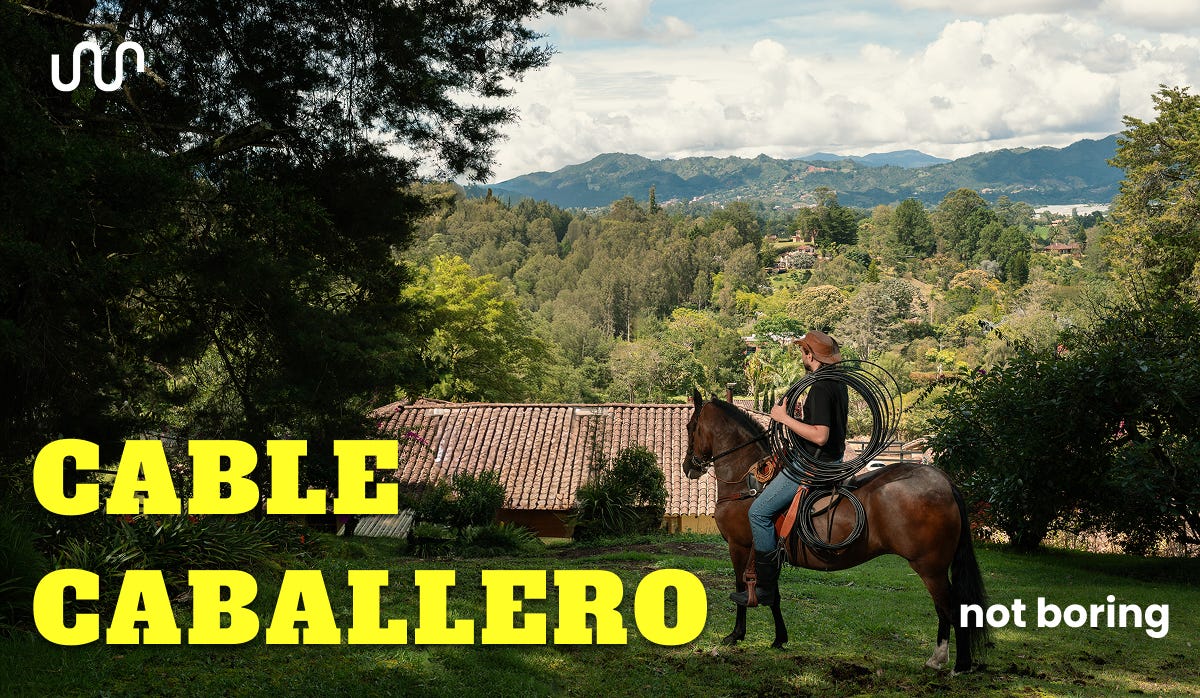



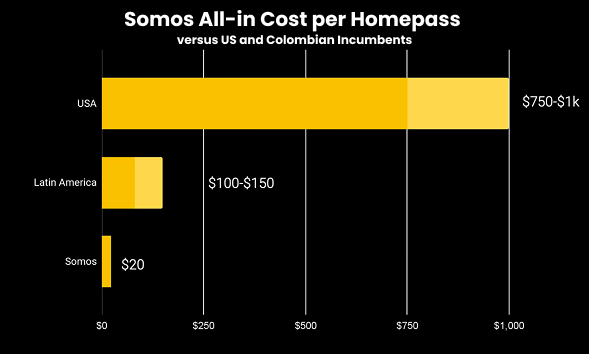
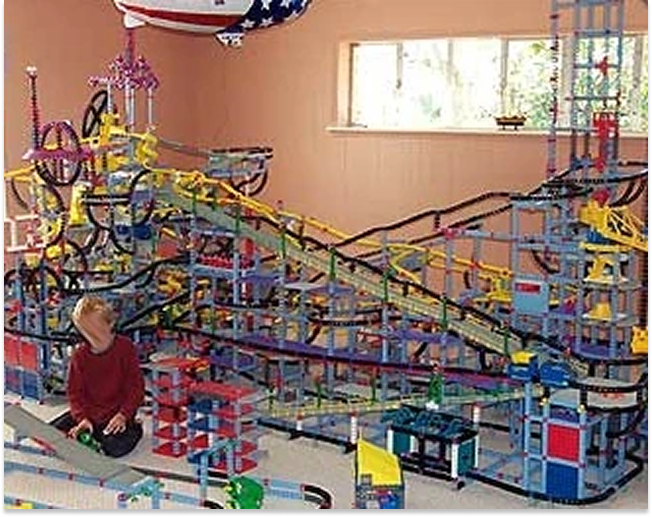



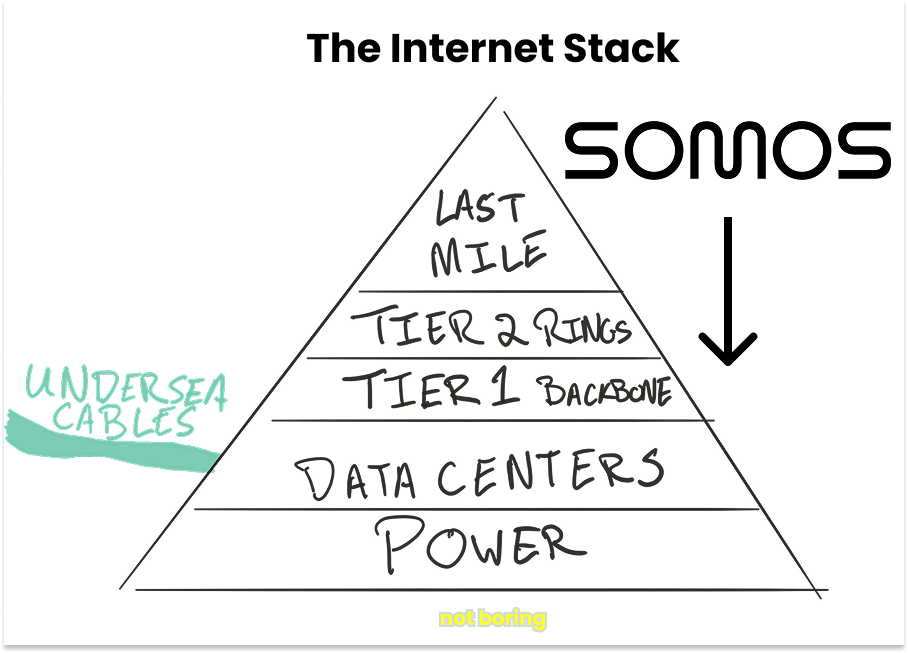
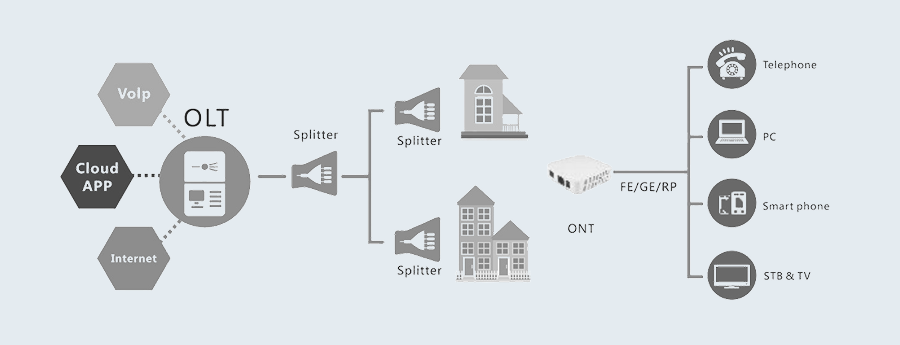
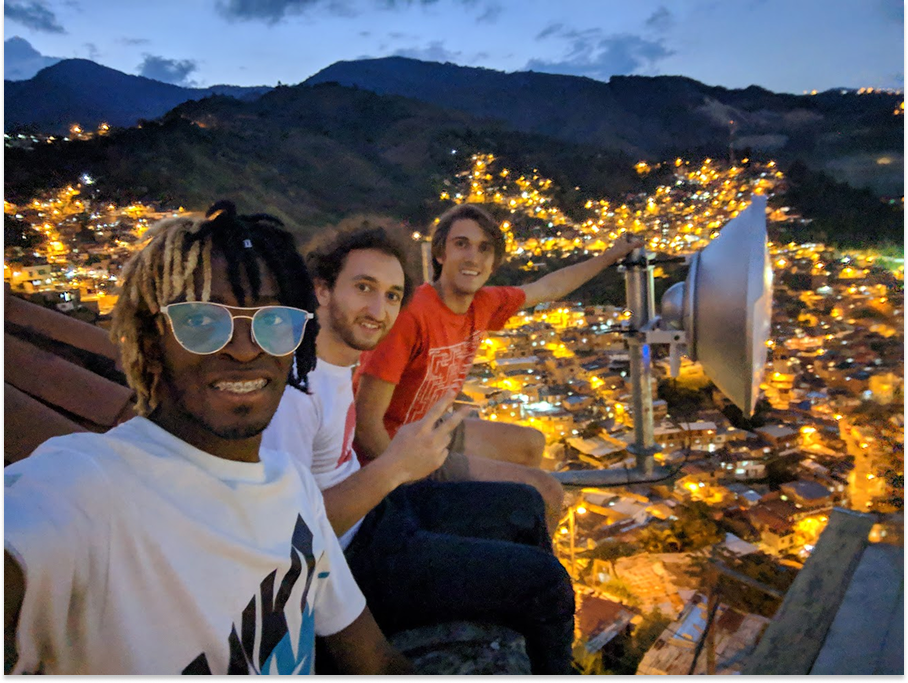

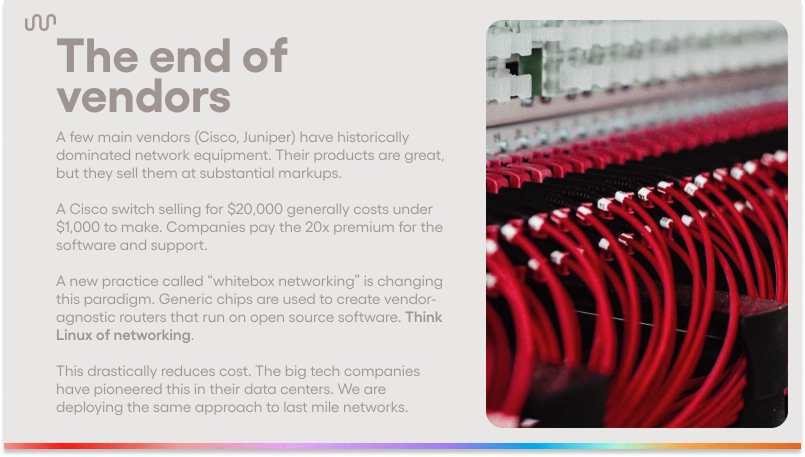


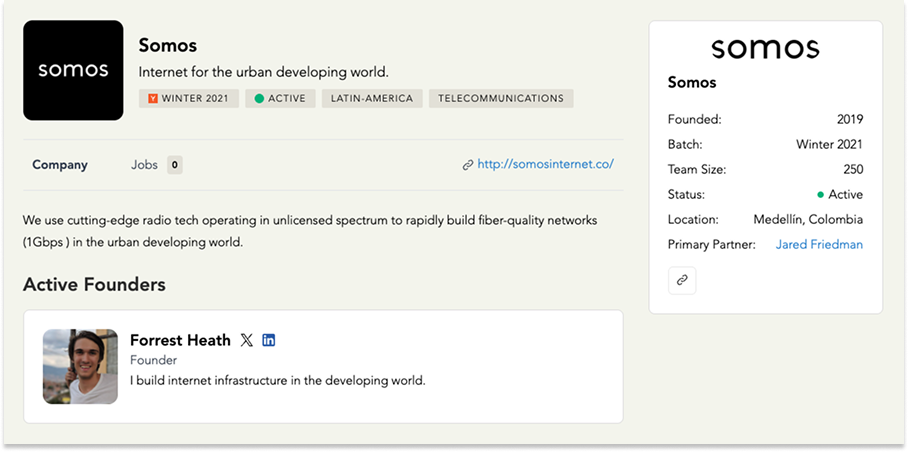
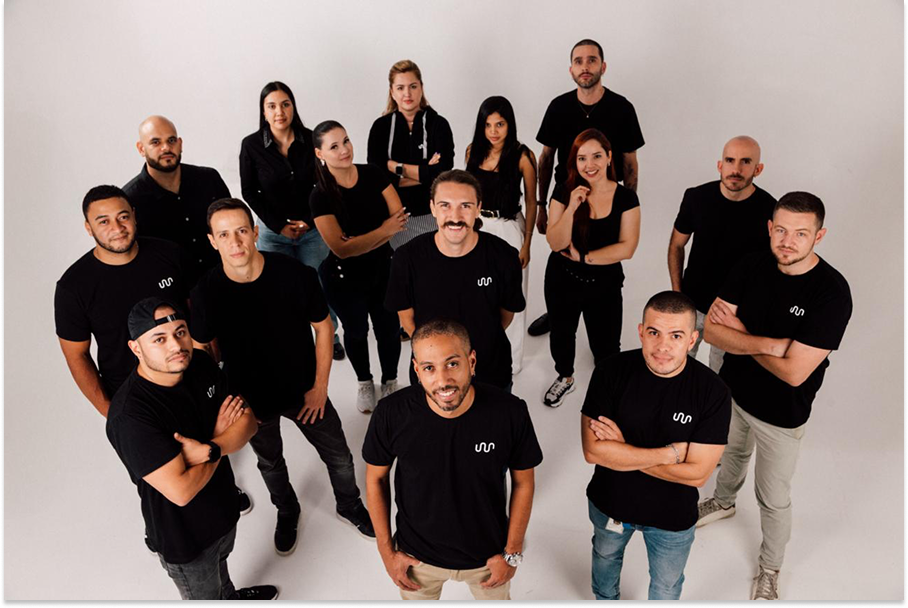


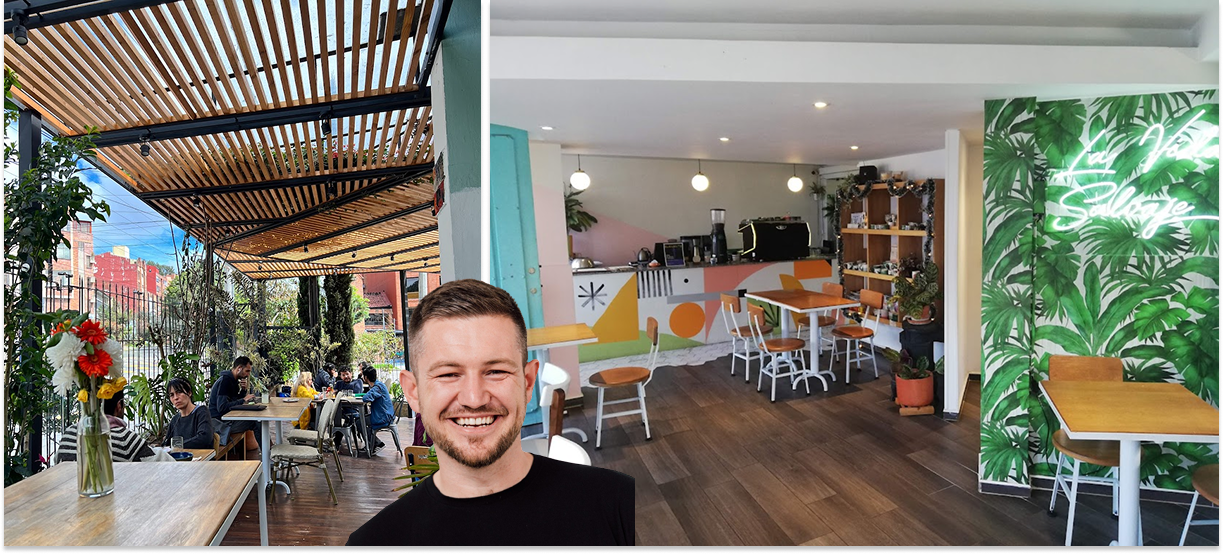
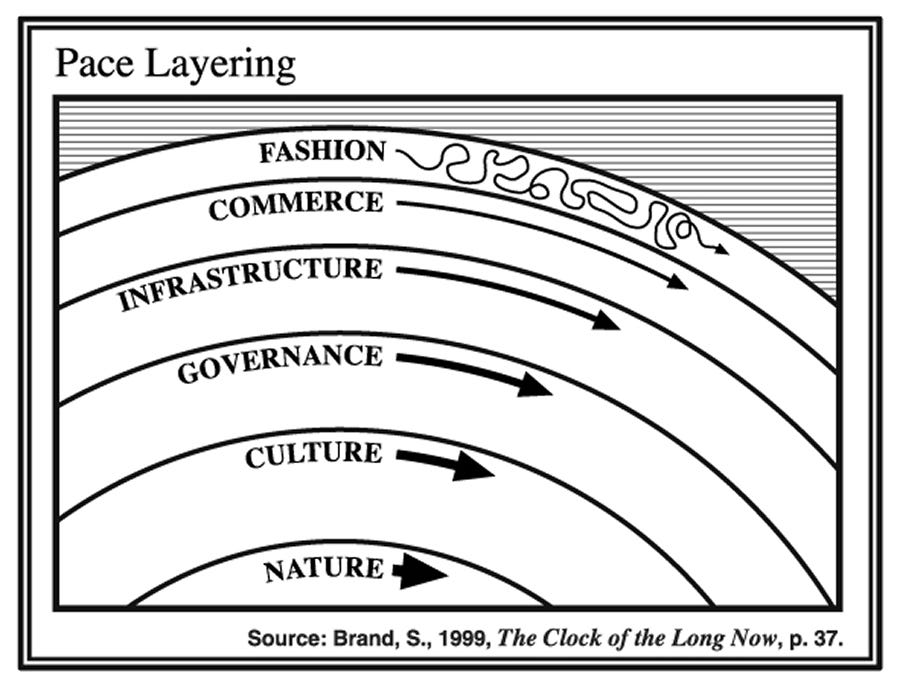
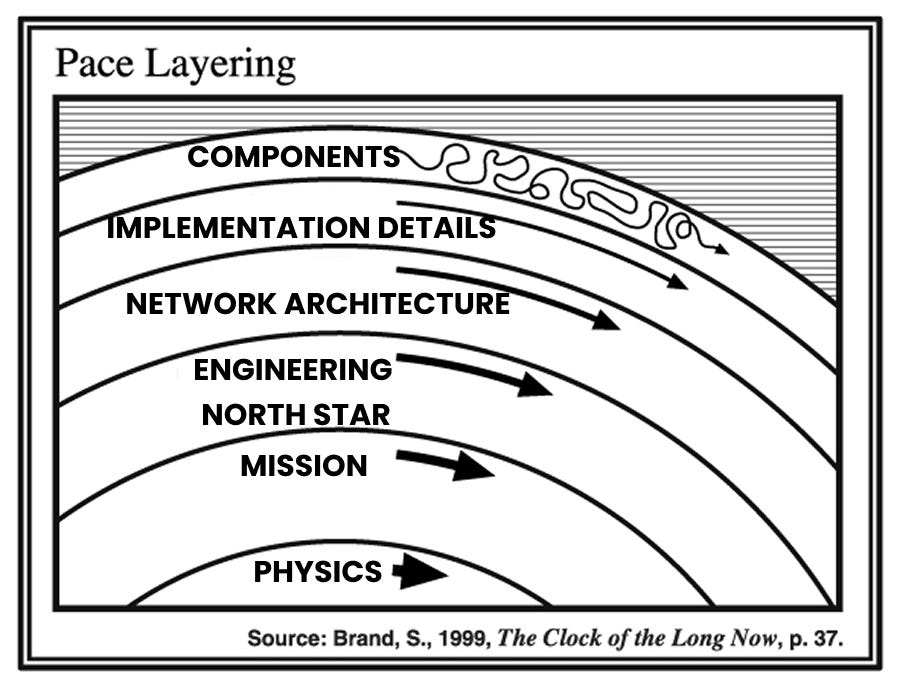


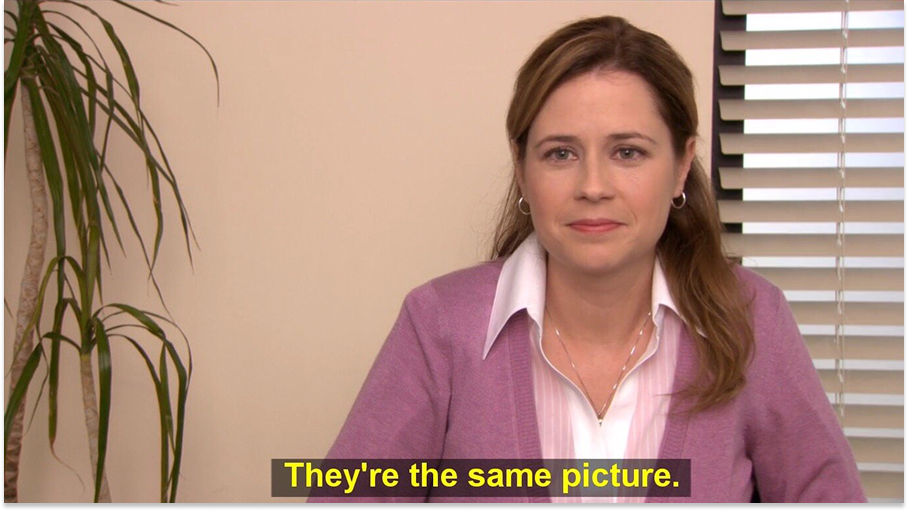
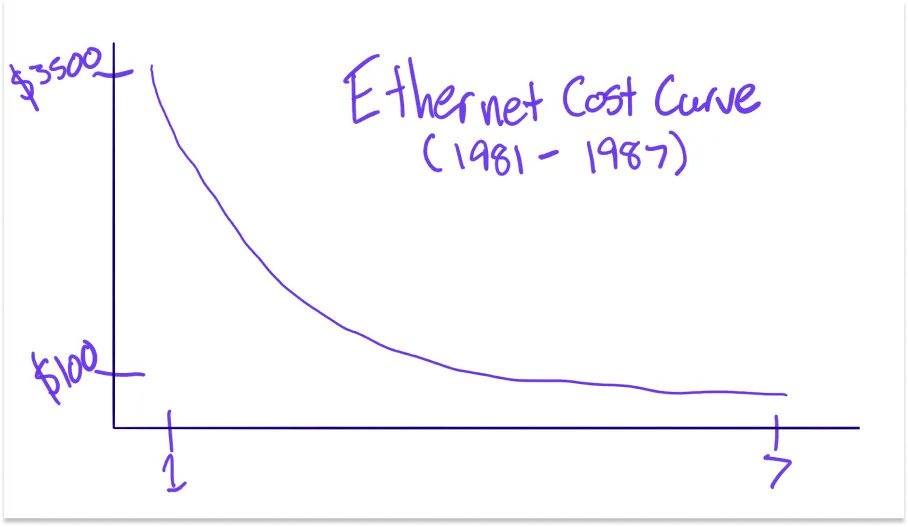
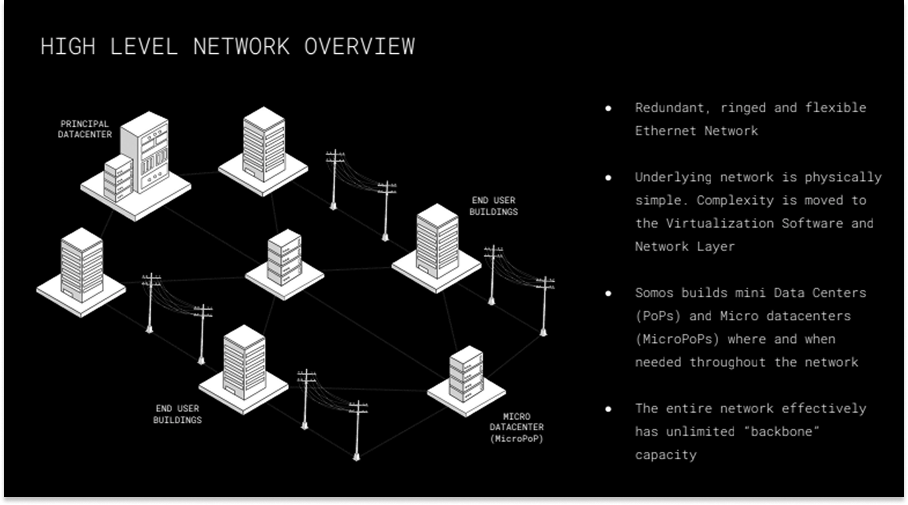





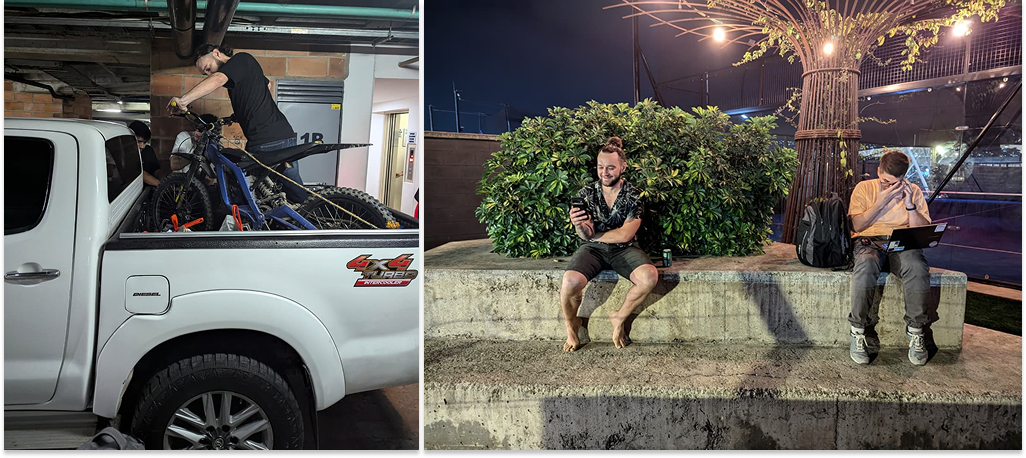
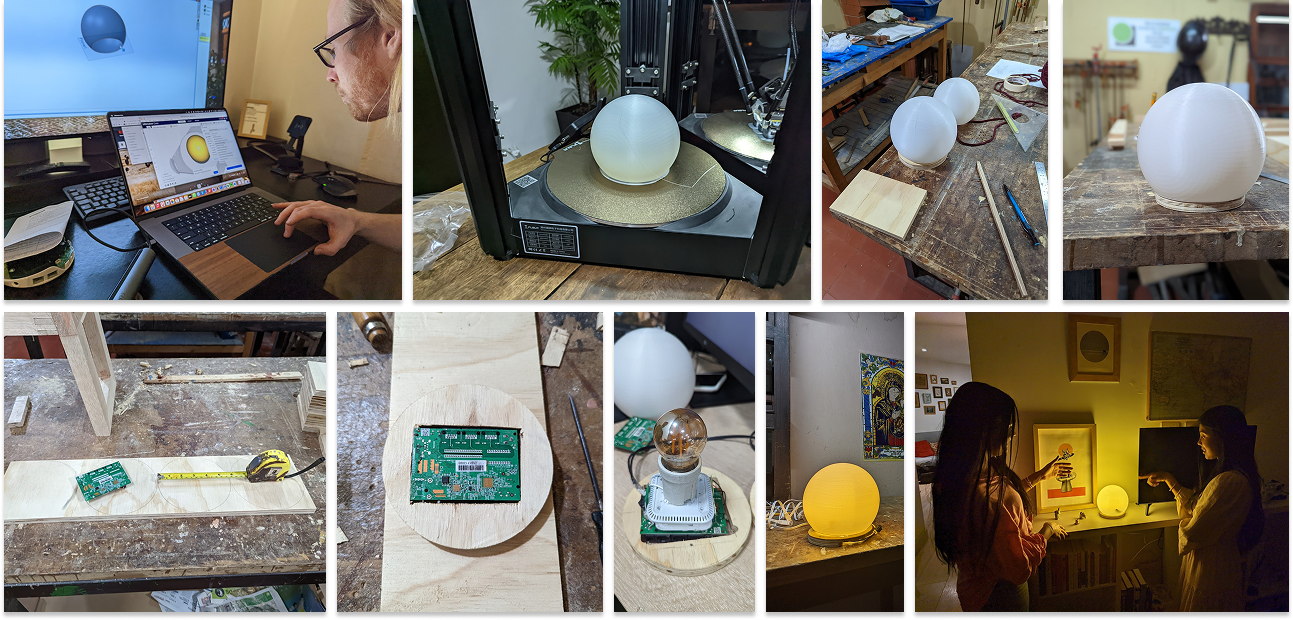
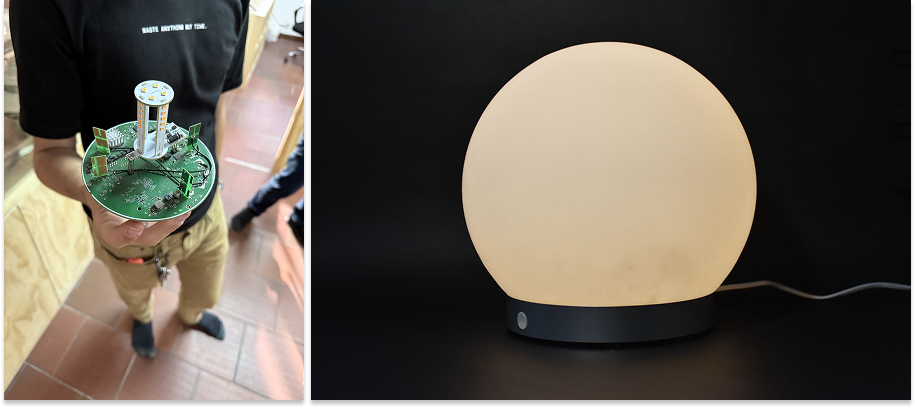
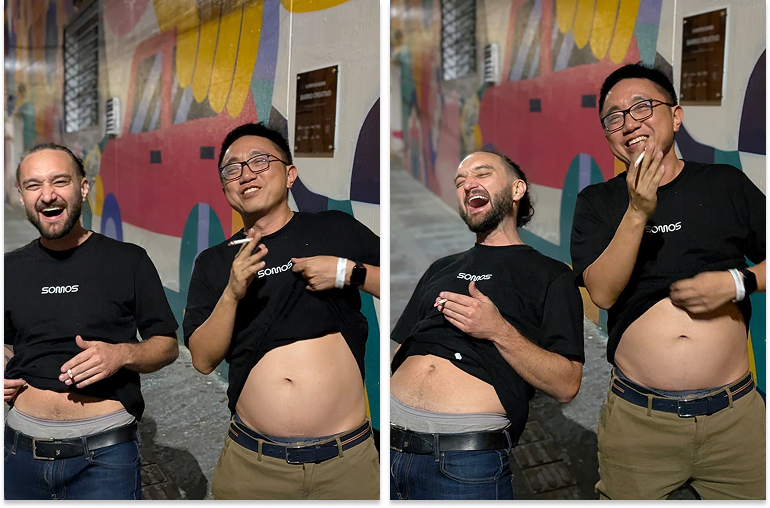


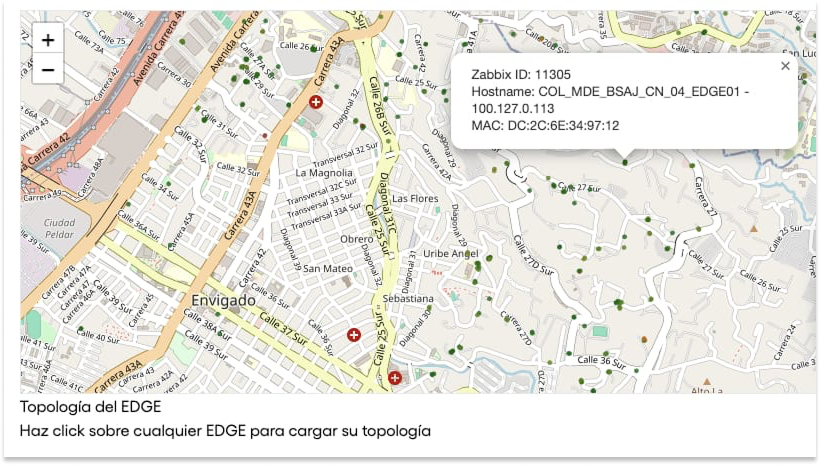
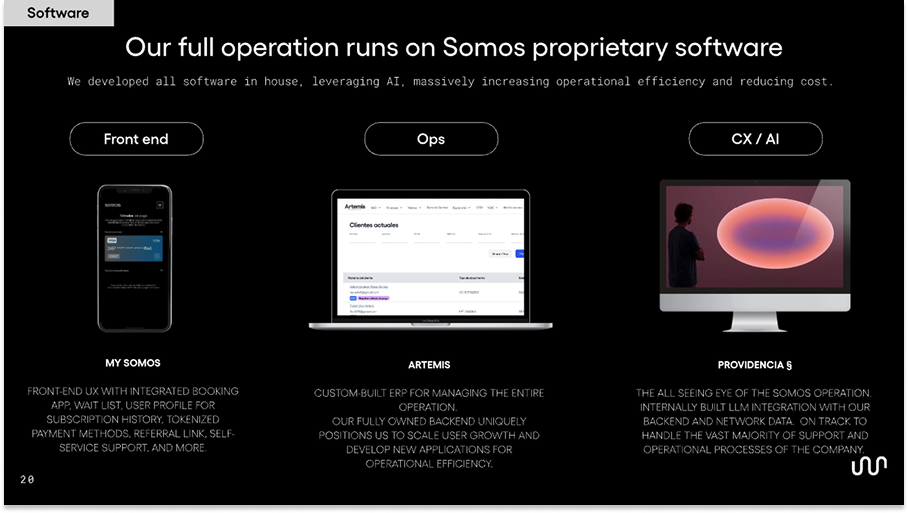
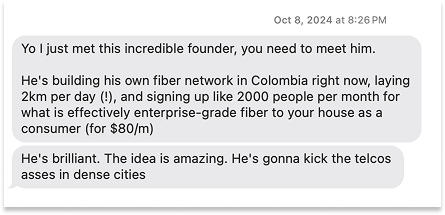

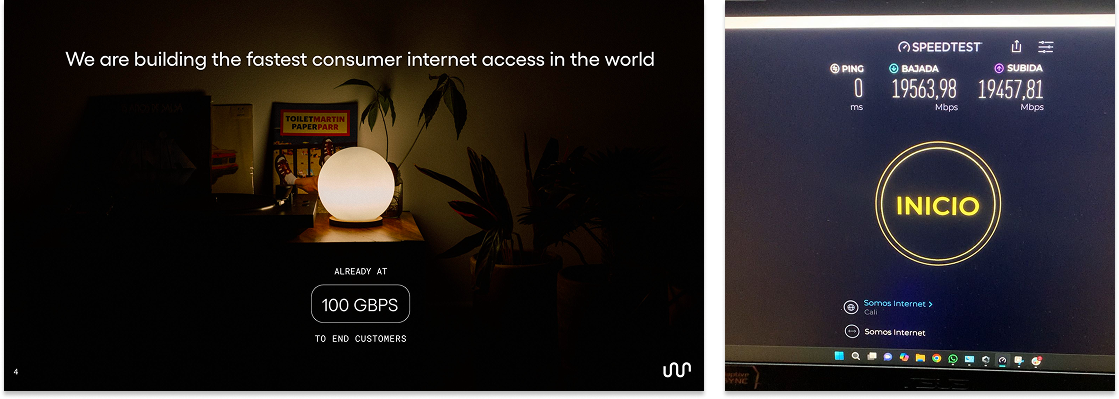
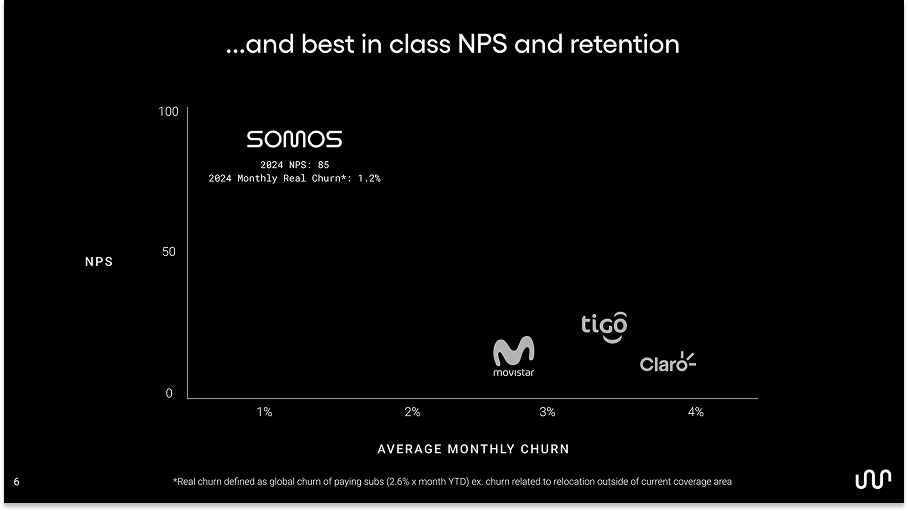
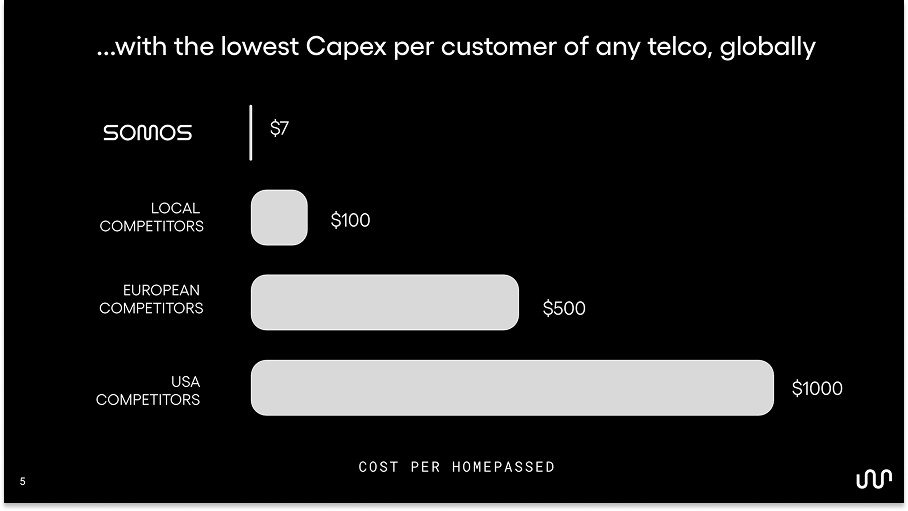
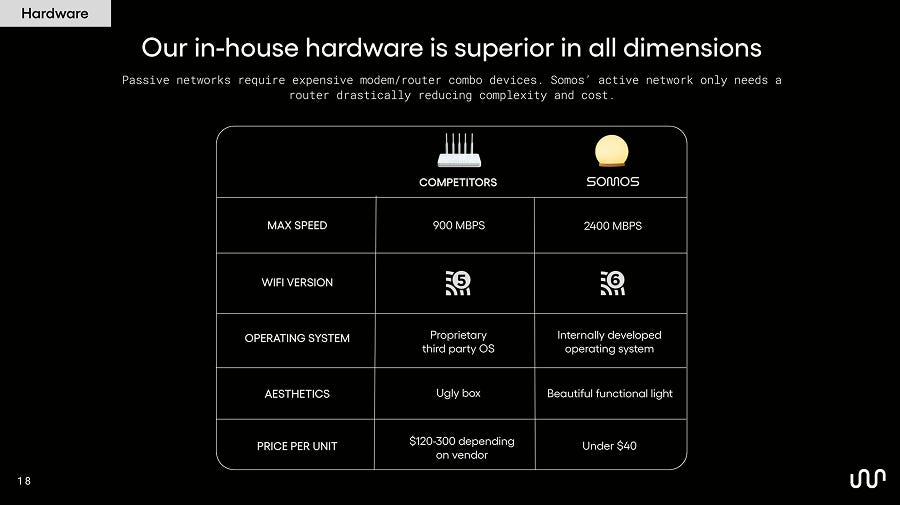
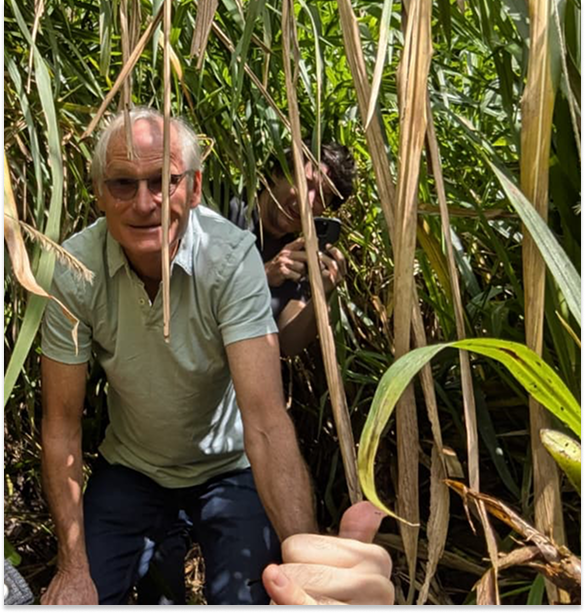
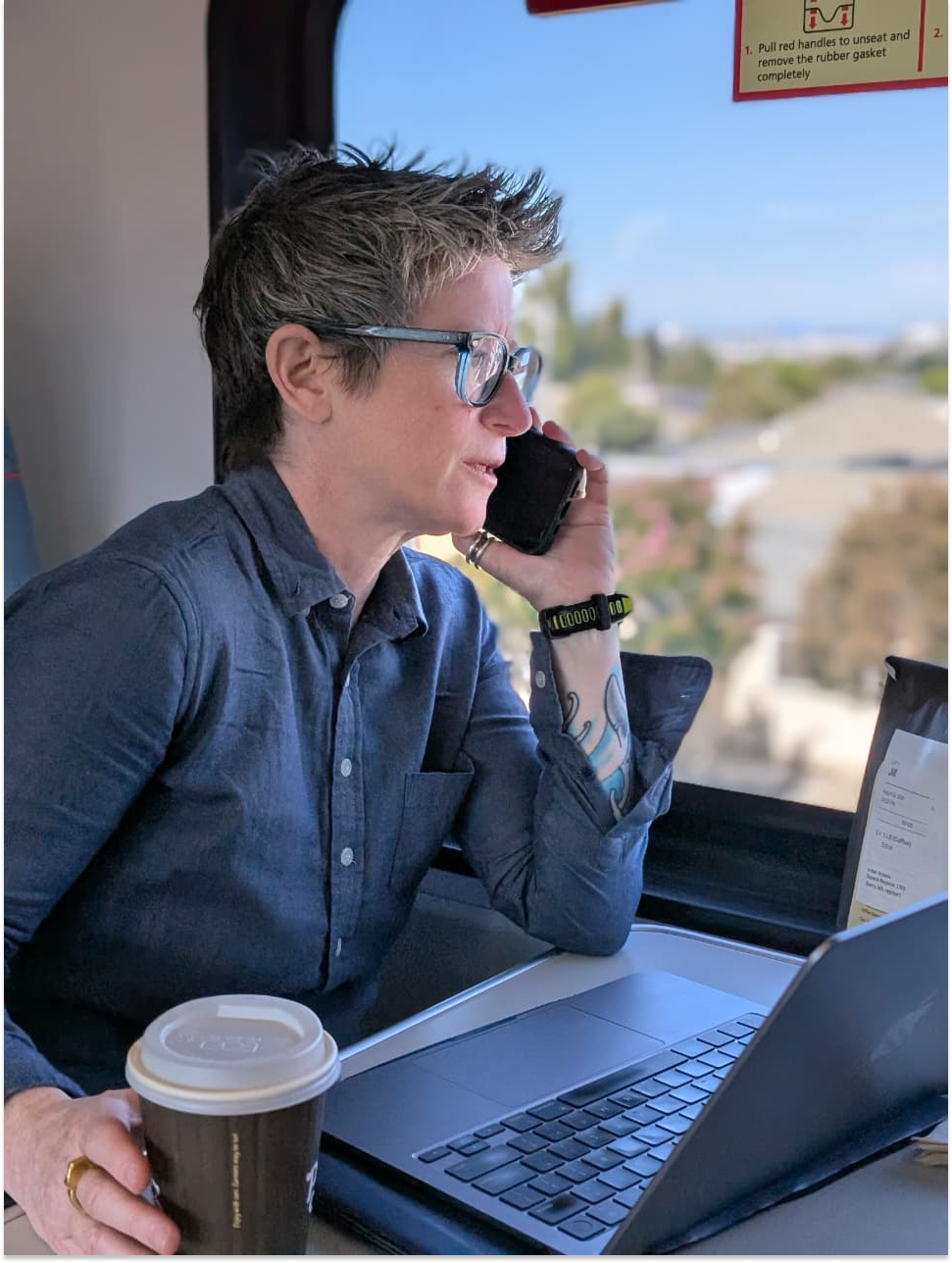
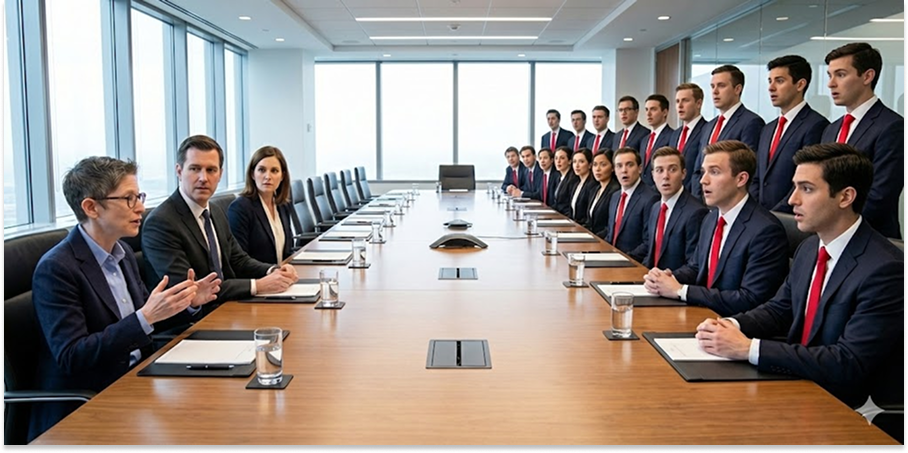


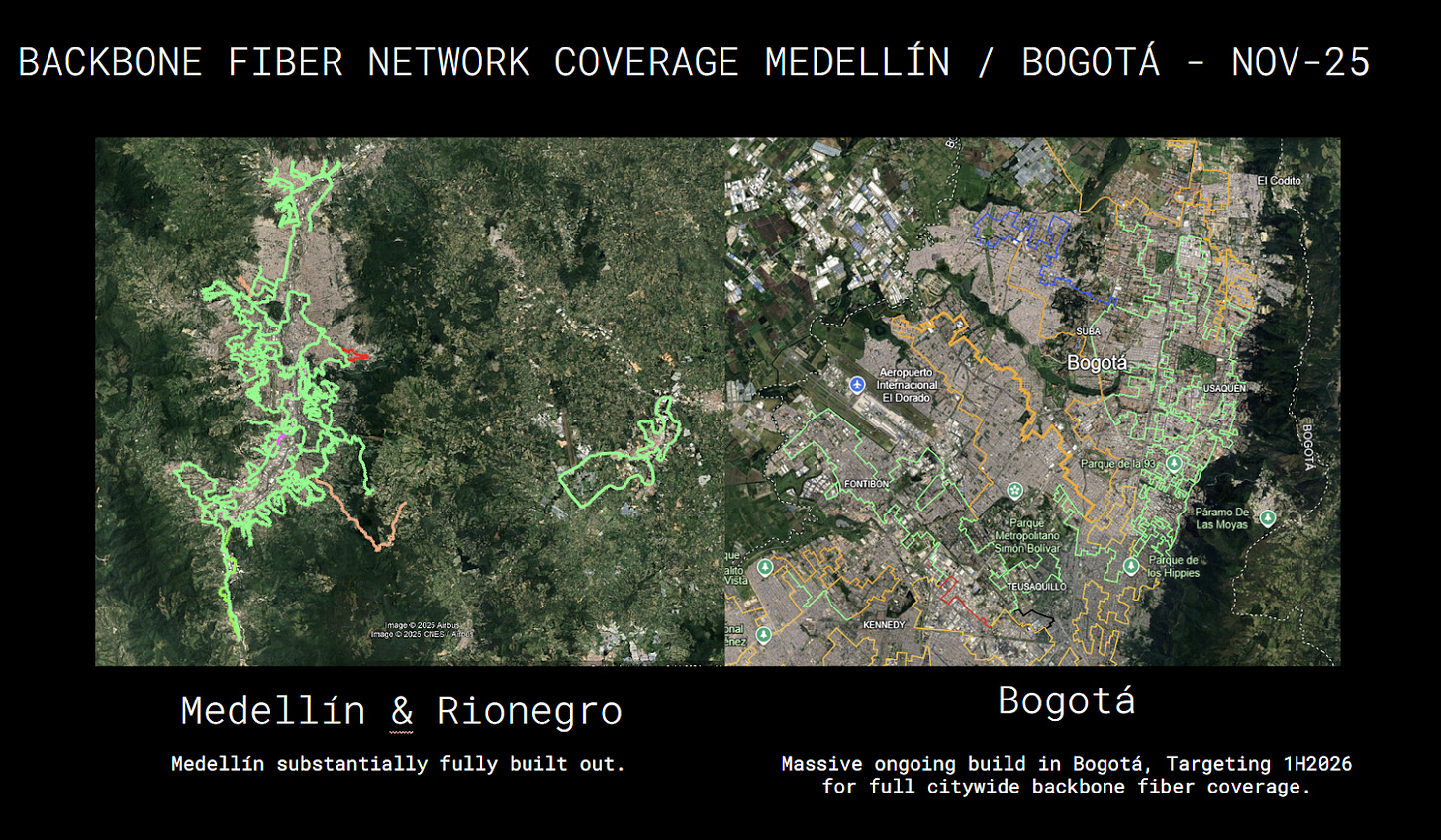
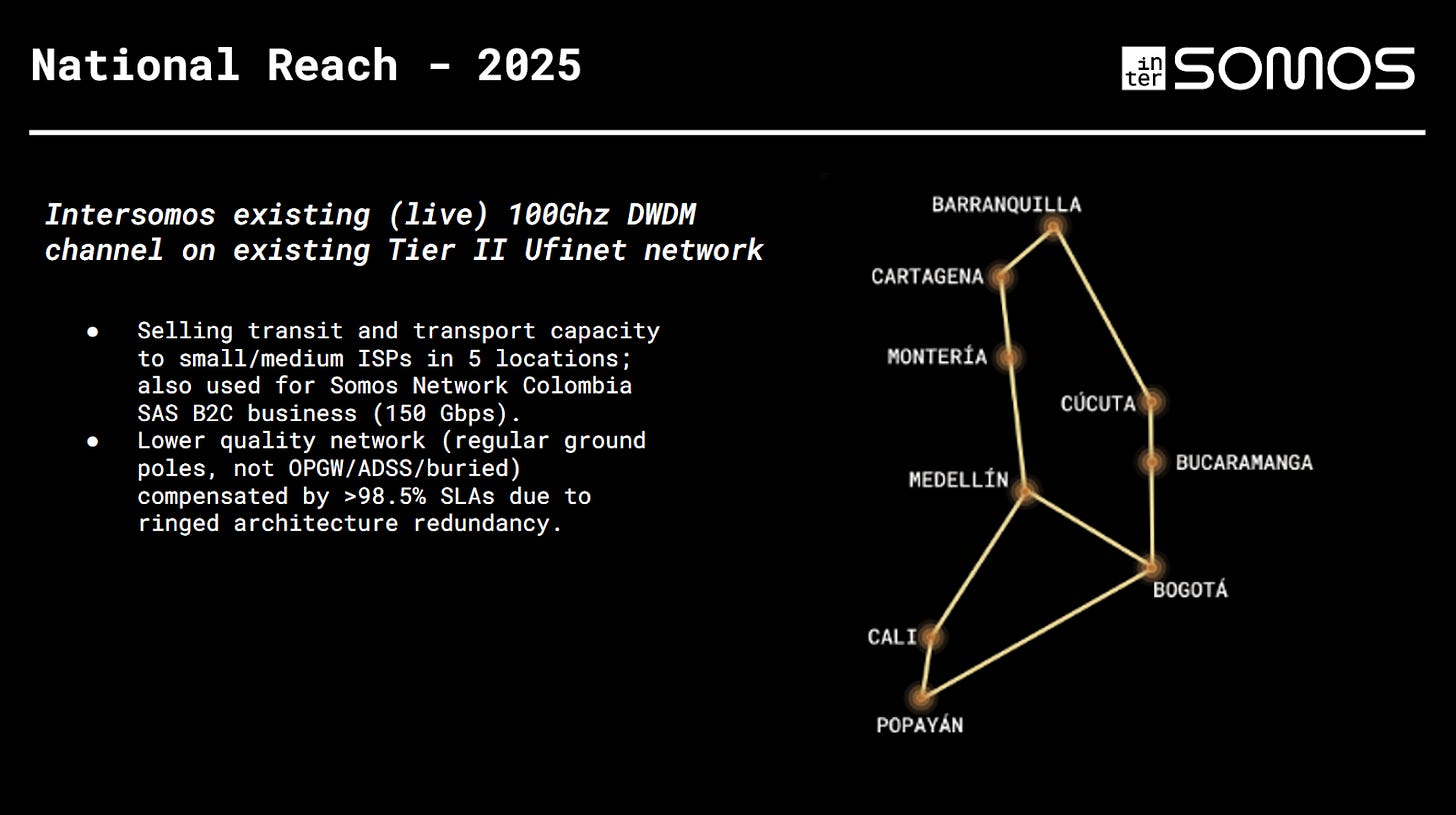

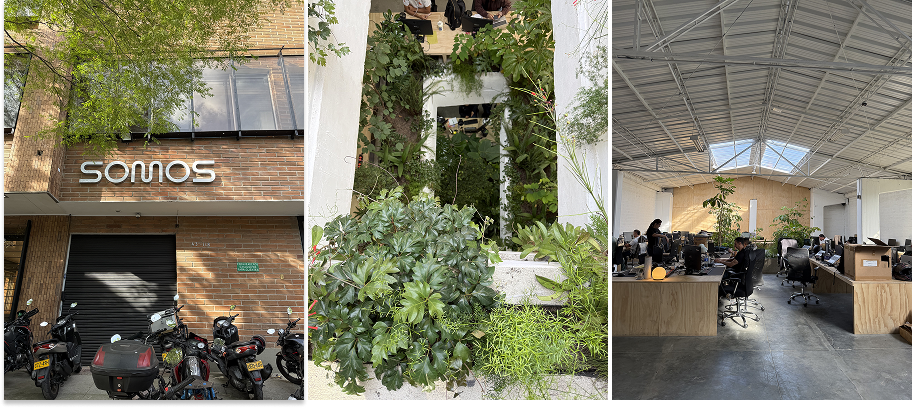
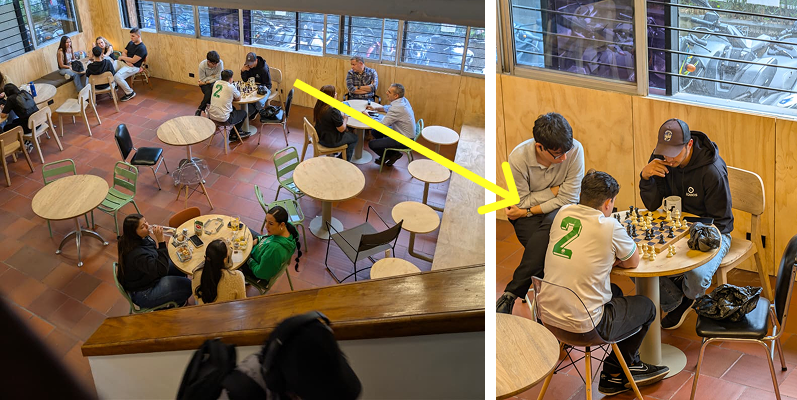



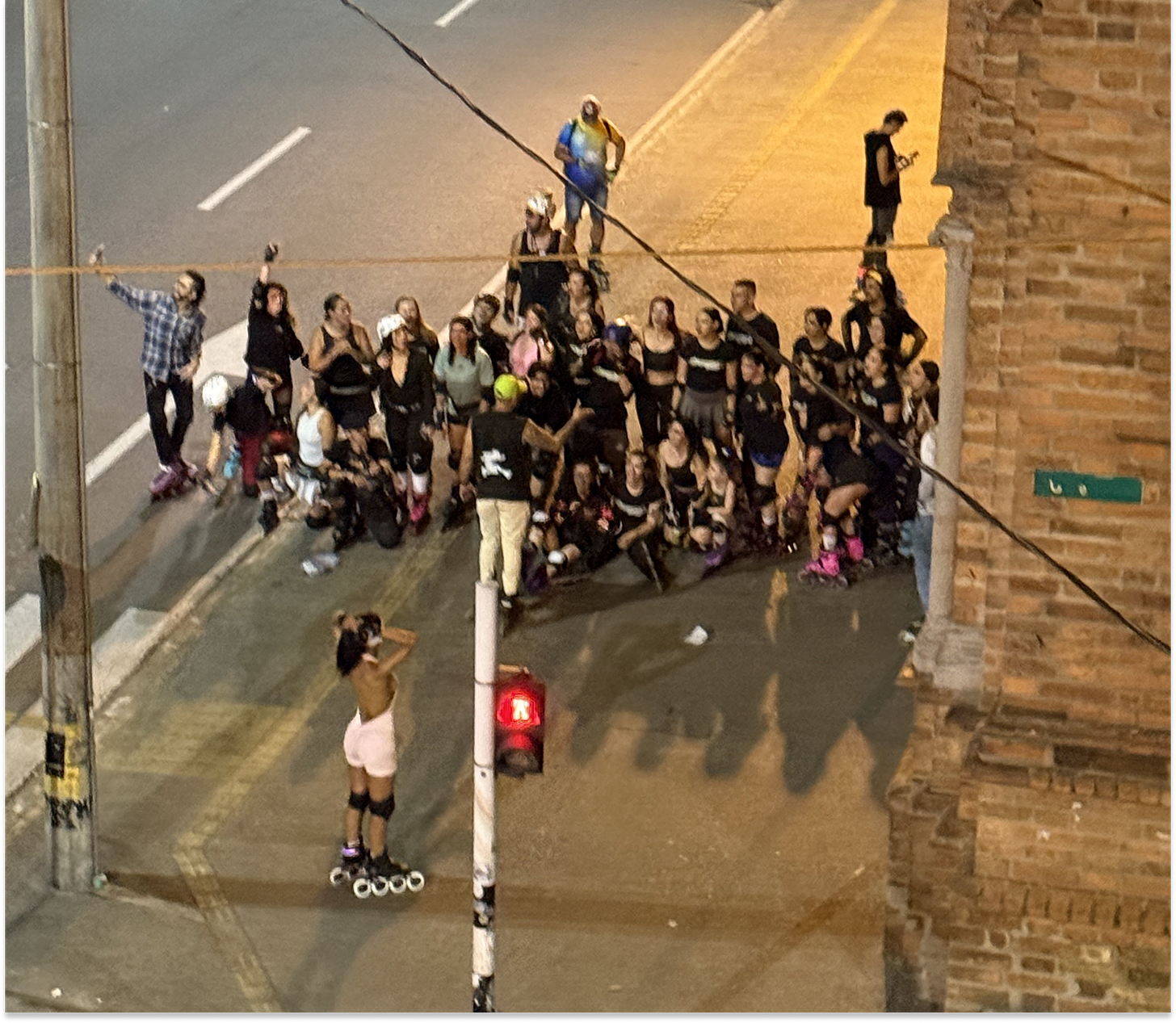




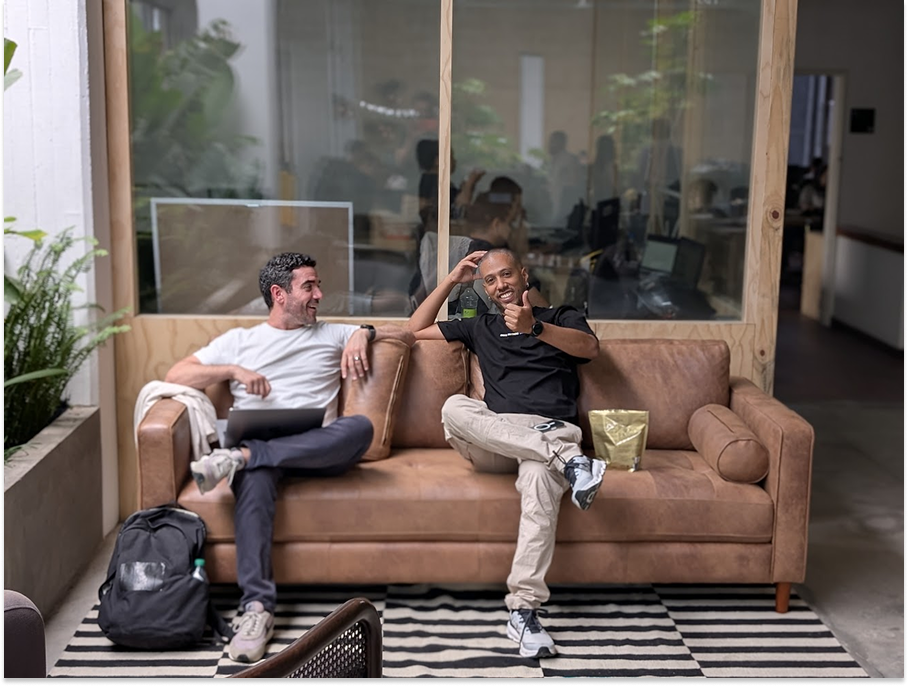
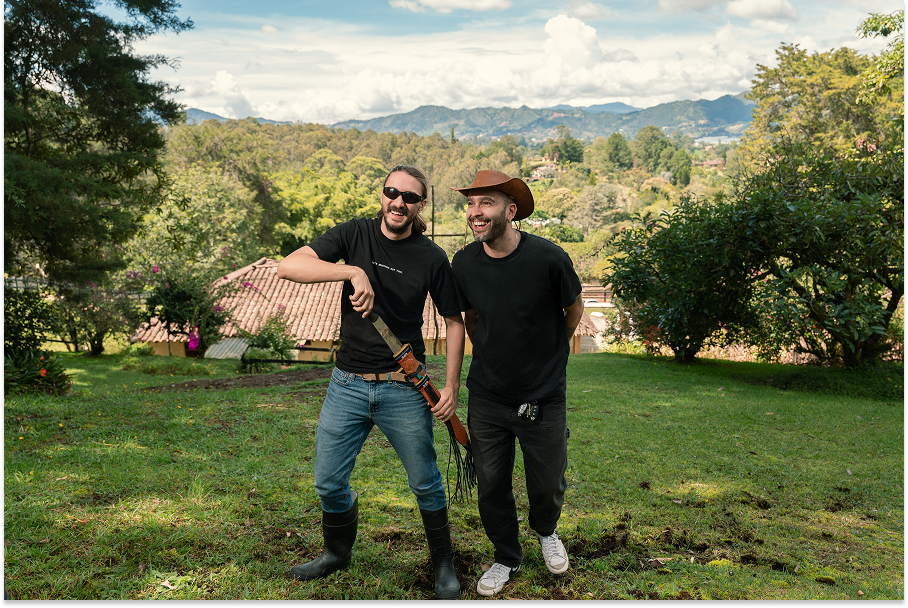

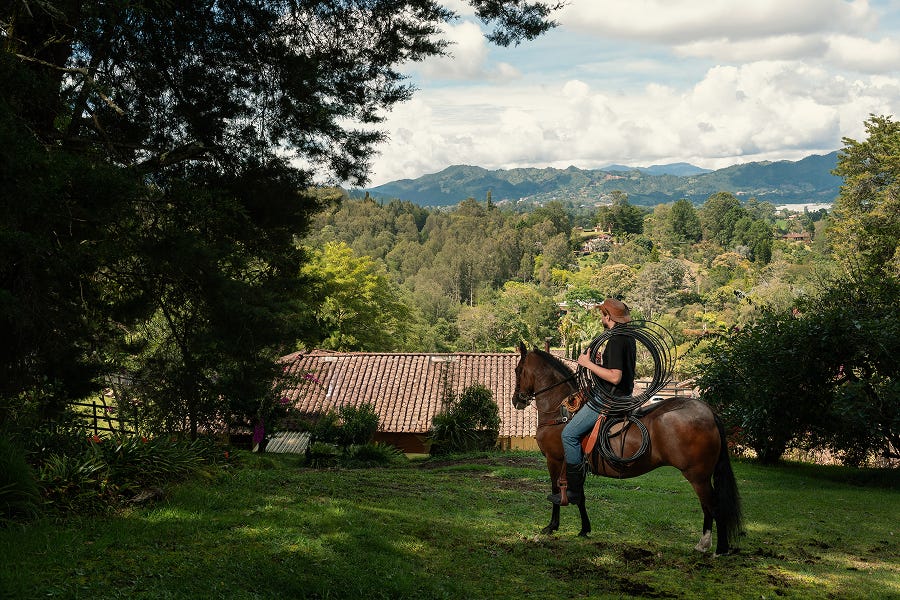
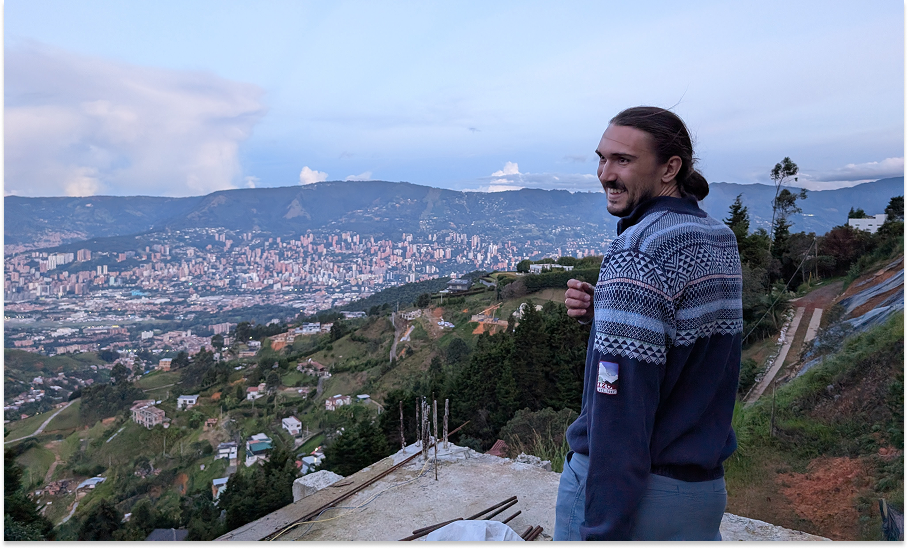
Fascinating read about a fascinating guy. Made lots of notes for near future research; looking forward to following along.